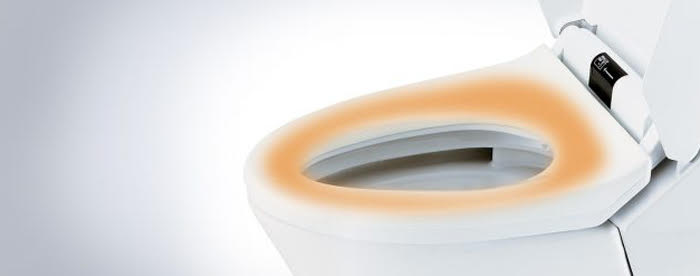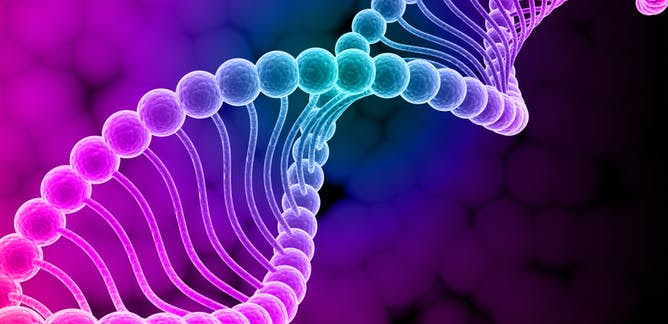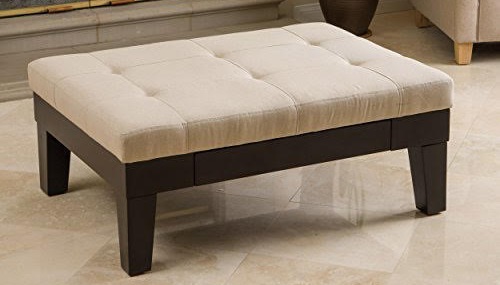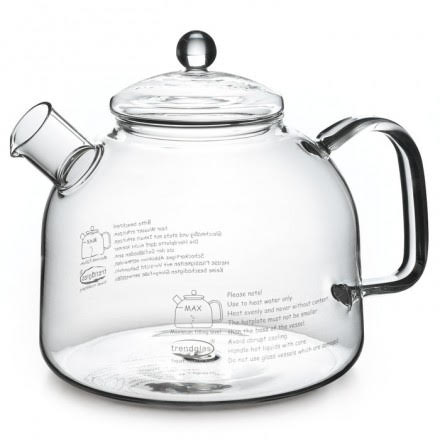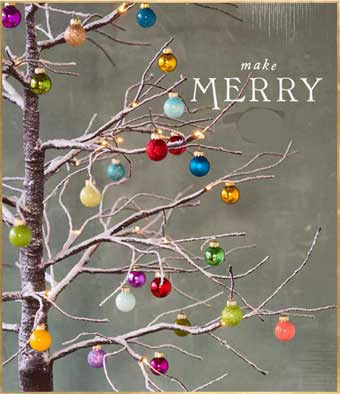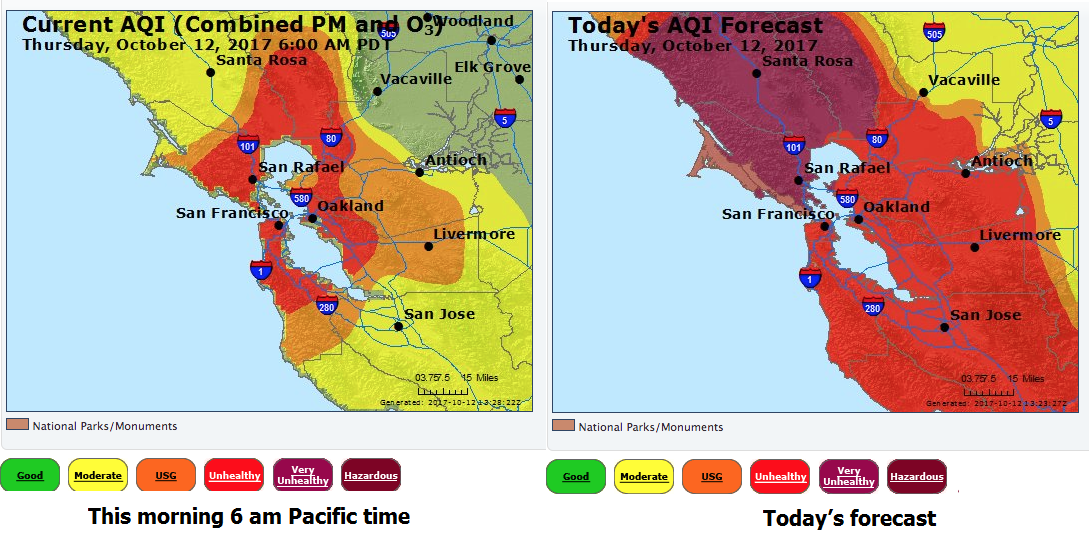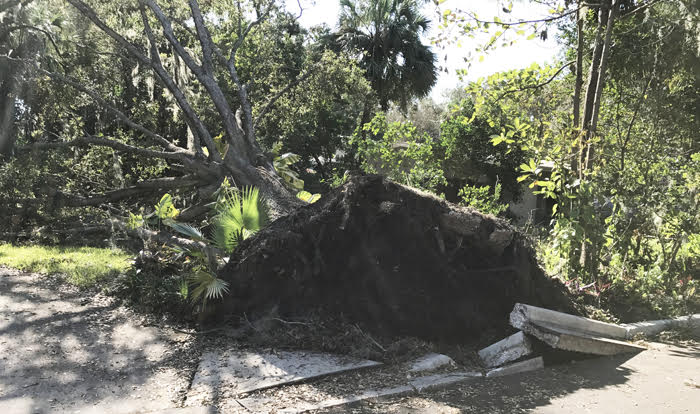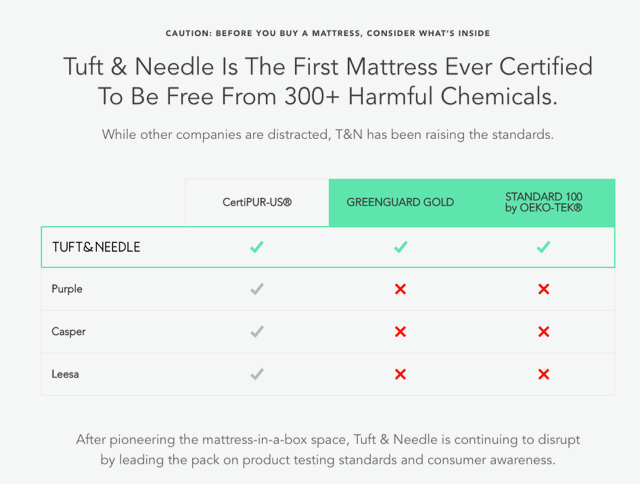
Travel
Urth Caffee
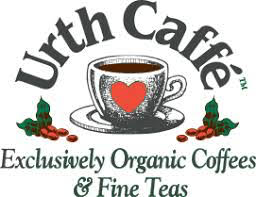 While driving down Main Street in Santa Monica, California one evening, I saw this tiny sign lit up in the dark that said “Exclusively Organic Coffees & Fine Teas.” I couldn’t stop right then, but went back the next day. It was crowded with a line out the door and Starbuck’s a block away was empty. “Founded in 1989, Urth Caffe is widely considered the first coffee roasting company in America to offer exclusively organically grown, heirloom coffees. Each season we choose the very finest beans from our farmers – carefully selecting only a small percentage of the crop representing the coffee’s finest seasonal flavor & characteristics. The flavor profile of our blends changes from season to season – always presenting exciting new characteristics. All our organic coffees are small batch roasted using secret, innovative techniques in roasting and blending developed by us, to give the coffee its full potential of depth and complexity of flavor…Heirloom means that the trees have never been genetically modified, and are like their ancient ancestors found growing wild in the rainforests. Heirloom species such as Bourbon, Geisha, Heirloom Culitvar, Typica (to name a few) can grow up to twenty feet tall, require deep shade, and produce less coffee yield than hybridized trees. Heirloom coffee has superior flavor, has a more distinctive aroma, and is naturally lower in acid for easier digestion. “ Their exclusive selection of fine loose leaf teas include black, fruit scented, oolong, green, white, matcha green teas, and herbal infusions. “Each source garden is carefully selected by Urth Caffé based on highest quality, commitment to purity, uniqueness, and sustainability.”
While driving down Main Street in Santa Monica, California one evening, I saw this tiny sign lit up in the dark that said “Exclusively Organic Coffees & Fine Teas.” I couldn’t stop right then, but went back the next day. It was crowded with a line out the door and Starbuck’s a block away was empty. “Founded in 1989, Urth Caffe is widely considered the first coffee roasting company in America to offer exclusively organically grown, heirloom coffees. Each season we choose the very finest beans from our farmers – carefully selecting only a small percentage of the crop representing the coffee’s finest seasonal flavor & characteristics. The flavor profile of our blends changes from season to season – always presenting exciting new characteristics. All our organic coffees are small batch roasted using secret, innovative techniques in roasting and blending developed by us, to give the coffee its full potential of depth and complexity of flavor…Heirloom means that the trees have never been genetically modified, and are like their ancient ancestors found growing wild in the rainforests. Heirloom species such as Bourbon, Geisha, Heirloom Culitvar, Typica (to name a few) can grow up to twenty feet tall, require deep shade, and produce less coffee yield than hybridized trees. Heirloom coffee has superior flavor, has a more distinctive aroma, and is naturally lower in acid for easier digestion. “ Their exclusive selection of fine loose leaf teas include black, fruit scented, oolong, green, white, matcha green teas, and herbal infusions. “Each source garden is carefully selected by Urth Caffé based on highest quality, commitment to purity, uniqueness, and sustainability.”
Just Skin Food
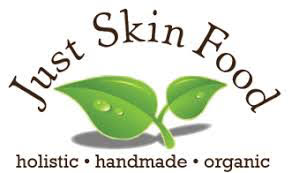 Skin care products for men and women, plus make up, all made from certified organically grown and wildcrafted ingredients. “By selecting botanical ingredients based on their beneficial properties, our products provide the healing effects of each plant. ..We make all the herbal oils, salves, balms, butters, soap, body scrubs, and lotion sticks by hand, by using various infusing methods with a range of organic herbs, unrefined, steam-distilled and cold-pressed ingredients.We also double infuse certain oils for therapeutic reasons in order to provide additional healing properties. It is through these raw materials that the color, texture and scent of the products are determined. Our products are made in small batches in order to pay attention to each step in the process and to keep the integrity and quality of the herbs and the essence without compromising the outcome…For packaging we use only glass, reusable or biodegradable products. Even our inside seals are made from certified unbleached chlorine free paper.” Ingredients page.
Skin care products for men and women, plus make up, all made from certified organically grown and wildcrafted ingredients. “By selecting botanical ingredients based on their beneficial properties, our products provide the healing effects of each plant. ..We make all the herbal oils, salves, balms, butters, soap, body scrubs, and lotion sticks by hand, by using various infusing methods with a range of organic herbs, unrefined, steam-distilled and cold-pressed ingredients.We also double infuse certain oils for therapeutic reasons in order to provide additional healing properties. It is through these raw materials that the color, texture and scent of the products are determined. Our products are made in small batches in order to pay attention to each step in the process and to keep the integrity and quality of the herbs and the essence without compromising the outcome…For packaging we use only glass, reusable or biodegradable products. Even our inside seals are made from certified unbleached chlorine free paper.” Ingredients page.
Branch Basics
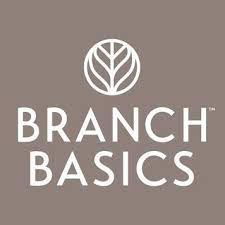 A multipurpose, unscented, plant-and-mineral-based concentrated “soap” that can be used for different cleaning tasks by mixing it with different amounts of water. Comes with labeled BPA- and phthalate-free plastic bottles that have markings for easy mixing of concentrations. For MCS they have a 2 oz all-purpose spray you can purchase as a sample to test. “We have taken every step we could to create a product that works even for very sensitive people.”
A multipurpose, unscented, plant-and-mineral-based concentrated “soap” that can be used for different cleaning tasks by mixing it with different amounts of water. Comes with labeled BPA- and phthalate-free plastic bottles that have markings for easy mixing of concentrations. For MCS they have a 2 oz all-purpose spray you can purchase as a sample to test. “We have taken every step we could to create a product that works even for very sensitive people.”
Nova Scotia Organics
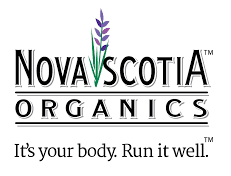 USDA Certified Organic whole food vitamins, minerals, and supplements…”We often use a production approach called the Whole Herb Method which uses the raw plant exactly as found in nature. Such plant preparations contain all the inherent constituents of the plant including the natural buffers, which help protect the body from overdose, toxicity and dangerous interactions. In contrast to many unregulated techniques that isolate a single biochemical constituent, we use the entire herb plant, allowing it to work synergistically to create the positive health effect Nature intended. Just about all of our herbal vitamins and supplements are simply whole herbs and plants dried using a gentle freeze drying process which preserves almost all of the nutritious properties of the original plant. Some formulations also add organic minerals if it is called for.” Choose from single vitamins or solution-based blends.
USDA Certified Organic whole food vitamins, minerals, and supplements…”We often use a production approach called the Whole Herb Method which uses the raw plant exactly as found in nature. Such plant preparations contain all the inherent constituents of the plant including the natural buffers, which help protect the body from overdose, toxicity and dangerous interactions. In contrast to many unregulated techniques that isolate a single biochemical constituent, we use the entire herb plant, allowing it to work synergistically to create the positive health effect Nature intended. Just about all of our herbal vitamins and supplements are simply whole herbs and plants dried using a gentle freeze drying process which preserves almost all of the nutritious properties of the original plant. Some formulations also add organic minerals if it is called for.” Choose from single vitamins or solution-based blends.
Blessed Nest
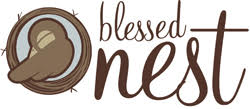 A unique nursing pillow filled with buckwheat hulls, which allows you to get your baby into the proper position, and then it conforms to baby’s body and its weight helps it to stay put, instead of simply placing your baby on top of the pillow. “The miracle of buckwheat hulls is that they not only move around like a bean-bag, but they are shaped like little pyramids that interlock together like puzzle pieces so it gives stable support whatever size, shape or position you are in (and where you’re sitting!).” All of theirfabrics are certified organic by GOTS.
A unique nursing pillow filled with buckwheat hulls, which allows you to get your baby into the proper position, and then it conforms to baby’s body and its weight helps it to stay put, instead of simply placing your baby on top of the pillow. “The miracle of buckwheat hulls is that they not only move around like a bean-bag, but they are shaped like little pyramids that interlock together like puzzle pieces so it gives stable support whatever size, shape or position you are in (and where you’re sitting!).” All of theirfabrics are certified organic by GOTS.
Essential Wholesale & Labs
 Certified organic bodycare bulk products and bulk ingredients. This allows you to purchase formulated UNSCENTED organic personal care products of all types in bulk, or purchase individual unscented ingredients and make your own. Then if you want scent, you can purchase the essential oils and add any scent you want. Products and ingredients are sold by the 1/2 gallon, gallon, and 5 gallon, but they also sell samples, so you can try before you buy in bulk.
Certified organic bodycare bulk products and bulk ingredients. This allows you to purchase formulated UNSCENTED organic personal care products of all types in bulk, or purchase individual unscented ingredients and make your own. Then if you want scent, you can purchase the essential oils and add any scent you want. Products and ingredients are sold by the 1/2 gallon, gallon, and 5 gallon, but they also sell samples, so you can try before you buy in bulk.
AcroAma Blends
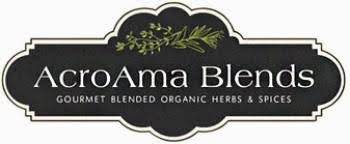 Chef-created gourmet seasonings that combine the superior flavor of Celtic Sea Salt® with organic herbs and spices. ‘We go beyond exquisite taste by utilizing handcrafted production methods that preserve the delicate oils and compounds Nature intended. Every blend is made in small batches with 100% organic ingredients to ensure a fresh, potent culinary experience. Naturally gluten free and vegan friendly….We begin at the source, with farmers and producers who are committed to sustainable organic processes. Our spices are selected from the finest certified organic gardens and then handcrafted into small batches for a gentler, healthier way to preserve their benefits and ensure freshness. Every blend is 100% organic and non-irradiated, containing no hidden fillers, fragrances, anti-caking agents, or ingredients of any kind.”
Chef-created gourmet seasonings that combine the superior flavor of Celtic Sea Salt® with organic herbs and spices. ‘We go beyond exquisite taste by utilizing handcrafted production methods that preserve the delicate oils and compounds Nature intended. Every blend is made in small batches with 100% organic ingredients to ensure a fresh, potent culinary experience. Naturally gluten free and vegan friendly….We begin at the source, with farmers and producers who are committed to sustainable organic processes. Our spices are selected from the finest certified organic gardens and then handcrafted into small batches for a gentler, healthier way to preserve their benefits and ensure freshness. Every blend is 100% organic and non-irradiated, containing no hidden fillers, fragrances, anti-caking agents, or ingredients of any kind.”
House of Mia
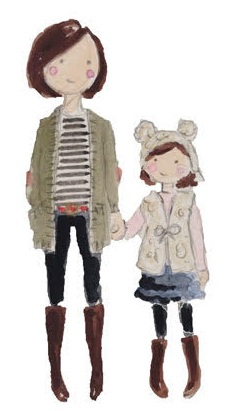 “Specializes in high quality, ultra-hip infant/toddler leggings, knotted headbands and newbord essential, including swaddle blankets and newborn knit hats. All of our products are made with 100% organic cotton.
“Specializes in high quality, ultra-hip infant/toddler leggings, knotted headbands and newbord essential, including swaddle blankets and newborn knit hats. All of our products are made with 100% organic cotton.
Onomea Tea Company
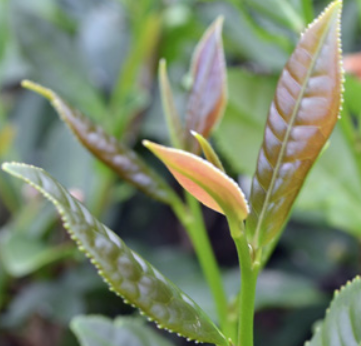 Certified organic teas grown in Hawaii. “Onomea Tea Company sits just above Onomea Bay on the scenic Hamakua coast of Hawaii Island. Stunningly beautiful, abundant rain with rich volcanic soils, it is ideal for making good, flavorful whole leaf Hawaii teas. We process the tea leaves into white, green, oolong and black teas and are excited by the exotic subtle, yet complex flavors achieved in this environment…we believe careful and healthful stewardship of the land contribute to healthy, flavorful tea and ensure the land stays clean and rich for the future generations.”
Certified organic teas grown in Hawaii. “Onomea Tea Company sits just above Onomea Bay on the scenic Hamakua coast of Hawaii Island. Stunningly beautiful, abundant rain with rich volcanic soils, it is ideal for making good, flavorful whole leaf Hawaii teas. We process the tea leaves into white, green, oolong and black teas and are excited by the exotic subtle, yet complex flavors achieved in this environment…we believe careful and healthful stewardship of the land contribute to healthy, flavorful tea and ensure the land stays clean and rich for the future generations.”
Bodega Portable Buildings

Clever design adds more space to this tiny building by popping out space in the back and side walls.
Since Larry and I are considering the possibility of a tiny house for our next residence, a flyer for Bodega Portable Buildings caught my eye as I walked by a local grocery store window.
When I went to their website, I learned that here in Sonoma County, California (and in surrounding counties), one can build a “storage building” of 120 square feet (8’x15’) without a permit. This can be used for a studio, shop, extra bedroom, reading room, exercise room or storage.
But there’s a bonus. These counties don’t count “window seats” as floor space. These window seat areas extend out beyond the foundation and can add considerable floor space, as they could hold actual window seats, counters, desktops, shelving units, closets, or whatever, allowing you to use the entire 120 square feet for living space.
I wanted to pass this along to all of you because I know many of you are needing an extra room or a tiny house for one reason or another. And this is a clever way to get one without permits and with extra space.
The peaked roofs and arches over window seat areas add considerable charm as well as loft.
This design for a tiny house appeals to me more than any I’ve seen. Two or three or a whole cluster of these could be brought together to make a house of any size.
And while they are not built on wheels as many tiny houses are, they are small enough to be easily portable on the back of a flatbed truck when the time comes.
This company builds and delivers these portable buildings. They are just down the road from us, so we’re going to go see them (if possible).
We’ll build our own because Larry has the skill and we enjoy building together, but if we couldn’t, one of these would now be at the top of our list. I haven’t checked all the materials yet, but I’m thinking they might be open to using materials other than their standard. I’ll let you know when I find.
Mostly, I’m in love with the design and the possibility for opening up the space out beyond the foundation.
Heated Plastic Toilet Seat
Question from John S
Hi Debra,
I love your site — you’re my go-to for the final word on toxics in our household.
We recently purchased a bidet seat for our toilet Bio Bidet Slim ONE Bidet Smart Toilet Seat in Elongated White with Stainless Steel Self-Cleaning Nozzle, Nightlight, Turbo Wash, Oscillating, and Fusion Warm Water Technology. When we received the package, we were dismayed to find that they proclaim the seat is made of “fire retardant ABS resin”.
I read in another one of your Q&A’s about ceiling fan blades that ABS plastic is most likely non-leeching in it’s final form, however this bidet has heated seats, as well as a tank of water in the back that it heats up.
Would you be concerned about sitting on a heated plastic toilet seat such as this? Or having the water spray on you from a (presumably) plastic tank?
We would love to know your thoughts. Thanks!
Debra’s Answer
I personally wouldn’t do this. Generally hard plastic doesn’t outgas, but when heated it DOES outgas.
I wouldn’t use this at all.
The Many Ways Carbon Felt and Fabric Can Help You Breathe Cleaner Air
I just want to tell you about a material that I’ve known about for a while, but am just learning all the ways it can help us with air pollution problems.
 The material is ACTIVATED CARBON in the form of FELT or FABRIC, a non-woven fiber made of pure anthracite activated carbon.
The material is ACTIVATED CARBON in the form of FELT or FABRIC, a non-woven fiber made of pure anthracite activated carbon.
Anthracite is naturally occurring mineral. It has the highest carbon content (between 92% and 98%.) and the fewest impurities and is the highest ranking of coal.
Most activated carbons are made from charcoal, which is made by burning various animal and vegetable materials.
So this is an extremely pure type of activated carbon.
Because it is made from 100% carbon, activated carbon felt has the advantage of being able to adsorb a large volume of volatile pollutants at a fast speed. It is widely used in solvent recovery, air purification, water treatment, gas masks, cigarette filtration, and in many other applications.
A sheet of activated carbon felt can adsorb volatile chemicals of many types in applications where an air filter may be impractical.
- emissions from interiors of new and used cars
- emissions from new mattresses
- smoke odors from furniture
- fragrance chemicals
- pet odors
- moldy odors in basements, lofts, and attics
- air freshener odors
- sofas
- kitchen and bathroom cabinets
- carpets
The limitation to using activated carbon felt is it cannot be sat on or washed because it contains no additives to bind the carbon together. To use, it needs to be encased in layers of natural fiber fabric. Place it in sun or wind to regenerate.
You can order Carbon Felt at Nirvana Safe Haven.
Carpet Problem

Question from Karen
Hi Debra,
There was work done recently in my apartment to make the floors less squeaky because it was bothering tenant below me. I have wall to wall carpeting and so what the maintenance guys did was drive multiple (30+) metal screws through the carpets to secure the floor boards more tightly. The screw heads were then sheared off.
I’m reacting strongly to whatever they did. No glues were used, just the metal screws. So I’m guessing the screws might have had a heavy coating of machine oil on them . Can’t think of anything else I could be reacting to. And it’s making me quite sick.
Do you have any suggestions for a carpet cleaner? The building manager is willing to clean the carpets for me. Any other suggestions? Im guessing I will need to ask them to rinse out the tank of the cleaner to get rid of the usual chemicals they use. What would be good for cleaning the carpet cleaner?
Thanks for your help. I’m having one of those domino effects since they did this work in my apt a few weeks ago and just reacting strongly to everything now.
Debra’s Answer
It sounds to me like putting the screws in your carpet opened up the latex adhesive layer in the carpet and also perhaps formaldehyde emissions from the subflooring.
Do you know the exact locations of where the screws are?
Foil for sure would block the emissions.
The challenge here is how to put something over the screws to block the emissions.
I don’t think cleaning the carpet would do it.
Readers, any ideas?
Yes there IS a Toxic Free Leather Sofa!

Custom leather sofa from Pine Street Natural Interiors
A few weeks ago one of my clients asked me if there was such a thing as a leather sofa without toxic chemicals. She knew leather sofas are usually filled with toxic polyurethane foam and fire retardant chemicals, plus there are more chemicals used to tan the leather.
I hadn’t heard of a nontoxic leather sofa, but I asked my friend Rowena Finegan, owner of Pine Street Natural Interiors, and she said she could make one for me, and yes, there IS natural leather!
Rowena has developed her own line of custom upholstered furniture called Inside Green.
Here are the materials used to make an Inside Green sofa:
-
- FSC certified Wood Frames and Legs: Wood frames are made from sustainably grown Alder from well-managed American forests
- Non-toxic Fasteners and Finishes: Each piece of wood is fastened with steel screws, and double-doweled with non-toxic, water based glue. A combination of hemp webbing, jute, and hemp burlap finish out the frame.
- Cushions: Layering of your choice of wool fibers, or organic goose feathers and down, with 100% pure natural latex padding. Premium quality wool batting comes from regions where the soil is continually turned, pesticides are forbidden, and sheep are still herded with the use of guardian dogs. Goose feathers and down are sourced from farms that raise geese for food consumption—completing a vertically integrated business model which is both financially and ecologically beneficial to local economies and the end consumer. The totally chemical-free feathers and down are separated by hi-tech machinery and are washed in biodegradable emulsifiers before being packed into 250-thread-count, 100% organic cotton covers.
- Pure, Petroleum-Free Latex: The foam that both covers the frame and is used for the cushions is natural latex, harvested from an environmentally friendly renewable resource procured from rainforest trees.
- Upholstery: organic cotton/hemp canvas. All fabrics presented with the line have been laundered in chemical-free vegetable-based laundry detergent and are either certified organic or have been produced using chemical-free base cloth and vegetable or low impact dyes.
- Finishes: WOCA natural oil stain—plant-based, sustainable, and non-polluting and contain no artificial pigments or preservatives. Along with being a naturally durable substance, oil-based stain also protects against scratches and indentations better than a standard urethane finish.
A sofa can be built in any size or style using these materials, and you can also get it upholstered with the healthiest leather I’ve seen.
EcoPell vegetable-tanned leather is made in Germany. Rowena loaned me a sample book and swatches to take to my MCS client and she had no reaction at all. The swatches actually just smelled like natural leather—no chemical smell. See all the leather colors and weights you can choose from.
This leather is regularly tested for chemicals frequently found in leather and publishes their test results. It has been certified by several organizations as being particularly environmentally-and allergy-friendly.
There is actually so much information about any and how this leather is good you just need to go to their website and read all about it.
This exceptional leather sofa is not inexpensive, but it CAN be made—in any size, style, and color that you desire.
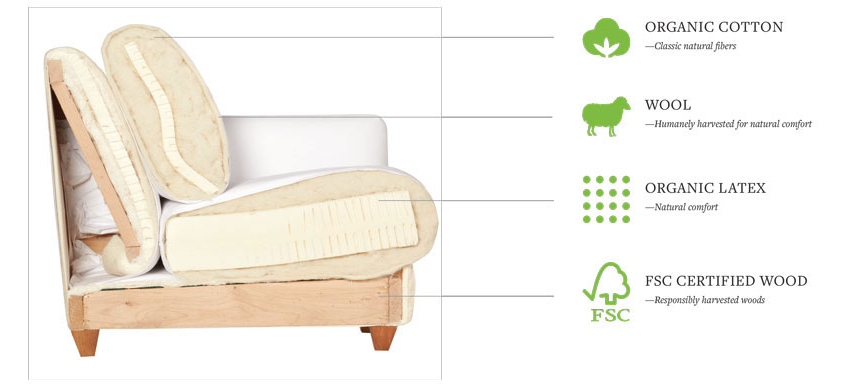
FINDING HEATERS FOR “BAKE OUTS”

Five years ago I posted INSTRUCTIONS TO “BAKE OUR” TOXIC FUMES, which originally appeared in my now-out-of-print book Home Safe Home. Many readers since have used this method of heating rooms to make chemicals from paints, finishes, and other building materials outgas more quickly.
I’ve done this many times over the years, like when I would paint a room before there was no-VOC paint. I would just put my oil-filled radiator space heater in the room, close the door, leave it overnight, and in the morning open the windows and that was all that was needed.
Occasionally someone would call me and say I need more heat. How hot does the room need to be? I tell them to rent “an industrial heater.” And they do and it worked.
A couple of weeks ago I received an email from a reader saying the method wasn’t working for her. She heated up her space, even individual rooms, and the smell wasn’t decreasing.
We’ve been trying to figure out what she should do and the only thing I can come up with is “more heat.”
But she was’t able to find a heater.
I went out to look for heaters as well.
If you have done a bake out and needed more heat than ordinary room-size space heaters, please leave a comment and let us know what type and size heater you used and where you got it. Please be as specific as you can.
Here are some things I learned.
There are three key numbers to understand when looking for a heater: watts, volts and BTUs.
Watts are the amount of energy you need to power the heater.
Volts are the amount of energy coming out of an electric plug. An ordinary house electric plug is 110 volts. Some plugs, such as those for electric clothes dryers and electric stoves, are 240 volts.
BTUs are the measure of heat that is produced by the heater.
To get enough heat for a bake out, you need to use a heater (or heaters) to provide enough heat for the size of the room. The general rule of thumb is you’ll need roughly 10 watts of heating power for every square foot of floor area in the room. So a 1,500-watt heater can be the primary heat source for an area measuring up to 150 square feet (that’s 10’ x 15’).
My oil filled radiator heater uses a 110 volt plug, can be set to produce various amounts of heat up to 1500 watts, which is enough to heat 150 square feet.
This article is very thorough about different types of heaters and how to choose one for energy efficiency, but it will also help you understand types of heaters for bake outs: SYLVANE: Heater Buying Guide
One problem my client is running into is that she has an open plan of 600 square feet, so that would require the equivalent of four 1500 watt heaters.
A problem I run into is I am usually living in older houses with older wiring and I blow out the circuits.
I did find an electric heater at an equipment rental place that runs on a 240 watt plug, but my client’s stove is gas and she doesn’t have a clothes dryer, so she doesn’t have the plug. And it’s for professional use only.
OK that’s all I’m going to say on this.
Anyone have any knowledge or experience about heaters?
Let’s figure this out together so we have this data here.
Removing Sizing From Fibers

A reader wrote to me last week asking:
I have gone through about 4 different companies flour sack towels only to find they don’t absorb even the smallest amount of water. What happened? They used to be like paper towels and absorbed everything. What has been added to them to make them like polyester? They just smear the water around. Were they “conditioned” with something? It’s like using linen or polyester. Do you have any suggestions of a company that carries the old fashioned ones?
But before I could post her question, she wrote back and said:
No need to post my question as I figured it out! Yea!
For others if you ever get asked, they are now putting sizing in fibers, not just the material as a whole which means they soak up no water. So, soak in vinegar for 1-2 days and it eats it off, then wash like normal.
I did just one and compared it to an untreated one and was happily shocked to see the change.
Also vinegar is an amazing rust remover. I needed to refinish an indoor door and the hinges had some rust on them. I soaked in vinegar for a day and the rust just floated off. Be careful tho, I also soaked what I thought was a copper lamp base, but turned out it was layered over pewter and the vinegar ate the finish and left the pewter. Dang! Thanks again.
Airfryer
Question from Gustavo
Hi Debra,
Do you have any concerns for Airfryer? Can’t seem to find your comments regarding this on your website! I wonder if they are safe for use or are as dangerous as microwaves
Thank you!
Debra’s Answer
My concerns about the Airfryer are the same as with any other cookware or cooking appliance: nonstick finish.
Plus the circulating air is 390 degrees F, which can make nonstick finishes outgas. And if there are other plastics involved, they will outgas too.
I personally don’t fry or airfry. I eat foods raw, steamed, water-sauteed, roasted, baked, or dehydrated.
“Chemical-Free” Certification

Last week I had a correspondence that went like this:
Hi Debra,
I just discovered your site and I am loving it! Thanks for creating such a wonderful resource.
I am currently looking for a non-toxic mattress and have narrowed things down based on cost and certifications.
My top choice right now is Sleep on Latex, they seem to have all the right certifications, Oeko Tex, GreenGuard Gold and Eco Institute.
But, I am curious as to why they don’t appear in your article recommending non-toxic mattresses. I don’t want to buy the wrong thing! 🙂
If possible, could you let me know what your thoughts are on Sleep on Latex?
Many thanks in advance.
All the best,
Jane
And I replied:
There are better mattresses available. The certifications you mentioned aren’t organic. Since there are organic mattereses available, I’m focusing on those.
And Jane said:
thanks for clarifying your focus — I am trying to weigh eco-friendly certifications with cost, so the focus is different for me, I don’t much mind whether it is or organic or not as long as the chemicals or not in there! :0
And I said:
Be aware that Oeko Tex, GreenGuard Gold and Eco Institute certifications do NOT mean “chemical-free.” They test for an incomplete list of chemicals, so the products may still contain toxic chemicals not on their list.
“Organic” means “NO chemicals.”
Debra 🙂
Reading this I just want to be really really really clear that if you “don’t want chemicals” BUY ORGANIC. I don’t know what Jane thought organic meant, but organic is the highest standard for “chemical free”.
Safe Bassinet for Baby
Question from Eugenia
Hi Debra,
I have a question regarding baby bassinets in North America. It has been impossible for me to find a “clean” bassinet for my baby. I wrote to two different companies, Halo and Monte, to inquire about their manufacturing.
Both use plastics and foam in their products.
Halo said this of their “organic mattress”:
The Halo Bassinest is manufactured in China. The mattress that is included with the Bassinest is a standard manufactured polyurethane foam and covered with a polyester fabric cover. Both foams are polyurethane but the Organic mattress is certified for non VOCs. Eco friendly refers to the manufacturing environment. The foams are not sourced at the same factory.
Both the organic and standard mattress share these call outs-
No flame retardants
No harmful chemicals
No vinyl
No formaldehyde
No PVC
Phthalate-free
The organic cotton mattress(sold separately) is made from the finest non-toxic materials with the comfort and safety of your baby in mind. Its cover is made of 100% certified organic cotton fabric with a food-grade, water-resistant coating. Easy-to-clean and stain resistant, our organic cotton mattress also provides a hypoallergenic dust mite barrier. To provide the safe and comfortable support your little one needs, the mattress is made with ECO-friendly foam, uses NO flame retardants and emits NO harmful chemicals. It does not use any vinyl or PVC, and is Phthalate-free. Made specifically to fit the HALO Bassinest with its hourglass shape, it is an ideal safe sleep surface for your little one.
• 100% certified organic cotton cover with a food-grade, water-resistant coating that is easy-to-clean.
• Made with ECO-friendly foam. No flame retardants.
• Non-toxic design is safe for your baby. No vinyl, No PVC, and Phthalate-free.
• Meets the California Section 01350 Standard for harmful emissions.
• Oeko-Tex Certified.
• Hypoallergenic / dust mite barrier.
Monte wrote:
Vintex’s products do not contain any of the following materials :
• Latex
• DEHP (di-ethyl hexyl phthalate)
• BPA (bisphenol A)
• Formaldehyde
• Brominated flame retardantsVintex’s products do not contain any of the 84 chemicals listed in the REACH regulations. (reference EC 1907/2006, updated 18 June 2012)
The chemicals listed in California Proposition 65 were reviewed. Based the form of these materials in Vintex’s products, and the exposure levels expected from normal uses of the products, there is no requirement for warning labels as described under this regulation. (reference State of California Safe Drinking Water and Toxic Enforcement Act of 1986, updated 2 Nov. 2012)
None of the materials mentioned in the Designated Substance List are present in Vintex’s products in concentrations greater than the maximum exposure limits. (Ontario Regulation 490/09 – December 2009
The following materials are not intentionally added to any of Vintex’s products : Arsenic, Bismuth, Cadmium, Chromium, Cobalt, Lead, Manganese, Mercury, Selenium, Thallium.
All of Vintex’s products contain less than 10 ppm of Lead, Cadmium, Mercury or Chromium, and less than 20 ppm of Arsenic, as per ASTM D-1976-07, using EPA 3052 digestion.
In addition to the above statements, Vintex products that have the Safe Guard certification (Vintex’s V-Care and SoffTICK product lines, and some athletic products) are lead-free and phthalate-free, as defined by the CPSIA. (Consumer Product Safety Improvement Act of 2008)
It looks to me like neither company is making non-toxic bassinets. Is this correct? Would buying one of these bassinets second-hand (3+ years old) have off set some of the chemicals released by these materials?
Many thanks for your amazing help.
Debra’s Answer
The problem with this kind of description is that you can say that the product DOES NOT contain a whole list of chemicals, yet it still DOES contain toxic chemicals that are not on the list.
This is why I look at the actual materials present to see if they are toxic.
I would say neither of these bassinets are nontoxic.
See the image and caption at the top of this post for an all natural/organic bassinet. These are available through small businesses, but not yet from major brand names (as far as I know)
Another option is the “Moses basket” which is made of natural plant materials. Often these are painted or synthetic materials are sewn inside. Best to get one that is all natural and add your own mattress and bedding.

Americana Bassinet “A simple soild wood bassinet hand crafted by the Amish from Oak. Finished in a natural danish oil/ linseed oil mix or unfinished. Comes with an organic cotton/ wool latex mattress.” You could replace the latex mattress with a certified organic cotton bassinet mattress from Naturepedic |
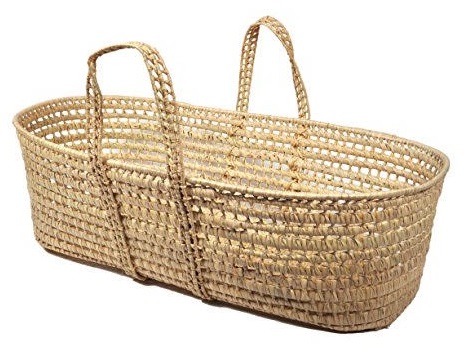
Moses Basket: Tadpoles All Natural Organic Storage Basket “The classic moses basket is perfect for your baby. Made from 100% all natural woven palm leaves, these baskets are all completely handmade in Morocco.” |
Non Toxic Outdoor Gas Grill
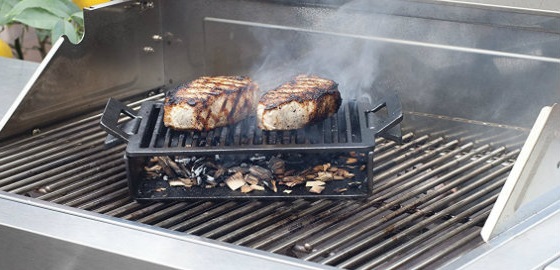
Question from Richard
Hi Debra,
Looking to purchase a toxic free gas grill for my sons. All I find so far all include at Prop 65 warning. Is there any grills made with toxic parts?
Thank you.
Debra’s Answer
This is like asking me are there any nontoxic cigarettes.
And the answer is no.
The whole act of grilling and BBQ is toxic.
The smoke itself has a long list of toxic chemicals.
The blackened meat has toxic chemicals.
It really doesn’t matter what the parts are made of.
All that said, it’s not always clear what the Prop 65 warning refers to. It could be that the warning is there for the smoke, not materials on the grill.
How Can I Remove Nature’s Miracle from Carpet?
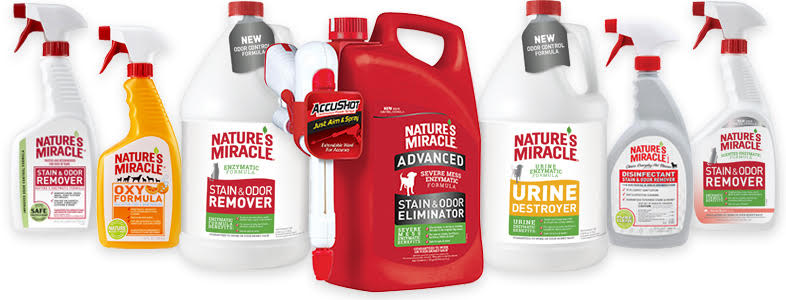
Question from Elizabeth
Hi Debra,
If you have any ideas on how I can get the Nature’s Miracle smell out of my carpet I would greatly appreciate it.
FYI – In September 2017 I had used the Nature’s Miracle on the first floor of my home in an area of my living room where there is wall to wall carpet that also has a layer of padding and then concrete under it. I have tried to neutralize the area by –
- Treating it with vinegar and water.
- Having my carpet cleaner person come and use his machine with just water and then his strong vacuum to suck it up.
- Sprinkling it with baking soda and then vacuuming it.
- Baking the room.
I am so disappointed as I seriously feel this product is now horrible! Unfortunately, the newer version is no longer “natural” like it use to be.
Please feel free to share my experience with your readers.
Here is my correspondence with the manufacturer. They also sent me a refund for the product. Attached is the SDS, the only info they would send to me.
Thanks in advance for your advice on this situation. Much appreciated.
ORIGINAL MESSAGE TO NATURE’S MIRACLE TECH SUPPORT:
I used natures miracle urine eliminator in September 2017 on my carpet. I can still smell the natures miracle on warm days. How long will it take for the natures miracle to break down so that I don’t smell it? Or is there a way I can remove it from my carpet? I’ve used your product 10 yrs ago and never had this happen before. It use to be within 4 to 6 weeks natures miracle smell was 100% gone. Not sure why with your current product I can still smell it so long after the application.
From: Elizabeth
RESPONSE FROM NATURE’S MIRACLE TECH SUPPORT:
Thanks for your feedback. While the fragrance will dissipate over time, the time it takes for that to happen can vary, depending on the surface. A dusting of baking soda, or a solution of diluted distilled white vinegar may help alleviate the smell. If you have additional questions, feel free to reply to this email, or to call us at 1-800-645-5154. We are available M-F 8:00am – 6:00pm EST. Thanks for your time. Have a wonderful day!
From: Aleksander Baxter l Consumer Relations Spectrum Brands – Pet, Home and Garden Division
REPLY TO NATURE’S MIRACLE TECH SUPPORT:
Thx so much.
Can you please send me a list of chemicals and all ingredients that are in natures miracle urine destroyer for dogs product?
Warm Regards,
Elizabeth Schaefer
RESPONSE FROM NATURE’S MIRACLE TECH SUPPORT:
Thanks for your inquiry. The ingredient compositions of some of those blends (fragrance, enzymatic blends, etc.) are proprietary. I’ve forwarded a copy of the Safety Data Sheet for the Urine Destroyer product with additional info. If you have additional questions, feel free to reply to this email, or to call us at 1-800-645-5154. We are available M-F 8:00am – 6:00pm EST. Thanks for your time. Have a wonderful day!
Aleksander Baxter l Consumer Relations
Spectrum Brands – Pet, Home and Garden Division
Debra’s Answer
Readers, any suggestions on how to remove this odor?
Furniture Finish for Bed Frame
Question from Inna
Hi Debra,
I am having a king bed-frame custom-made for me by a couple that does local workworks in Alaska (they use real wood from home depot, but haven’t worked much with people with chemical sensitivities such as myself).
I was wondering what readily available finish would be best for someone like me with chemical sensitivities; is it better to use Klean Strip Boiled Linseed Oil, or Old Masters 100% tung oil, or something else?
They usually use polyurethane but are willing to use something else that’s readily available. I wouldn’t be the one putting it on, so I’m looking for something that no longer off-gases at all once it’s delivered to me.
Also, if they’re using real wood from Home Depot, is there anything I should avoid from there that people have had bad experiences with (e.g. wood that is mislabeled as all real wood but that actually has chemicals that bother people with chemical sensitivities)?
Thanks.
Debra’s Answer
I highly recommend Vermont Natural Coatings
https://www.vermontnaturalcoatings.com/
I’ve used this and it’s really beautiful. It’s made with whey protein recycled from cheesemaking.
They have an All-in-One Stain & Finish at Vermont Natural Coatings.
Here are more nontoxic wood finishes chosen for MCS from Green Building Supply.
If they really need to use something off the shelf at Home Depot, use Varathane Water-Based Floor Polyurethane.
It contains dipropylene ether, but it is fast drying.
Since you have MCS and you will be using this wood and finish in a bed frame, please TEST both wood and finish for individual tolerance BEFORE they make the frame.
New York Times Columnist Finds Toxics in His Body—How Toxic is Yours?
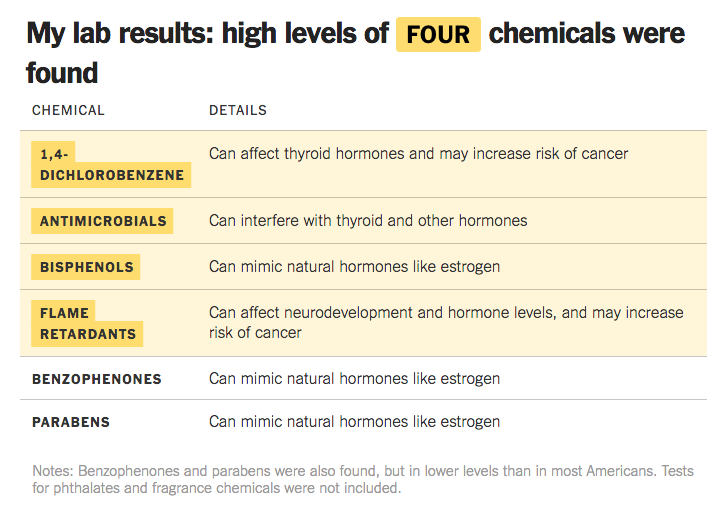
This week New York Times Op-Ed Columnist Nicholas Kristof wrote about having his urine tested for 10 common toxic chemicals.
Even though he had been avoiding some endocrine disruptors for the past decade, his tests still came back back with high levels of four toxic chemicals.
Read more about his experience. And if you want to get tested yourself, the Silent Spring Institute is offering a Detox Me Action Kit for $299 that will both give you results for 10 common toxics and also help researchers study levels of exposure to these chemicals in the U.S. population.
NEW YORK TIMES: What Poisons Are in Your Body?
SILENT SPRING INSTITUTE: Detox Me Action Kit
If you do get this test, please post your results here. I’m interested.
Cleaning May be as Dangerous As Smoking
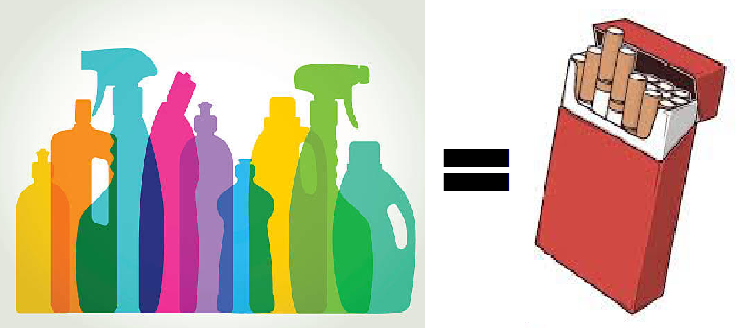
A 20-year international study conducted by scientists at the University of Bergen in Norway has found that using cleaning products can be as harmful to lung function as smoking 20 cigarettes a day.
The authors of the study suggested that exposure to cleaning materials can be detrimental to women’s health in the long term. The effects of 10-20 years of cleaning can be as damaging as smoking a pack of cigarettes a day for the same amount of time.
There have been a lot of sensational headlines about this, this week, but they are a bit misleading. The study didn’t say that the amount of cleaning done at home is equal to 20 cigarettes. This comparison applies only to women who are cleaning professionally and exposed to cleaning products almost daily on an almost continuous basis during normal waking hours.
FORTUNE: Using Household Cleaning Products Can Be as Bad as Smoking a Pack a Day
Beadex Silver Set Lightweight Setting-Type Joint Compounds
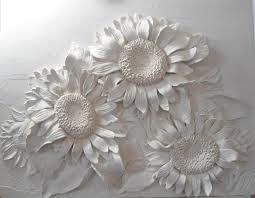
These flowers were created right on the wall using joint compound.
Question from Arlene
Hi Debra,
Have you heard of Beadex Silver Set Lightweight Setting-Type Joint Compounds ? I learned of it on this website. http://greenhomeguide.com/askapro/question/i-am-having-my-breakfast-room-remodeled-i-know-that-premixed-joint-compound-is-toxic-but-is-dry-mix-mixed-onsite-ok
I am asking on behalf of a practitioner who has some chemically sensitive clients but is not sensitive herself. I suggested Murco M100, but it is not locally available and costs a lot of money to ship in.
Thanks so much for all your work and the wealth of information you provide.
Debra’s Answer
I have no experience with this product, nor have I heard of it.
But the article by Mary Cordaro at your link is a good one.
And here’s another article by Mary on chemicals in joint compounds: https://www.greenhomeguide.org/askapro/question/is-joint-compound-really-safe-i-m-concerned-about-polyvinyl-acetate-binders
I’ve known Mary for years and trust her research. If she recommends a product, I’ve never disagreed.
Here are Mary’s recommended joint compounds:
- Beadex Silver Set Lightweight Setting-Type Joint Compounds: The MSDS for these products reports no formaldehyde, aldehyde, vinyl alcohol polymer, or vinyl acetate monomer. So if this product is right for your particular application, this product looks to be nontoxic.
- KEIM Dolomitspachtel, the only ready-to-use, premixed, chemical-free, biocide-free joint compound. The natural lime in this joint compound preserves the product without chemical biocides. This product is more expensive than conventional ready-mix joint compounds.
- Murco M-100, a dry, chemical-free joint compound. Murco is a very popular alternative, successfully used by many contractors, but requires more labor time. Some contractors don’t feel that it provides a hard enough surface, however, or feel that it may crack more easily in earthquake-prone areas.
- Hamilton Smooth Set and Smooth Set Light Weight, also called Westpac Fast Setand Fast Set Lite. To avoid biocides, purchase Hamilton Smooth Set or Smooth Set Light Weight, Westpac Fast Set and Fast Set Lite in bags only (not boxes), and do not purchase Eco-Finish or any other versions offered by Hamilton and Westpac. Smooth Set and Fast Set are actually patching compounds, but as long as a contractor is skilled with applying fast-drying plasters, this is a great, healthy alternative product that dries very hard. However, it does require more labor and definitely more application skills.
Readers, any experience with any of the recommended joint compounds?
I recently looked for a nontoxic joint compound on the shelf at Home Depot and couldn’t find one.
If any one knows of any other safe joint compounds, please comment.
How Do I Clean Bathroom Mold Without Bleach?
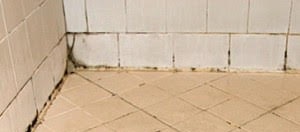
Question from Tania N.
Hi Debra,
What would you recommend to clean mold in the bathroom? You know that black spots between tiles etc..i hate bleach, even though it works amazing for it .. you just spray and after while its gone.. no scrubbing.. but I want use soemthing non toxic.. but i have no idea it is even possible to get rid of mold without bleach etc..
Thank you so much.
Debra’s Answer
Here’s a great post written with several possibilities in answer to your question:
ROOT + REVEL: How to Get Rid of Black Mold Naturally (Without Bleach).
Roofing Materials for MCS?
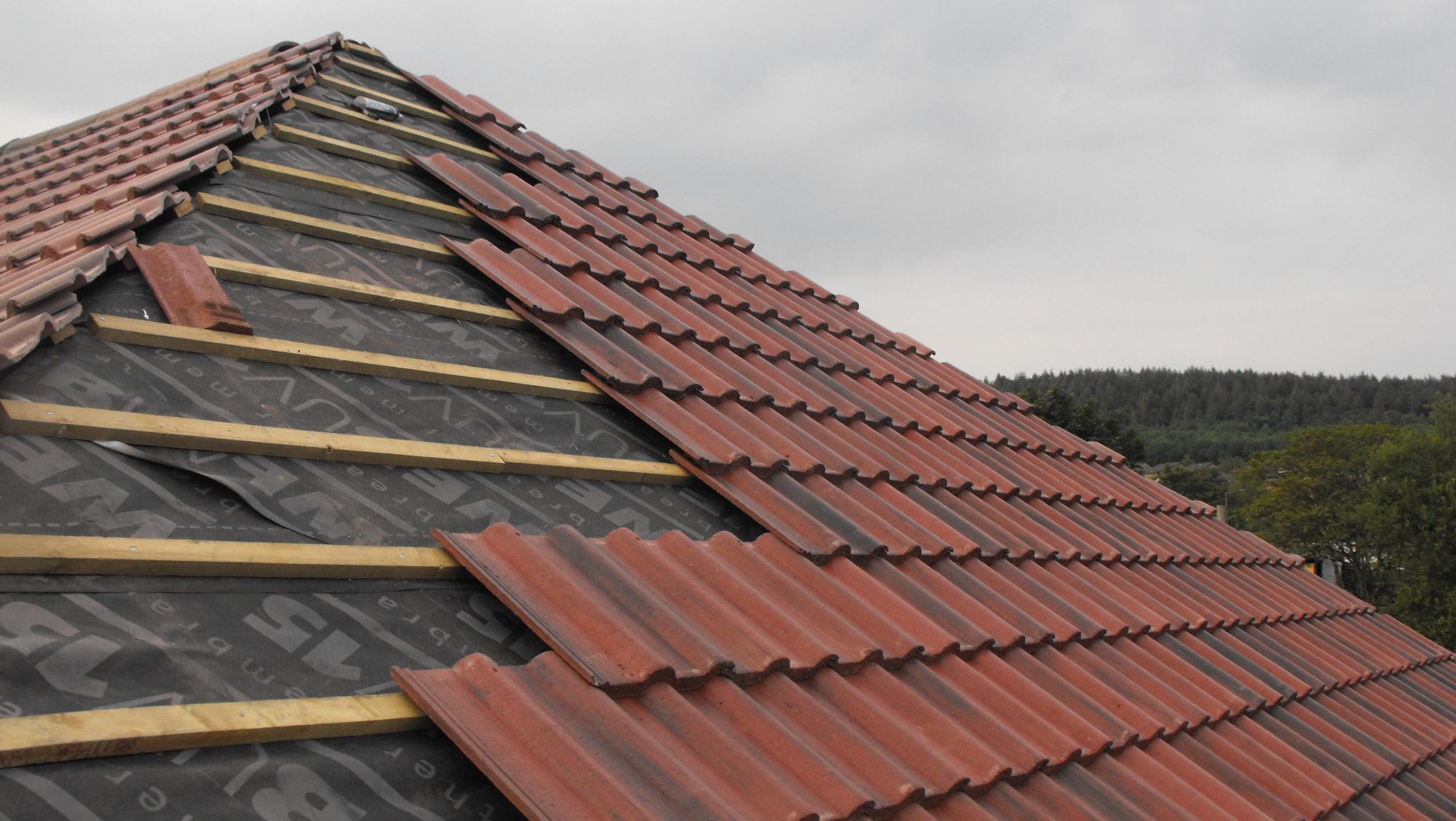
Question from Colleen
Hi Debra,
I have Multiple Chemical Sensitivity.
What kind of roofing materials have other people with MCS used?
Did you have any problems with it?
We need to replace the sheeting on the entire roof which is usually made of plywood and also need something to replace the shingles.
Comments, thoughts, suggestions?
My house is my only safe place. I don’t have relatives or friends that I can stay with and I can’t go to a hotel for any length of time during this process. Thank you!
Debra’s Answer
Readers?
The MTHFR Gene and Detoxification
Question from Sandy
Hi Debra,
I have just met you and look forward to studying your site.
My family, 4 adult children and 7 grandchildren have been diagnosed with the mutated gene MTHFR .
My husband is missing one and I am missing the other. One daughter tested is missing both and learned this during her first pregnancy. So, all of our children will be missing at least one, according to the doctor.
What do you know about this and how it keeps our body’s from detoxing properly?
I expect other fans of yours may need to know this, as well.
We are all hypothyroid, gluten & soy intolerant. The “fortified” grains/flours are toxic to us. Even gluten free because of the “additives to help”, our bodies cannot process and eliminate B vitamins. I breastfed long term and organically grew our foods and made all their baby foods a long time ago, as did my mom for me. (My children’s’ ages: 37-35-33 and 30 years)
Debra’s Answer
I haven’t done a lot of research on this because my focus is on eliminating toxic chemicals we are exposed to in consumer products.
However, it does affect the ability of our bodies to withstand our toxic environment, so if one has this problem, it’s worth knowing.
There are many articles on this subject already written and posted online. I just searched “MTHFR and detoxification” and got many results.
One I particularly like is THE BULLETPROOF BLOG: The MTHFR Gene Mutation And How To Rewire Your Genetics.
It doesn’t explain the detoxification aspect but it gives instructions on how to determine if this is an issue for you and tips for what you can do if you have the defect.
If anyone reading this has any experience with this, please comment.
Looking for Organic Men’s Work Pants
Question from Ron
Hi Debra,
I am hoping you will be able to help me. First of all, we love your book and it has helped us with going toxic free. It is just disgusting all the chemicals used that are hurting us and the planet.
We have done a lot but I need help with one thing, maybe you can help.
I did see the part of your website that has links to organic clothing, but I cannot find the one thing I need.
I’m looking for organic clothes (pants) for work. (business casual) I was able to find nice organic dress shirts Tuckerman & Co but not pants.
I work at a bank and I normally wear Dockers 100 % cotton casual pants. I’m sure you know the type, places like Macy’s carry them. I need to find pants like that and I just can’t.
Do you have any recommendations or know where I can find them?
I hate to buy them because they are wrinkle free and you know what that means.
I appreciate your time and anything you could help me with to find what I need. Some websites do have organic pants, (like Prana) but they are too casual for work.
Again, your book is wonderful and thank you for all that you do for our planet. Thank you.
Debra’s Answer
OK You are in luck. I just happened to know where to look.
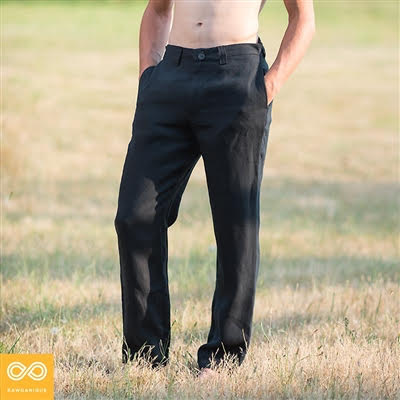 Rawganique Eco-Couture Flat Front Hemp Dress Pants Slacks.
Rawganique Eco-Couture Flat Front Hemp Dress Pants Slacks.
They come in navy, natural, brown, and black.
Not inexpensive, but they happen to be on sale today for $99.
Fussy about care.
Readers? Any suggestions?
Are Boots Toxic?
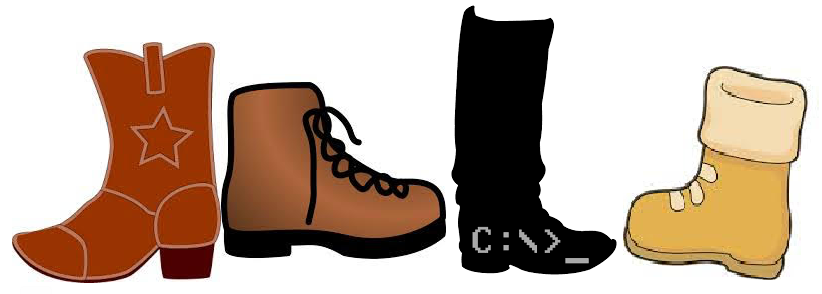
Question from Debbie
Hi Debra,
I have been working in a shoe store for the last 2 yrs. And i am sick all winter for the last 2 winters. Ihave red sore eyes. Sore throat and sinus infections. Dizziness and no energy. Could the boots be out gasing? They r mostly synthetic. Polyurethane ect.
Thank you.
Debra’s Answer
Yes most boots can be toxic.
Synthetic materials do outgas vapors of varying degrees of toxicity and boots also have polish and waterproofing agents that can be toxic as well.
Working in a shoe store you get a greater exposure to these toxic chemicals than from simply wearing one pair and storing them in your closet (which is still toxic enough from my viewpoint).
I suggest getting a different job.
Greenguard Certified Ottoman
Tucson Natural Fabric Storage Ottoman Coffee Table. It’s linen and hardwood, but finish and filling is unknown.
Question from Jenna J
Hi Debra,
I just came across your website and cannot believe I didn’t find it sooner. I am so passionate about nontoxic living. I first read The Complete Organic Pregnancy about a year ago when I found I was pregnant with my first. It changed my life and I began switching out all of my products, and before you know it, I started reading up on nontoxic living and greenguard certified products daily.
I am failing to find a greenguard certified ottoman coffee table, or at least a “nontoxic” one. My daughter will be crawling soon, so having a soft ottoman is key. The only one I have found was through pottery barn. Any other suggestions? Also, is there a difference between nontoxic and greenguard certified? I try to go as natural as possible, I was just wondering how the two compare.
THANK YOU!
Debra’s Answer
First I want to answer your question about Greenguard and nontoxic, and then I will address finding your ottoman coffee table.
There is no legal definition of nontoxic. Make a long story short, there is a definition of “toxic” and if the product isn’t toxic then it can be labeled nontoxic. But there is no official list of toxic chemicals, so at the moment, a nontoxic label means nothing.
MY definition of nontoxic is no toxic substances or materials are used to make the product. And I DO have a list of toxic chemicals I’ve complied over the years that I am looking for when I choose products [I’m working on putting that list together for publication.]
To establish that a product is free from toxics, you look at each material. If all the materials are nontoxic, the product is nontoxic.
GREENGUARD does something different. They have a list of chemicals they test for. If the product tests show that the list of chemicals are not found in the air emissions of the product, then it is GREENGUARD certified.
The problem with this is that GREENGUARD is certifying toxic products such as crib mattresses with PVC covers because the emissions from PVC are not on their list of chemicals to test for. For this reason, I personally do not consider GREENGUARD to be a “nontoxic” certification.
Now, about your ottoman coffee table. This is tricky because it is both a piece of wood furniture and a piece of upholstered furniture.
For wood furniture you need to look at the type of wood used and the type of finish. You want solid wood and a nontoxic finish.
For upholstered furniture you need to look for natural fiber fabric, no fabric finish, no fire retardants and no polyurethane foam.
Generally you don’t get all this information in the product description, so you need to call the manufacturer.
I can make those calls for you as a paid consultant but you can also make those calls.
I found the above ottoman coffee table on amazon by searching the internet for “ottoman coffee table linen.” It’s linen and hardwood, but that’s all the information they give. So that’s all I know without making phone calls.
You could also have one custom made to your specifications.
Just a heads up: I searched for “nontoxic ottoman coffee table” and got things like polypropylene fabric that would still have polyurethane foam.
If it were me, I would get an unfinished wood coffee table and have a pillow made to fit on top and have it custom upholstered. Then I could control exactly what it’s made from.
Dutailier Gliders
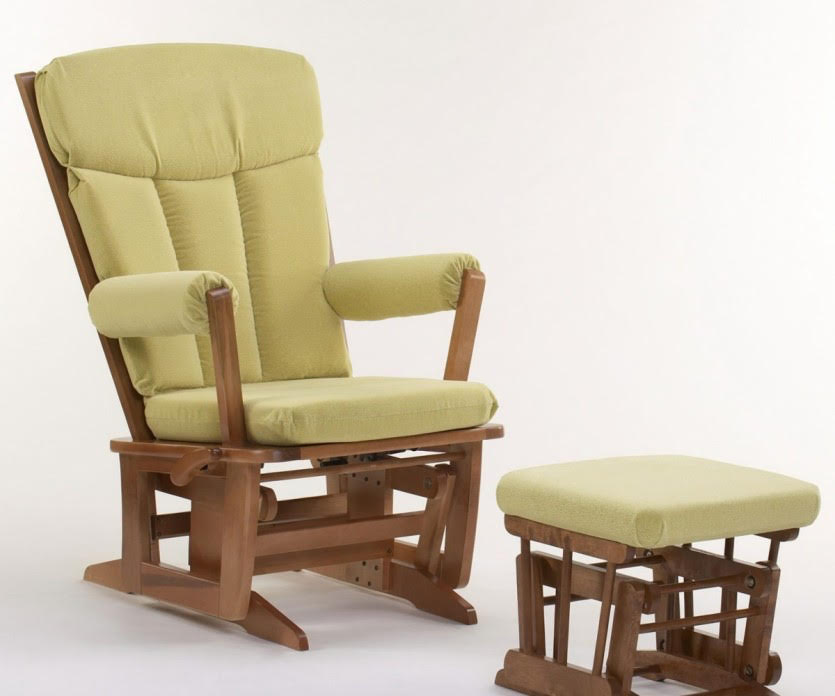
Question from Teresa
Hi Debra,
I hope you can help me. There iS a second hand nursery glider by dutailier that I’m interested in that’s from 2008. Not sure if they have flame retardant or not.. if it did could it have off gased by now or is it still harmful to use? Do you know where I could get reasonable priced material to re stuff if still toxic?
Thanks a lot!
Debra’s Answer
If you are concerned about flame retardants, please call Dutallier at 450-772-2403. I just tried to call but they were closed.
Ask them if they used flame retardants in 2008. And if so, which specific flame retardant. If I know the name, I can tell you if it’s still toxic.
Urban Roots Handmade
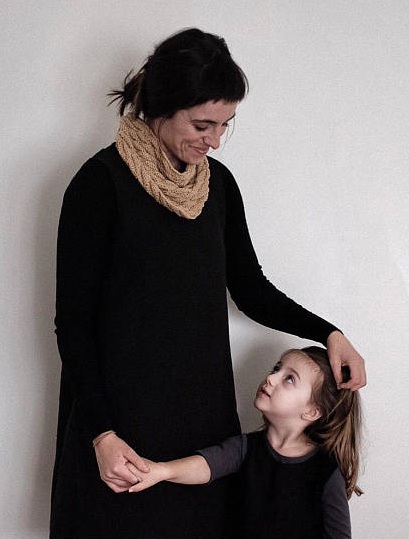 Handmade-to-order basic clothing for women made from pre-shrunk linen and organic cotton thread. Styles are simple and loose, natural linen and colors. French seams. Wow. These are the clothes I want to wear. Not inexpensive but beautiful. Plastic-free shipping. Sizes P-XL. Also kitchen linens and bath linens.
Handmade-to-order basic clothing for women made from pre-shrunk linen and organic cotton thread. Styles are simple and loose, natural linen and colors. French seams. Wow. These are the clothes I want to wear. Not inexpensive but beautiful. Plastic-free shipping. Sizes P-XL. Also kitchen linens and bath linens.
Joyce Farms
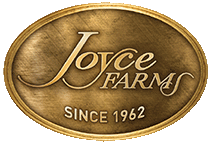 This family-owned comapny is dedicated to providing “the finest, most flavorful poultry, beef and game raised on small farms using humane, all natural methods…We raise every single animal with one guiding imperative: that there is nothing added EVER – no pesticides, animal by-products, hormones, growth stimulators or antibiotics. This allows us to produce meats the way they were meant to taste.” These are heritage breeds fed a vegetable diet and water tested for purity. The animals are “raised to the highest all-natural raising standards in the U.S., even higher than what is required in some organic programs.”Their Heritage line of poultry and game birds follow strict raising standards similar to the Label Rouge standards found in Europe.
This family-owned comapny is dedicated to providing “the finest, most flavorful poultry, beef and game raised on small farms using humane, all natural methods…We raise every single animal with one guiding imperative: that there is nothing added EVER – no pesticides, animal by-products, hormones, growth stimulators or antibiotics. This allows us to produce meats the way they were meant to taste.” These are heritage breeds fed a vegetable diet and water tested for purity. The animals are “raised to the highest all-natural raising standards in the U.S., even higher than what is required in some organic programs.”Their Heritage line of poultry and game birds follow strict raising standards similar to the Label Rouge standards found in Europe.
Olga’s Organics
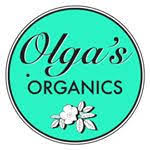 Beautiful makeup made with USDA certified organic plant-based ingredients that you can actually eat, plus natural minerals. The face powder, for example, is made from arrowroot, cacao powder, cinnamon, nutmeg, bentonite clay, ginger and other organic ingredients. Customer reviews are *****. Affordable prices. I was so pleased with these ingredients that I tried ALL the cosmetics and was very pleased with them. They are easy to apply and look beautiful. The coiors are very soft so my skin and features are enhanced without looking like I am wearing a lot of makeup. The face powder does have a slight bit of lavender essential oil, which I could smell when I opened the package, but after letting the container sit out of the package, by the time I actually applied it, I didn’t smell it at all. Olga says let her know if you’d like it completely unscented and if enough people are interested she’ll make an unscented option.
Beautiful makeup made with USDA certified organic plant-based ingredients that you can actually eat, plus natural minerals. The face powder, for example, is made from arrowroot, cacao powder, cinnamon, nutmeg, bentonite clay, ginger and other organic ingredients. Customer reviews are *****. Affordable prices. I was so pleased with these ingredients that I tried ALL the cosmetics and was very pleased with them. They are easy to apply and look beautiful. The coiors are very soft so my skin and features are enhanced without looking like I am wearing a lot of makeup. The face powder does have a slight bit of lavender essential oil, which I could smell when I opened the package, but after letting the container sit out of the package, by the time I actually applied it, I didn’t smell it at all. Olga says let her know if you’d like it completely unscented and if enough people are interested she’ll make an unscented option.
Sapo Company
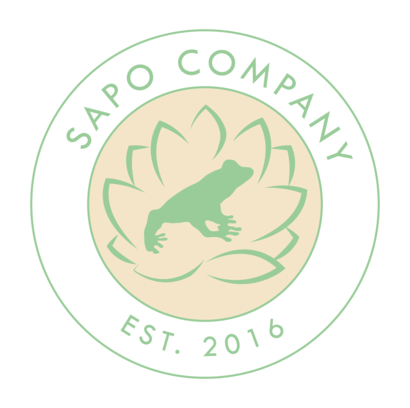 A family owned and operated business that offers 100% Natural & Organic Soaps that are made right here in the USA. “Each bar is made with at least 85% organic ingredients and no artificial colors, fragrances, ingredients or preservatives.” Choose from unscented or mostly non-floral scents such as lemongrass, peppermint, shea honey, thyme, and oatmeal spice.
A family owned and operated business that offers 100% Natural & Organic Soaps that are made right here in the USA. “Each bar is made with at least 85% organic ingredients and no artificial colors, fragrances, ingredients or preservatives.” Choose from unscented or mostly non-floral scents such as lemongrass, peppermint, shea honey, thyme, and oatmeal spice.
WOCA Woodcare
 Quality wood care products from Denmark. “We carry everything you need for all of your wood floor finishing needs, repair, and maintenance. Our website contains all of the information you need for wood floor finishing, furniture restoration, or to maintain your floors to a beautiful shine. All of our Finishing Oils are VOC free, plant based and non-polluting. They are a safe and environmentally friendly solution for wood stains, wood preservatives, and wood protection. WOCA Oil Finish is the leading plant-based, environmentally responsible, sustainable, nonpolluting, durable wood finish, with no artificial color pigments or preservatives.”
Quality wood care products from Denmark. “We carry everything you need for all of your wood floor finishing needs, repair, and maintenance. Our website contains all of the information you need for wood floor finishing, furniture restoration, or to maintain your floors to a beautiful shine. All of our Finishing Oils are VOC free, plant based and non-polluting. They are a safe and environmentally friendly solution for wood stains, wood preservatives, and wood protection. WOCA Oil Finish is the leading plant-based, environmentally responsible, sustainable, nonpolluting, durable wood finish, with no artificial color pigments or preservatives.”
Vivapura
 Raw organic superfoods from around the world. “Here at Vivapura, there are no secrets about how we operate. As a company, we’ve made a huge effort to make our processes transparent. This is very important, because our competitors do not tell you how they source and make their products.”..Vivapure superfoods are ALWAYS RAW. Unadulterated. Nutrient Dense. Vibrant Life Force ORGANIC or WILD-CRAFTED. In Harmony with Earth. Healing for People * ETHICAL. Vegan. Sustainable. Fairly Traded.”
Raw organic superfoods from around the world. “Here at Vivapura, there are no secrets about how we operate. As a company, we’ve made a huge effort to make our processes transparent. This is very important, because our competitors do not tell you how they source and make their products.”..Vivapure superfoods are ALWAYS RAW. Unadulterated. Nutrient Dense. Vibrant Life Force ORGANIC or WILD-CRAFTED. In Harmony with Earth. Healing for People * ETHICAL. Vegan. Sustainable. Fairly Traded.”
Simply Scrub
 Four unique blends of organic ingredients create body scrubs that exfoliate and nourish your skin. Their chocolate body scrub, for example, is made with cocoa nibs, brown sugar, and healing honey. [Read about their organic ingredients here.
Four unique blends of organic ingredients create body scrubs that exfoliate and nourish your skin. Their chocolate body scrub, for example, is made with cocoa nibs, brown sugar, and healing honey. [Read about their organic ingredients here.
Terralite
 Candles made from organic coconut oil and rice bran wax, scented with “organic, wildcrafted, pure essential oils and extracts from plants that were grown without the use of pesticides or chemical fertilizers…Our hemp wicks contain absolutely no lead, are not chemically treated, and are braided with pure unbleached cotton.” All candles are white and come in many of the standard sizes. Choose from the scented “aromatherapy” collection or unscented “rice bran” collection.
Candles made from organic coconut oil and rice bran wax, scented with “organic, wildcrafted, pure essential oils and extracts from plants that were grown without the use of pesticides or chemical fertilizers…Our hemp wicks contain absolutely no lead, are not chemically treated, and are braided with pure unbleached cotton.” All candles are white and come in many of the standard sizes. Choose from the scented “aromatherapy” collection or unscented “rice bran” collection.
Nontoxic Hangers
Question from Kate
Hi Debra,
Do you have any recommendations for nontoxic hangers?
Have you found any wood ones with a nontoxic finish? Can’t seem to find anything!
The finishes are all polyurethane finishes and they are generally nickel or chrome plated hooks. Not sure how you feel about the nickel hooks and if they are an issue as well.
Thank you!
Debra’s Answer
Nickel hooks are only a problem if you are sensitive to nickel.
I use only wooden hangers, which I have collected over the years from various places.
Recently I wanted to buy more but couldn’t find them at all in all the stores where I used to buy them.
When choosing hangers I recommend those that say “natural wood” or that are the natural color, which may have a bit of finish. I stay away from dark stained or finished wood which often have odors in the store.
I looked online and found these online:
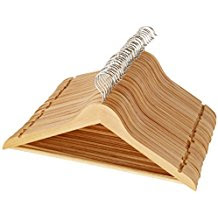 |
 |
 |
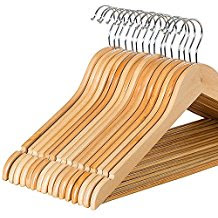 |
| Basics Wood Suit Hangers | Home-it (24 Pack) Natural wood hangers | Whitmor GRADE A Natural Wood Dress or Shirt Hangers | Zober Solid Wood Suit Hangers |
More wood hangers online.
Wood hangers are also available online at Bed Bath & Beyond and other retailers.
Nontoxic Baptism?

Question from Colleen
Hi Debra,
I would like advice on how a person with MCS can get baptized (totally submerged) at a church. I’m allergic to chlorine and would probably be allergic to the other water sanatizers/cleaners (algistat and baquacil which are both chemicals). I also don’t want to risk being a a bacteria laden baptuary due to my weakened immune system. Does anyone have experience with this or advice on how to go about doing this? Thank you!
Debra’s Answer
The first thing that comes to mind for me is to find an outdoor location you like with a suitable water source and ask to be baptized there. After all, the first baptisms were done outdoors, I believe, in a river.
I just searched on “outdoor baptism” and there were a lot of results about people being baptized in all kinds of places, even their own backyard with water in a punch bowl.
Readers, any experiences with this or ideas?
Healthy Cricket
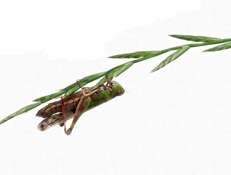 [formerly Dakota Free] Gluten-free, allergen specific and hypoallergenic skin care, bath, baby, spa and hair care products. “We have been helping families stay healthy and serving those with celiac disease, allergies, autism, cancer, chemical sensitivities, asthma, eczema and other skin issues since 2000. Every item has been handcrafted in a dedicated gluten-free facility with careful attention to identifying and tracking the allergen status of each product.” This looks to be one of the most ingredient conscious companies I’ve seen. They have a long list of undesirable ingredients that they track and have much information on their website about the ways ingredients you don’t want can get into products. There is an attribute checklist on each product page to help you choose the right item for your specific need.
[formerly Dakota Free] Gluten-free, allergen specific and hypoallergenic skin care, bath, baby, spa and hair care products. “We have been helping families stay healthy and serving those with celiac disease, allergies, autism, cancer, chemical sensitivities, asthma, eczema and other skin issues since 2000. Every item has been handcrafted in a dedicated gluten-free facility with careful attention to identifying and tracking the allergen status of each product.” This looks to be one of the most ingredient conscious companies I’ve seen. They have a long list of undesirable ingredients that they track and have much information on their website about the ways ingredients you don’t want can get into products. There is an attribute checklist on each product page to help you choose the right item for your specific need.
Titilayo Naturals Adzuki Bean Scrub

Sweet Grass Dairy
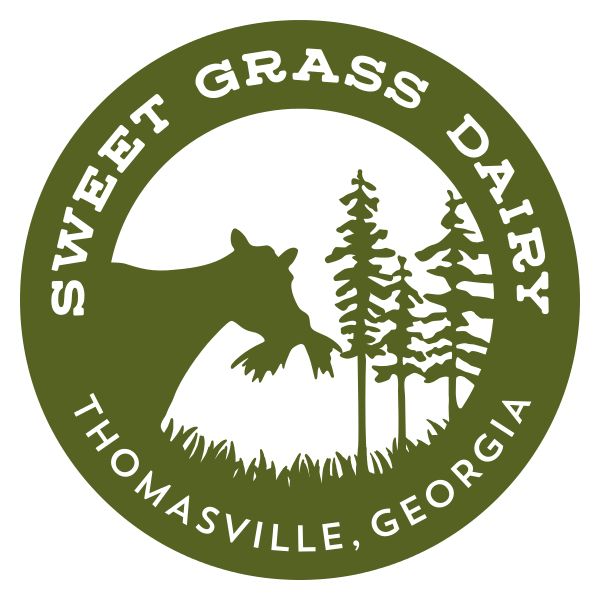 Fine handcrafted cheese made from the milk of “barn free” grassfed cows. Currently their products are not certified organic, but they are about halfway through the multi-year process of having their dairy farms certified organic. Check out their website to see their “cow cam” and learn how they farm.
Fine handcrafted cheese made from the milk of “barn free” grassfed cows. Currently their products are not certified organic, but they are about halfway through the multi-year process of having their dairy farms certified organic. Check out their website to see their “cow cam” and learn how they farm.
No Mouse in the House
 “The longest-lasting, highly effective, all natural mouse repellent.” It is a sturdy plastic ball filled with peppermint oil, an all-natural mouse deterrent. Just set it and forget it. All of the oil stays contained in the ball and releases slowly through their exclusive reservoir and wick design. Lasts six months.
“The longest-lasting, highly effective, all natural mouse repellent.” It is a sturdy plastic ball filled with peppermint oil, an all-natural mouse deterrent. Just set it and forget it. All of the oil stays contained in the ball and releases slowly through their exclusive reservoir and wick design. Lasts six months.
Hempy’s
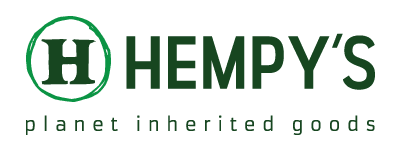 Premium, made in the USA, hemp clothing and accessories for men and women: t-shirts, jeans, board shorts, men’s vests, belts, hats of all kinds and beanies. “Our skin is the largest organ in our bodies and what we choose to put against it all day long matters. We believe that the natural fibers are far better than petroleum based synthetic fibers for us to live and play in all day.
Premium, made in the USA, hemp clothing and accessories for men and women: t-shirts, jeans, board shorts, men’s vests, belts, hats of all kinds and beanies. “Our skin is the largest organ in our bodies and what we choose to put against it all day long matters. We believe that the natural fibers are far better than petroleum based synthetic fibers for us to live and play in all day.
Enchanted Slumber
 An all-in-one certified organic sleeper that bundles a warm, whimsically-patterned quilted pad, blanket covering and a lavender-scented buckwheat pillow for roll-and-go carrying. “Children will delight in having a safe, cozy place of their very own that they can easily take with them to school or on trips.” Handcrafted with love in the USA. Custom name labels available.
An all-in-one certified organic sleeper that bundles a warm, whimsically-patterned quilted pad, blanket covering and a lavender-scented buckwheat pillow for roll-and-go carrying. “Children will delight in having a safe, cozy place of their very own that they can easily take with them to school or on trips.” Handcrafted with love in the USA. Custom name labels available.
Blisque Organic Toothpaste
![]() A 100% certified organic toothpaste made from a variety of cleansing and healing ingredients: arrowroot, “aloe vera inner fillet leaf juice,” plant oils, Himalayan pink salt, baking soda and a variety of essential oils. See descriptions of all ingredients here.
A 100% certified organic toothpaste made from a variety of cleansing and healing ingredients: arrowroot, “aloe vera inner fillet leaf juice,” plant oils, Himalayan pink salt, baking soda and a variety of essential oils. See descriptions of all ingredients here.
Pollen Ranch
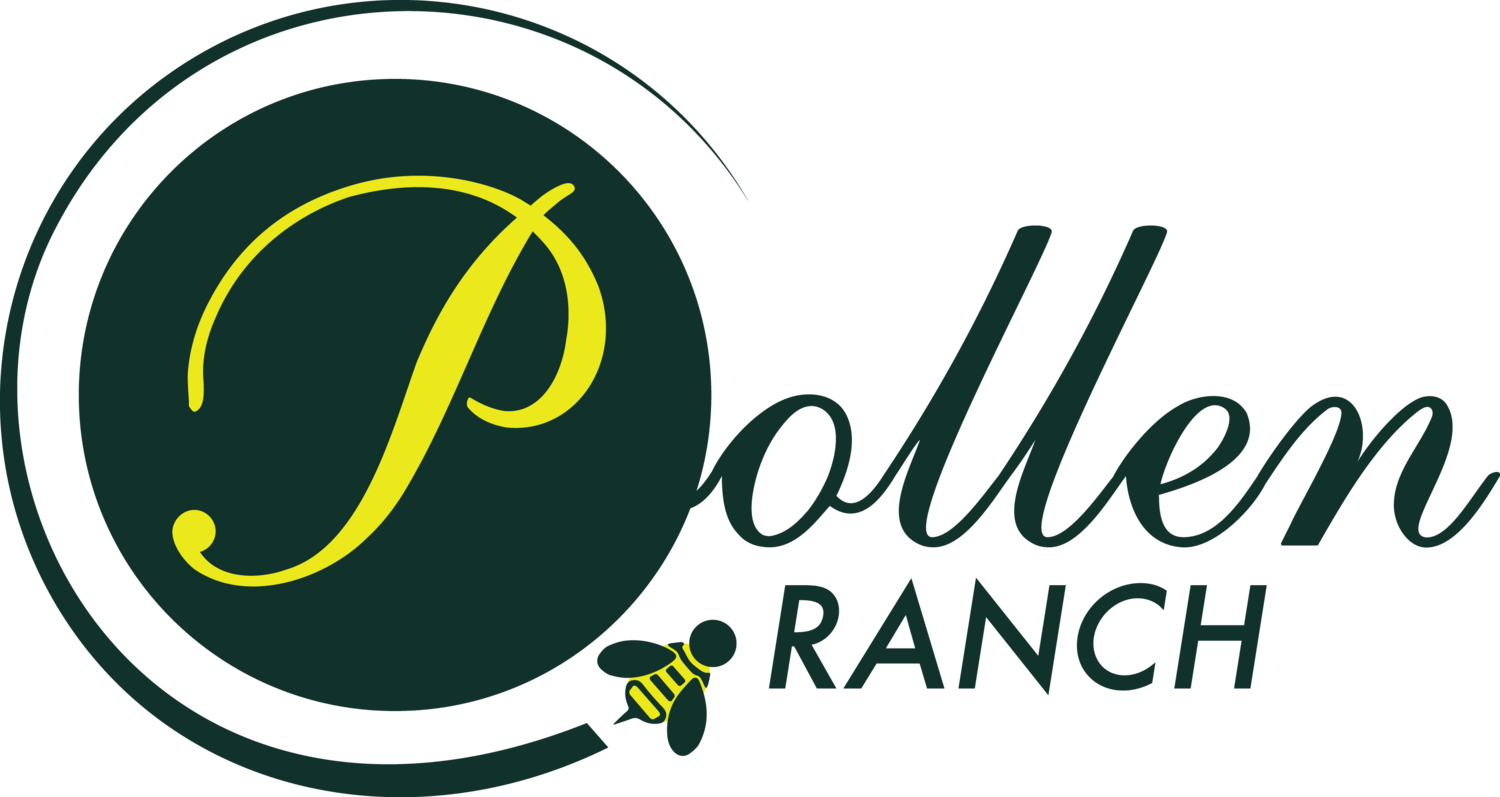 Fennel and dill pollens to use as spice. Fennel pollen has long been used by Italian cooks, and more recently it has been popular in California kitchens (where I live). Pollen Ranch is the largest producer of certified organic, wild, pure fennel pollen and the worlds first supplier of dill pollen
Fennel and dill pollens to use as spice. Fennel pollen has long been used by Italian cooks, and more recently it has been popular in California kitchens (where I live). Pollen Ranch is the largest producer of certified organic, wild, pure fennel pollen and the worlds first supplier of dill pollen
Blended Leather Furniture

Question from Nicole
Hi Debra,
First, thank you so much for your site and work – much appreciated!
I have a question about leather furniture – I have a pretty severe dust mite allergy so I avoid fabric upholstery. I understand that most leather furniture is filled with polyurethane foam and many are also coated with a polyurethane sealer. My first question is, does the leather assist in blocking the off-gassing from the foam cushions? And second, is the applied polyurethane surface treatment more toxic than what is found on fabric furniture?
I’ve just purchased two La-Z-Boy leather/blend recliners and the smell is bugging me – thinking I may need to return them but not sure what I can get other than all-wood furniture?!
Thanks so much for your help!
Debra’s Answer
Thanks for asking this question. It sent me into researching a whole other aspect of leather that I didn’t even know about.
First of all, if you had genuine leather, it would have a number of chemicals used in the tanning process. Unless you had “vegetable-tanned” leather, which is actually pretty wonderful. But I’ve not seen furniture made of vegetable tanned leather. But it is a possibility for an expensive custom piece.
But what you have is even worse. Blended leather or”Bonded leather — sometimes called “reconstituted” leather or just plain “ inyl”[!] — is not the whole skin of an animal, but left-over pieces of hide blended together to form a seamless piece of leather material.
It’s a similar process to making particleboard. Yikes!
So what goes into this fake leather?
It is made as a layered structure with
- a fiber or paper backer
- a pulp made from shredded leather and fabric, joined together with adhesive
- a polyurethane layer which is embossed with a leather-like texture.
It may also have other chemical finishes to make it feel or smell like real leather.
I would return these recliners. This is more plastic than leather. I’m not surprised you are having problems with it.
QUORA: What are the differences between a bonded leather sofa to a genuine leather sofa?
CONSUMER AFFAIRS: Bonded Leather Sofas vs Genuine Leather—What’s the Difference?
Here’s an interesting article about the parts of upholstered furniture: GREEN HOME GUIDE: Any recommendations for a healthy leather soda that won’t offers?
Safest Mattress for MCS
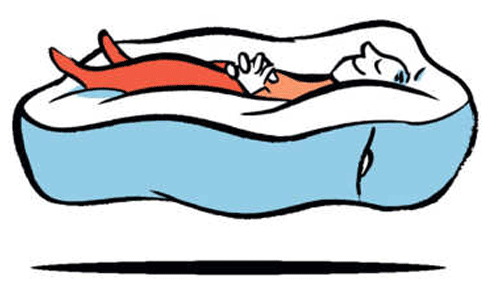
Looking at the questions that come into this Q&A, one of the most frequent is from people with Multiple Chemical Sensitivities (MCS) looking for a safe mattress. Even the most natural materials are not tolerated for one reason or another. Not because the materials are toxic, but because of individual sensitivities.
When I first learned of of MCS—forty years ago now—there were no natural mattresses.
I got a metal cot, tossed the mattress and put a pile of cotton thermal blankets on top. It worked perfectly.
Today I got a call from a reader who wanted to know more about exactly what I did. And while talking I had an idea.
Today I am thinking that the best and safest “mattress” for someone who is sensitive to virtually all raw materials would be to take a zippered mattress cover of the desired size and stuff it with cotton blankets and towels. This way the entire mattress could be taken apart and aired and washed as needed.
This might not bee the most plush mattress available and it might be lumpy, but it should be tolerable.
All materials should be pre-washed.
I would roll up the blankets or towels and then stuff the rolls in the case.
I’ve done this to make pillows in hotel rooms and I am always happy with the results. A mattress is the same idea, only larger.
If any of you try this, please comment and let us know how it went.
Also if you’ve done anything else unusual like this to make something to sleep on that you can tolerate, please let us know that too.
Hammocks come to mind as well.
New EWG Guides Need to Improve Their Recommendations
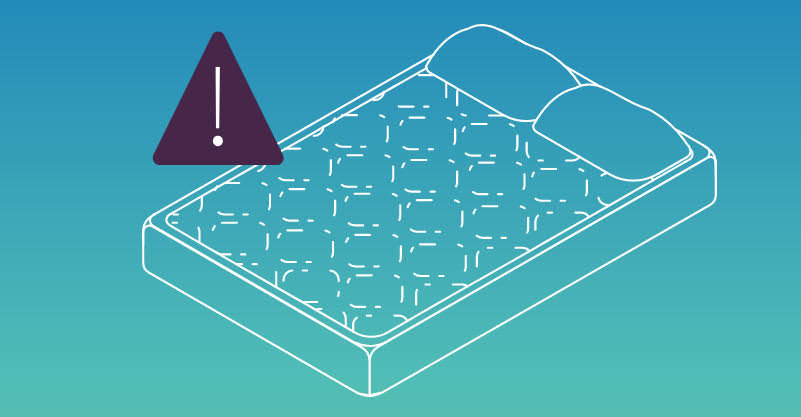
I took some time this week to read parts of the new EWG Home Guides , and found some errors that I feel warrant correction.
I’ve been monitoring Environmental Working Group for some years now and consistently feel that I can’t just stop my work and refer everyone to EWG for product recommendations. While I admire their work researching toxic chemicals and their health effects, I often do not agree with them about their safe alternative recommendations.
Alerting the public about toxic expsures and finding safe alternatives are two very different fields, which require different sets of background understanding and different collections of data.
Here’s just an example of what goes wrong when EWG starts making recommendations regarding how to choose nontoxic products.
In their new Healthy Home Guides, there’s a page on Healthist Mattresses.
Here are some misleading and outright wrong recommendations I’d like to correct on this page.
Recommendation to Look for “Natural Latex”
The term natural latex is meaningless and unregulated. Latex foam can be made from natural tree sap or petrochemicals. While one might assume that latex labeled “natural” is made from tree sap, it can also contain petrochemical latex and may contain pesticides as well.
Better to look for GOLS certified organic latex, which is made from certified organic tree sap. It’s widely available as an option for many mattresses.
Also EWG recommends latex for crib mattresses. Virtually all all latex/allergy groups (medical or otherwise) do not recommend latex for baby products because it is a well-known allergen.
Recommendation to Not Use Flame Retardants
EWG says not to use flame retardants, but then recommends Oeko-Tex and GREENGUARD Gold certification, neither of which prohibit flame retardants. Both of these two certifications permit the use of polyurethane foam filled mattresses, and, when polyurethane foam is used in a mattress, it is impossible to pass government flammability standards without flame retardants, whether those flame retardants are added into the foam or in a flame barrier that surrounds the foam. (The only exception to the use of flame retardants could be to surround the foam with wool, but I’m not aware of any brand that uses wool with polyurethane foam.)
As well, it is quite common for mattress manufacturers to downplay the use of flame retardant chemicals by making claims like “No flame retardant chemical, we only use flame barriers”. But then they don’t tell you what’s in the flame barriers. The flame barriers typically are made with various flame retardant chemicals.
Recommendation of GREENGUARD GOLD certification
The worst mistake on the page, in my opinion, is the recommendation of mattresses certified by GREENGUARD Gold, particularly crib mattresses. This certification is now meaningless in my eyes because so many of the crib mattresses are waterproofed with a layer of toxic PVC that emits dangerous phthalates.
The reason these toxic crib mattresses can be certified by GREENGUARD GOLD is because GREENGUARD does not test for phthalates. I have a letter from them confirming this. So while GREENGUARD can say these mattresses meet their standards, their standards don’t contain certain chemicals for which testing needs to be done. If all you look at is testing for a limited list of chemicals, you miss the fact that a material contains other toxic chemicals that are not on the test list. I know this because I studied PVC and I know the chemicals it outgassed. And I got the list of chemicals GREENGUARD test for and phthalates isn’t on the list. Then I verified the missing phthalates with GREENGUARD. EWG should know this about GREENGUARD. Apparently they don’t. A mattress manufacturer can actually be using absolutely prohibited phthalates and still be GREENGUARD Gold certified!
Waterproofing chemicals are not mentioned at all
In 2017 I took a look at all the major brands of crib mattressses to see what type of chemicals were used for waterproofing. I found PVC (that emit phthalates), per fluorinated chemicals (PFCs), and nanoparticles. EWG warns against exposure to all of these, but did not mention their possible presence on crib mattresses at all.
EWG Recommendations are Close, but Not Close Enough for Me
I know from experience that people who are interested in toxics want to know about ALL the toxic exposures for a particular type of product, so they can make an informed choice.
If EWG wants to set product standards and make product recommendations, they need to do a better job of it.
What we really need are some standards for nontoxic products that we can all agree on, and encourage manufacturers to meet those standards. That’s the direction I am planning to go.
Scotts 1000 sheets per roll toilet paper

Question from Karen
Hi Debra,
Like you, I’ve used Scott’s toilet tissue for years.
The last 2 packages I bought, though, reeked of an odor and literally made me sick. Even the Extra Soft did, but with a different smell.
The website says they are unscented (but did not say “fragrance free”), and that the plain tissue MAY contain post consumer material.
Have you noticed this? Any suggestions for a substitute?
Thank you!
Debra’s Answer
At the moment I am living with Larry’s family, so I don’t buy the toilet paper. But they are buying unscented toilet paper at my request.
Just a few days before receiving your email I noticed that I thought they had purchased scented toilet paper by mistake. But I looked on the label and it said it was dye- and scent-free. So I’m not sure what is happening with scent in these toilet papers these days.
Readers, what toilet paper are you buying now that you know to be fragrance-free?
Lead in Recycled Ceramic Tile
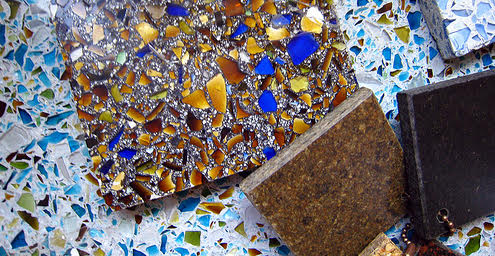
Question from Douglas
Hi Debra,
Are you aware that some US and Canadian recyclers are shipping lead-bearing picture tube glass from electronic hazardous waste to Spain for re-introduction into new ceramic tile? Your concerned readers would probably like to know since US imports its majority of tile.
There’s lot of evidence. The link below is to EPA’s position, which opened the flood gates for hundreds if not thousands of truckloads of leaded glass: https://yosemite.epa.gov/osw/rcra.nsf/0c994248c239947e85256d090071175f/44ce5d76da2bd53785257d630062ed82%21OpenDocument.
My gripe with this is, US Tile manufacturers eliminated lead because lead causes many health, safety and environmental problems and, yet US recyclers ship leaded glass with 200,000 parts per million lead, to Spain and call that recycling. The US Tile companies have proved that lead is not necessary to make a high quality tile. It is a sham to say that adding lead to tile is a “legitimate” secondary use.
The concept of Circular Economy is to eliminate toxics from new products so they are easily recycled in the future. Putting lead in tile is moving backwards.
Debra’s Answer
Thanks for sending this. I always appreciate info on toxic exposures from my readers.
Recycling toxics into new consumer products is not the proper way to dispose of hazardous waste.
Underwear Recommendations?
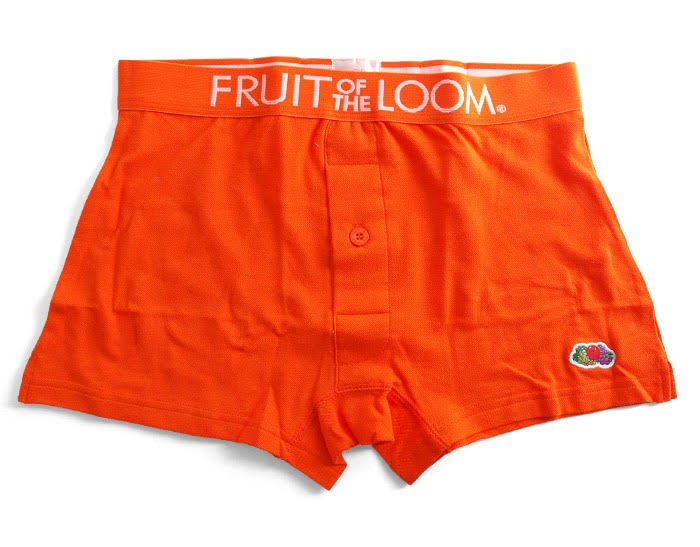
Question from Audrey
Hi Debra,
I have a friend (man) who is mcs and cannot buy fruit of the loom or Hanes underwear anymore – it is treated with an odor guard – right on the package he says that it is written Dow Chemical. I cannot use Jockey for Her panties anymore – Ever since they are not made in the U.S. they have a very strong chemical odor that I cannot get out by either airing out or soaking in baking soda or vinegar. I cannot afford the organic ones. What can we mcsers do???
Debra’s Answer
Readers? Any recommendations?
Here’s a press release about the addition of Odor Guard to Fruit of the Loom:
Kyrgies All Wool Slippers
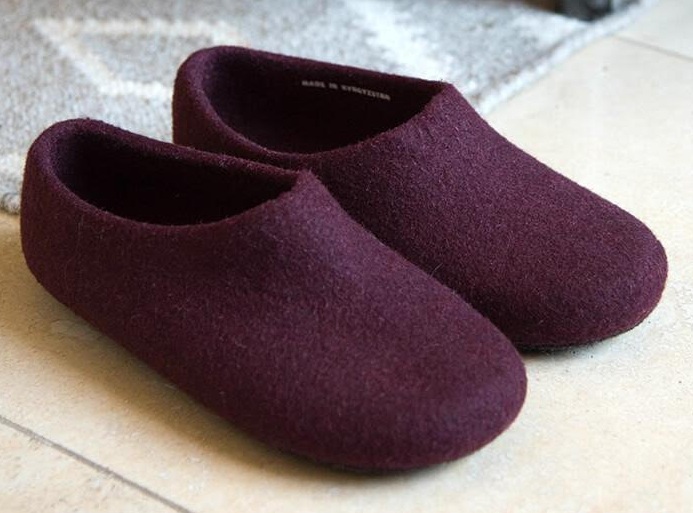 Indoor house shoes/slippers for men, women and children, made of handcrafted wool felt by women artisans. Also felted insoles. Many nice colors and neutrals. I bought a pair of these and I love them. They keep my feet nice and warm on foggy coastal California mornings. “Kyrgies are born of a tradition that is thousands of years old. Kyrgies are produced in Bishkek, Kyrgystan, where wet felting with sheep wool is both a tradition and a necessity. No other textile withstands heat in the summer and the cold, wet winters as well as wool felt. Because of this, the Kyrgyz people have been felting for centuries, passing this skill on from one generation to the next. The Kyrgyz women who make our Kyrgies use felting techniques that have been developed over thousands of years. They mix their hands in water, wool, and 100% natural soap, not harmful toxic chemicals. By sourcing our felt products in Kyrgyzstan, we are supporting a sustainable cultural legacy.” Their All Naturals, Classics, and Insoles meet my toxic-free standards. Use code DLD10 for 10 percent off.
Indoor house shoes/slippers for men, women and children, made of handcrafted wool felt by women artisans. Also felted insoles. Many nice colors and neutrals. I bought a pair of these and I love them. They keep my feet nice and warm on foggy coastal California mornings. “Kyrgies are born of a tradition that is thousands of years old. Kyrgies are produced in Bishkek, Kyrgystan, where wet felting with sheep wool is both a tradition and a necessity. No other textile withstands heat in the summer and the cold, wet winters as well as wool felt. Because of this, the Kyrgyz people have been felting for centuries, passing this skill on from one generation to the next. The Kyrgyz women who make our Kyrgies use felting techniques that have been developed over thousands of years. They mix their hands in water, wool, and 100% natural soap, not harmful toxic chemicals. By sourcing our felt products in Kyrgyzstan, we are supporting a sustainable cultural legacy.” Their All Naturals, Classics, and Insoles meet my toxic-free standards. Use code DLD10 for 10 percent off.
Purggo
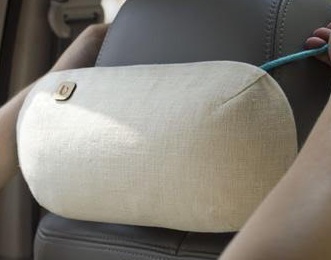 A minimalistic and all-natural car air eco-purifier & freshener.”Filled with with 100% bamboo charcoal.” Lasts 1 year. Fragrance- and allergen-free.
A minimalistic and all-natural car air eco-purifier & freshener.”Filled with with 100% bamboo charcoal.” Lasts 1 year. Fragrance- and allergen-free.
Aplat
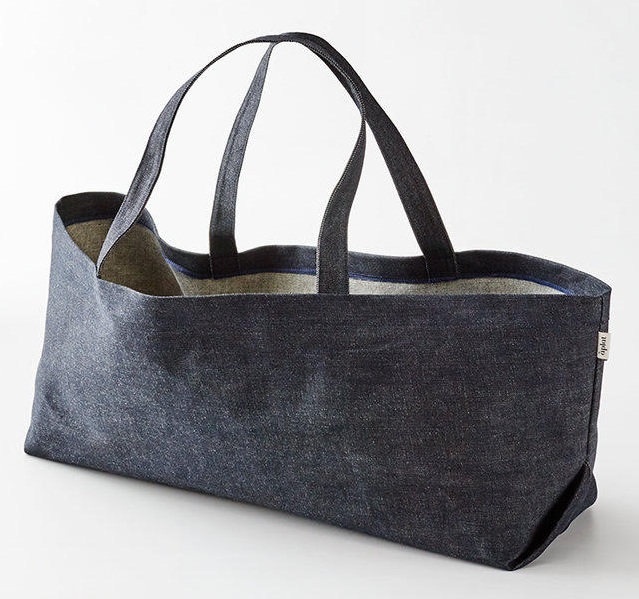 A “culinary tote collection” of bags and wraps designed simply and specifically for carrying food. I love their Grand Tote, which is wide enough to carry a variety of vegetables from the farmer’s market or garden, without piling them on top of each other. “Sewn by women in San Francisco, the Aplat collection of washable, reusable culinary totes is manufactured with empathy, applying a zero-waste origami design using 100% organic cotton.”
A “culinary tote collection” of bags and wraps designed simply and specifically for carrying food. I love their Grand Tote, which is wide enough to carry a variety of vegetables from the farmer’s market or garden, without piling them on top of each other. “Sewn by women in San Francisco, the Aplat collection of washable, reusable culinary totes is manufactured with empathy, applying a zero-waste origami design using 100% organic cotton.”
Wildkale.Com
 “The first online farmers market where you can order your food directly from your local farmer, have it harvested/prepared on order and receive it the next business day. You save time driving to the farmer’s market and you get better quality food with more character that is much fresher than in the supermarket. And it’s always 100% local.” Great idea. There were no farmers on this service in my zip code.
“The first online farmers market where you can order your food directly from your local farmer, have it harvested/prepared on order and receive it the next business day. You save time driving to the farmer’s market and you get better quality food with more character that is much fresher than in the supermarket. And it’s always 100% local.” Great idea. There were no farmers on this service in my zip code.
Cusp Natural Products
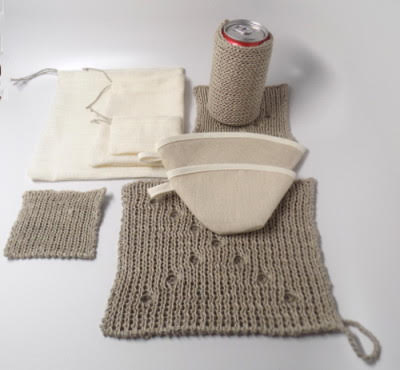 A variety of reusable household textile products made from high quality hemp fiber, including coffee and tea bags, drink sleeves, table linens, washcloths and bath products, garden gloves, hats, yarn and twine.
A variety of reusable household textile products made from high quality hemp fiber, including coffee and tea bags, drink sleeves, table linens, washcloths and bath products, garden gloves, hats, yarn and twine.
Life Without Plastic — The Definitive Guide
Every once in a while I see a book that is written the way I would write it, and this is one of those books.
Life Without Plastic: The Practical Step-by-Step Guide to Avoiding Plastic to Keep Your Family and the Planet Healthy is an account of the first hand experience of Chantal Plamondon and Jay Sinha, founders of the website Life Without Plastic.
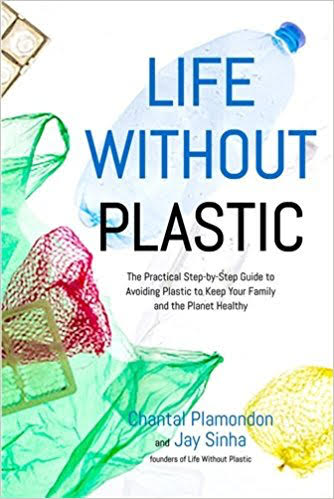 The website already has been a comprehensive resource of products you can use to replace plastic items around your home, but the book goes even further. After telling their story, Chantal and Jay give us
The website already has been a comprehensive resource of products you can use to replace plastic items around your home, but the book goes even further. After telling their story, Chantal and Jay give us
- a Quick Start Guide to removing plastic from your home
- a comprehensive review of plastics and their health effect (which everyone should read),
- instructions for removing plastic from your personal space and
- plastic-free living on the go.
This couple really knows and lives this subject.
So if you want to eliminate plastic from your life, this is the book to get.
Listen to my interview with Chantal and Jay on Toxic Free Talk Radio (or read the transcript) at TOXIC FREE TALK RADIO: Life Without Plastic.
Nontoxic Cleaning Products for Schools

Question from Cheryl
Hi Debra,
I am a School Nurse with very low immunity and subsequent severe chemical sensitivities. The chemicals used at school are destroying me. My body burns and itches the moment that I walk through the door. I need recommendations for products that both sanitize and clean floors, counter tops and rugs. Help, please!
Thanks.
Debra’s Answer
Well, we’re in luck today because the EPA just issued a whole new page just a few months ago on Cleaning Effectively for a Healthy School Environment.
This page tells why it’s important, what you can do, and gives a long list of resources and organizations that can help.
At the end there are three programs that are specifically about cleaning products for schools:
- The Product Review Database maintained by the Los Angeles (California) Unified School District offers a searchable database of over 6,000 products evaluated by the district’s Office of Environmental Health and Safety to determine their suitability for use in and around Los Angeles schools.
- New York’s Green Cleaning Program operated by the New York State Office of General Services presents best practices and a list of approved green cleaning products. A toolkit also describes five steps to a green cleaning program as well as online training courses and customizable documents and templates.
- Green Cleaning, Sanitizing and Disinfecting: A Toolkit for Early Care and Education, supported by the California Department of Pesticide Regulation, helps programs use less hazardous cleaning products and practices while also reducing infectious disease.
But do check out the entire page and the entire list as there are many more resources.
With this page, there should be no reason why any school should us toxic cheaning products. Just show this page to the powers that be in your school and get them to take action. All the information is right here.
Consumer Reports Warns Not to Eat Romaine Lettuce

Late last week Consumer Reports issued a warning to not eat romaine lettuce.
“Over the past seven weeks, 59 people in the U.S. and Canada have become ill from a dangerous strain of E. coli bacteria, likely from eating romaine lettuce. In the U.S., the infections have occurred in 13 states (California, Connecticut, Illinois, Indiana, Michigan, Nebraska, New Hampshire, New York, Ohio, Pennsylvania, Virginia, Vermont, and Washington state). Five people in the U.S. have been hospitalized and one has died, according to the Centers for Disease Control and Prevention (CDC). There has also been one death in Canada.”
The Centers for Disease Control confirmed that the strain of E. coli detected in the U.S. is “a virtual genetic match” with the one that has caused illnesses in Canada.
You have no doubt heard this news already from your usual news sources, but I just want to add my two cents.
A reader sent me a comment from an organic farmer. He said
They say “all romaine” and can’t figure out why that is. Well, they answer it in the third paragraph:
“Until the cause of the current outbreak is known and the implicated food is removed from the supply chain, CR’s experts say consumers should avoid eating any romaine lettuce.”
The problem is the supply chain, the global food system that mixes produce from dozens or hundreds of farms together, including lots of lettuce grown overseas. All it takes is one farm doing things wrong and all romaine lettuce becomes deadly.
Please buy locally grown romaine at the farmers market and eat it with gusto.
I wanted to comment on this because I usually don’t buy romaine lettuce from the supply chain. My number one source of lettuce is my local organic farmer’s market. All their lettuce comes from their own farm. It’s not contaminated.
If lettuce is out of season (as it is now) I eat other greens or buy organic lettuce at a local produce market that does get their produce from the organic supply chain.
I hardly ever buy romaine anyway. I prefer a mix of red and green leaf lettuces.
But Larry’s family (who we live with) always buys romaine lettuce in a plastic bag at the supermarket. I’m happy to report that this warning resulted in the purchase of red leaf lettuce. No plastic bag.
If you eat romaine lettuce, please take this warning as an opportunity to explore local organic sources and other delicious lettuces.
FOOD SAFETY NEWS: Consumer Reports warns against eating any romaine lettuce
Teance Fine Teas
 Single Origin, Farm Direct, Whole Leaf Teas. I happened to walk by this store in Berkeley, California and loved it immediately. It completely changed my ideas about tea. “We celebrate this time-honored craftsmanship of the artisanal tea farmers of China, Taiwan, India, and Japan. Every harvest for the past 15 years we have traveled to the finest tea growing regions of Asia to visit family-owned farms to select our handcrafted teas. Each tea in our collection is carefully curated for its complexity, exceptional taste, and spirit. We do this because we are committed to helping sustain these traditional communities and to sharing the treasures of the tea arts with you. And we truly believe that tea can change your life.” Their mission is “to seek out the most skilled tea farmers and producers in each region, and support their craft by bringing their teas to the Western world.” You can meet each farmer on their website. Teas are picked during the peak season and sold as fresh harvests. They even have a questionnaire to help you choose the perfect tea for you. I wish I could live next door.
Single Origin, Farm Direct, Whole Leaf Teas. I happened to walk by this store in Berkeley, California and loved it immediately. It completely changed my ideas about tea. “We celebrate this time-honored craftsmanship of the artisanal tea farmers of China, Taiwan, India, and Japan. Every harvest for the past 15 years we have traveled to the finest tea growing regions of Asia to visit family-owned farms to select our handcrafted teas. Each tea in our collection is carefully curated for its complexity, exceptional taste, and spirit. We do this because we are committed to helping sustain these traditional communities and to sharing the treasures of the tea arts with you. And we truly believe that tea can change your life.” Their mission is “to seek out the most skilled tea farmers and producers in each region, and support their craft by bringing their teas to the Western world.” You can meet each farmer on their website. Teas are picked during the peak season and sold as fresh harvests. They even have a questionnaire to help you choose the perfect tea for you. I wish I could live next door.
Honey Mama’s Chocolate
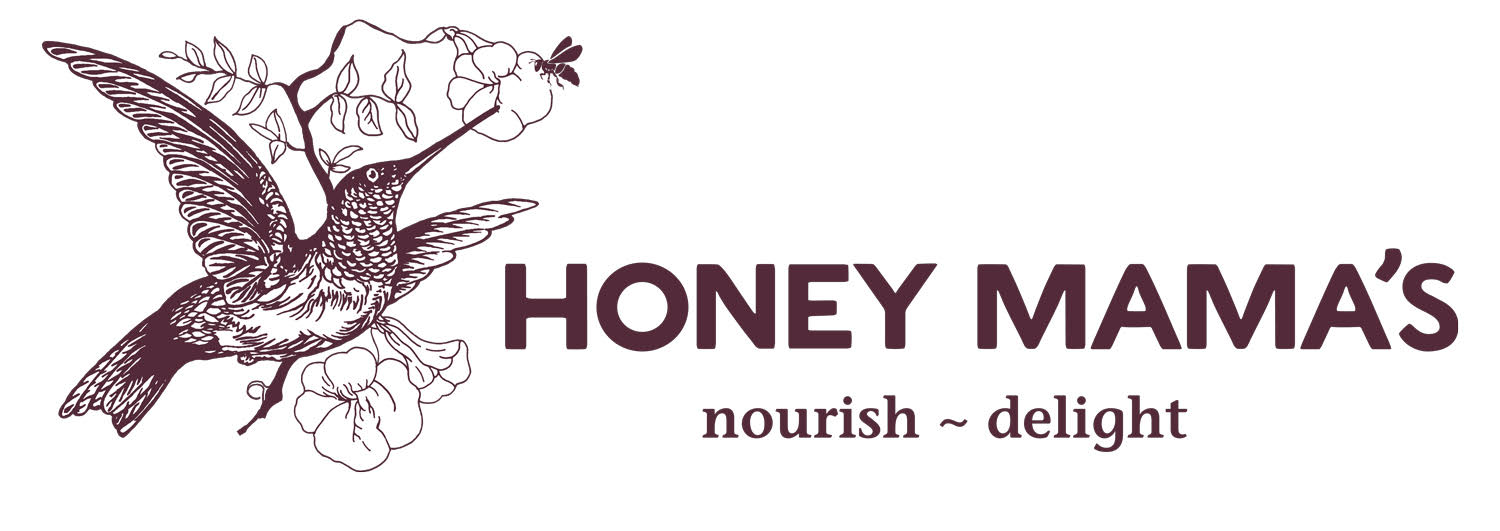 “Honey Mama’s bars are raw honey-sweetened cocoa treats made from five nutrient-rich ingredients. Each bar has a base of raw honey and virgin coconut oil, with the addition of cocoa powder, Himalayan pink salt, and either sprouted almonds OR shredded coconut. That’s it! We’re committed to sourcing the highest quality direct–trade, non–GMO, and organic ingredients we can find to make a product that naturally stimulates well-being and is out-of-this-world delicious! To learn more about the fabulous ingredients that go into our bars, click here. For more information on our suppliers, click here. These bars are simply delicious!
“Honey Mama’s bars are raw honey-sweetened cocoa treats made from five nutrient-rich ingredients. Each bar has a base of raw honey and virgin coconut oil, with the addition of cocoa powder, Himalayan pink salt, and either sprouted almonds OR shredded coconut. That’s it! We’re committed to sourcing the highest quality direct–trade, non–GMO, and organic ingredients we can find to make a product that naturally stimulates well-being and is out-of-this-world delicious! To learn more about the fabulous ingredients that go into our bars, click here. For more information on our suppliers, click here. These bars are simply delicious!
Zursun Idaho Heirloom Beans
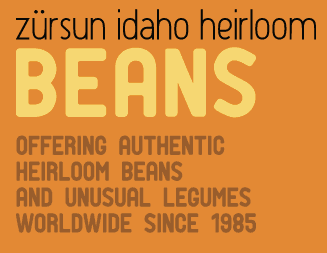 “Founded in 1985, Zürsun Idaho Heirloom Beans is the original U.S. company to offer authentic heirloom beans and unusual legumes worldwide. The ultimate eco-friendly food, Zürsun heirloom beans are grown on small-scale farms in the Snake River Canyon region of south central Idaho known as the Magic Valley Growing Area. The area’s arid climate, rich, well-drained loamy soil, moderate temperatures and stable moisture level—internationally recognized as having ideal environmental conditions for bean growing—produce pure, distinctly flavorful beans, superior to common store-bought beans.”
“Founded in 1985, Zürsun Idaho Heirloom Beans is the original U.S. company to offer authentic heirloom beans and unusual legumes worldwide. The ultimate eco-friendly food, Zürsun heirloom beans are grown on small-scale farms in the Snake River Canyon region of south central Idaho known as the Magic Valley Growing Area. The area’s arid climate, rich, well-drained loamy soil, moderate temperatures and stable moisture level—internationally recognized as having ideal environmental conditions for bean growing—produce pure, distinctly flavorful beans, superior to common store-bought beans.”
Rancho Gordo
 “Glorious, old fashioned heirloom beans… unique flavors and textures that you don’t find with bland commodity beans..My first harvested heirloom bean was Rio Zape. They were pretty and easy to grow but I had no idea what to expect when I cooked them. They were similar to the pintos I liked but there was so much more going on. Hints of chocolate and coffee mixed with an earthy texture made my head spin.”
“Glorious, old fashioned heirloom beans… unique flavors and textures that you don’t find with bland commodity beans..My first harvested heirloom bean was Rio Zape. They were pretty and easy to grow but I had no idea what to expect when I cooked them. They were similar to the pintos I liked but there was so much more going on. Hints of chocolate and coffee mixed with an earthy texture made my head spin.”
Chili Smith
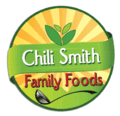 A good selection of heirloom beans grown in California. “Beans are cleaned and polished before packing for highest gourmet quality.”
A good selection of heirloom beans grown in California. “Beans are cleaned and polished before packing for highest gourmet quality.”
Divine Organics Pili Nut Butter
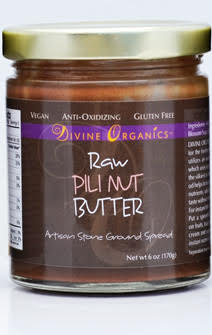 They were giving out free samples at my local community organic market and I couldn’t resist. And I’ve been eating it since. Here’s why. It tastes like chocolate. But there is no caffeine, just a bit of coconut sugar and a bit of Himalayan salt. I haven’t tried an actual pili nut yet, but I’m interested in the fact that they are a rich source of heart-healthy omegas, which play an important role in brain function, and they contain all 8 essential amino acids. This nut butter is a good introduction.
They were giving out free samples at my local community organic market and I couldn’t resist. And I’ve been eating it since. Here’s why. It tastes like chocolate. But there is no caffeine, just a bit of coconut sugar and a bit of Himalayan salt. I haven’t tried an actual pili nut yet, but I’m interested in the fact that they are a rich source of heart-healthy omegas, which play an important role in brain function, and they contain all 8 essential amino acids. This nut butter is a good introduction.
Natural Upholstery
![]() “Healthy Upholstery—Without Chemicals.” Buy nontoxic upholstery foundation materials for your project here: premium wool batting, organic cotton batting, Oeko-Tex and GOLS certified organic latex foam, organic cotton ticking. In addition, they have lots of resources to help you with your project including a list of upholstery professionals and designers, makers and DIYers, instructions for your professional upholester, and a list of websites where you can buy organic uphostery fabrics. “My work at this moment is focused on creating positive change. For me this means building a resource for Makers to learn upholstery restoration using natural and organic materials. It means sharing stories, skills and imagination in an open source platform – where each of us builds upon the contributions of others to create something new and better. I can’t wait to see what you create! Large or small, impacting a single person or many. Hearing your stories and helping you transform your upholstery project into something that imparts a meaningful presence to your space is the best part of my work!”
“Healthy Upholstery—Without Chemicals.” Buy nontoxic upholstery foundation materials for your project here: premium wool batting, organic cotton batting, Oeko-Tex and GOLS certified organic latex foam, organic cotton ticking. In addition, they have lots of resources to help you with your project including a list of upholstery professionals and designers, makers and DIYers, instructions for your professional upholester, and a list of websites where you can buy organic uphostery fabrics. “My work at this moment is focused on creating positive change. For me this means building a resource for Makers to learn upholstery restoration using natural and organic materials. It means sharing stories, skills and imagination in an open source platform – where each of us builds upon the contributions of others to create something new and better. I can’t wait to see what you create! Large or small, impacting a single person or many. Hearing your stories and helping you transform your upholstery project into something that imparts a meaningful presence to your space is the best part of my work!”
Foam Order
 This website is not 100% natural and toxic-free, but if you choose carefully you will find some acceptable products and materials that are difficult to locate elsewhere. First, they will make custom cushions for you for indoor and outdoor furniture, boats, RVs. or anything else. They have fire-retardant-free natural latex cut in blocks and all kinds of custom shapes. Also down filling for cushions.Certified organic natural 100% cotton down-proof ticking lining. Organic wool batting and felt (look under “industrial”). Organic cotton mattress covers. And more. Take a look at this site if you want to make something custom.
This website is not 100% natural and toxic-free, but if you choose carefully you will find some acceptable products and materials that are difficult to locate elsewhere. First, they will make custom cushions for you for indoor and outdoor furniture, boats, RVs. or anything else. They have fire-retardant-free natural latex cut in blocks and all kinds of custom shapes. Also down filling for cushions.Certified organic natural 100% cotton down-proof ticking lining. Organic wool batting and felt (look under “industrial”). Organic cotton mattress covers. And more. Take a look at this site if you want to make something custom.
Fabric Worm
 The largest selection of “purely organic fabric for quilting and craft projects” I’ve ever seen. Solid colors and many many patterns. Sold by the 1/2 yard and/or fat quarters for quilting. “We carry one of the largest selections of organic cotton fabric and imported fabrics on the world wide web. Whether you’re sewing for boys, girls, or yourself, you’ll find a beautiful curated selection of whimsical prints, as limitless as a child’s imagination.”
The largest selection of “purely organic fabric for quilting and craft projects” I’ve ever seen. Solid colors and many many patterns. Sold by the 1/2 yard and/or fat quarters for quilting. “We carry one of the largest selections of organic cotton fabric and imported fabrics on the world wide web. Whether you’re sewing for boys, girls, or yourself, you’ll find a beautiful curated selection of whimsical prints, as limitless as a child’s imagination.”
Harvest & Mill Organic Clothing
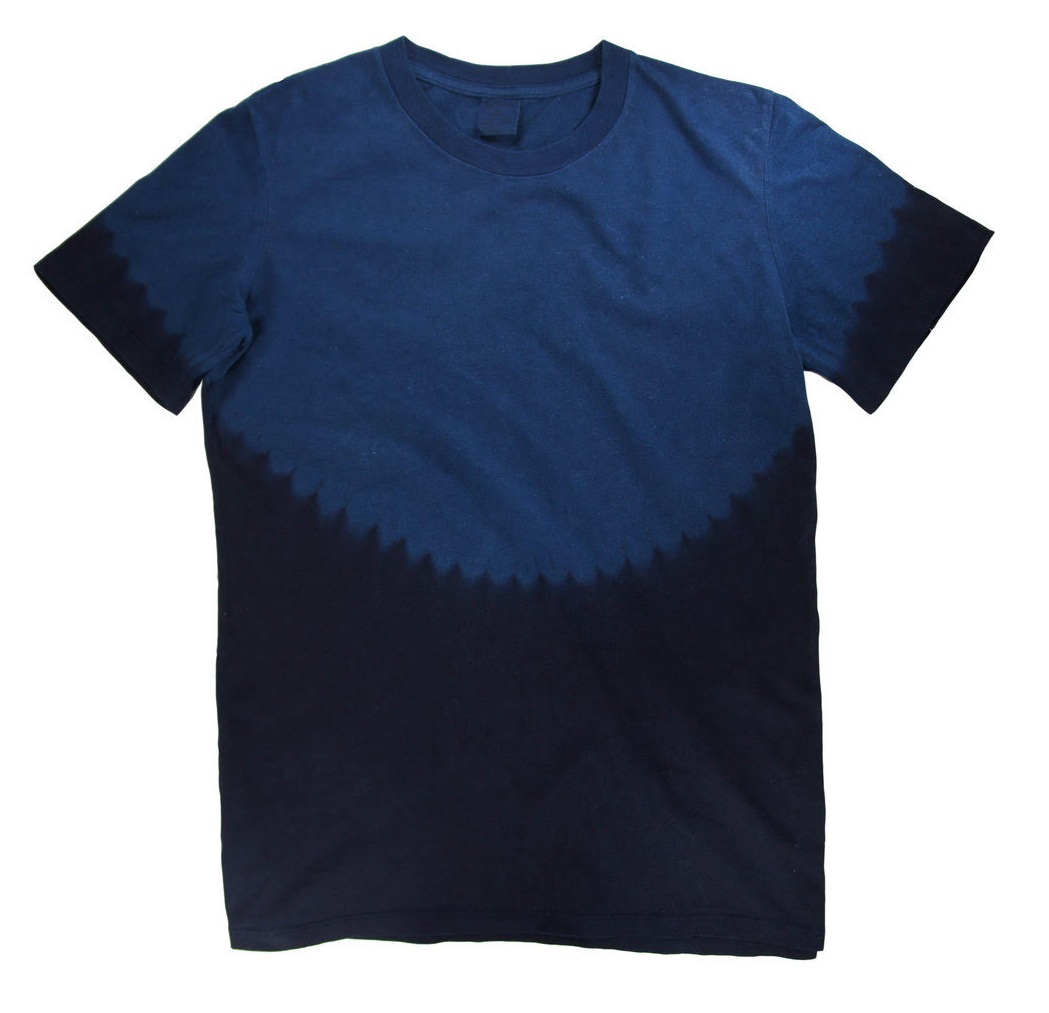 A very small selection of shirts for men “beyond made in the USA…We work exclusively with USDA organic cotton farms, American heritage mills, and local family owned factories. Our entire supply chain is in the USA….Ricketts Indigo grows organic indigo and dyes their textiles at their studio in Indiana…These tees are truly wearable art, dyed with traditional techniques and organic plants.” Also natural cotton shirts without dye.
A very small selection of shirts for men “beyond made in the USA…We work exclusively with USDA organic cotton farms, American heritage mills, and local family owned factories. Our entire supply chain is in the USA….Ricketts Indigo grows organic indigo and dyes their textiles at their studio in Indiana…These tees are truly wearable art, dyed with traditional techniques and organic plants.” Also natural cotton shirts without dye.
My New Space Heater
Every winter the question of space heaters seems to come up.
Most heaters you will find on store shelves are made with plastic housings, which is the worst choice because heat will cause the plastic to outgas into the air.
I’ve written a number of posts in the past about space heaters. O&A: Portable Heaters With Metal Housings in particular outlines all the types of heaters to look for plus has links to other posts about heaters.
Today I want to tell you about a space heater of a different type that Larry purchased this year at Costco, and I like it so much I took it from him to put in my office (it’s in a building separate from the house where there is no central HVAC and the built-in heater is broken).
I LOVE this heater. There has never been an odor from the beginning.
Though the heating element is suspended in a hard plastic frame, it does not seem to outgas. The only part that heats up the the heating element and the large metal “dish” that focuses the heat in the direction right on you instead of heating the entire room.
I can turn on this heater on a cold morning and in minutes my immediate workspace is warm.
For years I have used small ceramic heaters and more recently a utility heater with metal housing. Both of those have fans that make noise. This is absolutely silent except for a slight hum that is much less noticeable to me.
Here’s another interesting heater I just found on amazon while I was looking up the link for the Presto. The description says “Safe and oderless heat. Eco friendly, does not consume oxygen and does not dry the air.”
It looks like a standard infrared heating element in an aluminum tube. It costs twice as much, but seems to be more portable and can be used indoors or out. This one can be mounted on a wall or stand and in various other ways as well.
Resources for Affordable Organic Fabrics & Upholstering Materials
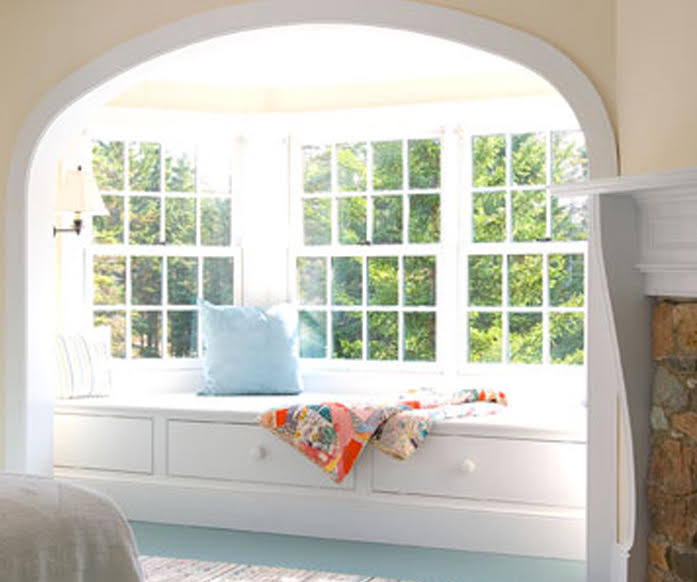
You can make a cushion for a charming window seat like this using ORGANIC upholstery materials.
Question from Sabrina
Hi Debra,
First of all, thanks for all of your wonderful information and advice over the last…Gosh, I don’t know how many years! Eight? You’ve helped me make better choices for my family and kids, specifically. I am deeply grateful.
I am going to make a cushion for a window seat for my avid reader kiddo, and I wanted to pass along some info I found about some great materials.
First: certified GOLS organic latex foam and organic cotton muslin from naturalupholstery.com. It’s the best price I found for organic latex foam.
I also am getting organic wool batting from foamorder.com, but they don’t sell organic latex, only “all natural”, whatever that means.
I will be covering the cushion in organic cotton canvas from fabricworm.com . They have the best selection at the best prices of organic fabric, that I have found.
Hope this is interesting and helpful.
Thanks again! And Happy New Year!
Debra’s Answer
Thanks for these great resources! I’m sure others will be interested in them too.
UV system in air conditioner OK for MCS?

Hi Debra,
Anyone with mcs have a UV system for their air conditioner?
It is supposed to help prevent odors and mold, and my ac company is trying to persuade me to get it, but I know many years ago I read it is not good for an mcser.
A friend of mine had it and had to have it removed, but another mcser friend has one and is okay.
It is quite expensive and if I have to take it out, I will not get any of the money back. Thanks.
Debra’s Answer
UV lights produce varying amounts of ozone, but those intended for mold and germs produce very little. That may be what some very sensitive people are reacting to.
Readers, any experience with this?
EWG’s New Healthy Home Guides

Environmental Working Group has released a set of Healthy Home Guides. It’s the first time they have addressed exposure to chemicals in the home as a whole.
Rather than being comprehensive, these guides offer simple advice on avoiding less than a dozen chemicals of concern (lead, asbestos, flame retardants, VOCs, PFCs, antimicrobials, and radon).
Product-specific guides give only tips on what chemicals to avoid and what to look for, but no guidance on how to actually find these products.
Still, it’s a good educational effort to show there IS a problem with chemical exposures in the home and will make many more aware they should be looking for toxic-free products.
Portland Apron Company
 A variety of useful aprons for adults and children, in designs you won’t find everywhere. Included are the basic standards plus a loose pinafore with pockets, a japanese smock, and an artist tunic with or without long sleeves. Organic hemp or linen that is sustainably grown, produced, and dyed. All pieces are handmade to order.
A variety of useful aprons for adults and children, in designs you won’t find everywhere. Included are the basic standards plus a loose pinafore with pockets, a japanese smock, and an artist tunic with or without long sleeves. Organic hemp or linen that is sustainably grown, produced, and dyed. All pieces are handmade to order.
Avishi Organics
 “Therapeutic skin care for mamas and babies” made from 100% pure USDA certified organic ingredients. “The goal – healing skincare treatments that are honestly labeled and USDA certified organic, just right for pregnant mamas and babies. We started from scratch, with 100% natural ingredients known for their therapeutic and restorative properties…Our intention was to satisfy a need in the market for truly natural, effective products that would resolve issues all too common for mamas-to-be and babies.
“Therapeutic skin care for mamas and babies” made from 100% pure USDA certified organic ingredients. “The goal – healing skincare treatments that are honestly labeled and USDA certified organic, just right for pregnant mamas and babies. We started from scratch, with 100% natural ingredients known for their therapeutic and restorative properties…Our intention was to satisfy a need in the market for truly natural, effective products that would resolve issues all too common for mamas-to-be and babies.
Ojai Wild
 A collection of natural fragrances made from native California botanicals, resins, woods and roots. “Alongside organic botanicals and roots from our farm in the Ojai Valley, our hand-gathered materials are ethically sourced from trees, shrubs and fields grown on established estates and ranches all around California. These raw materials are then extracted and poured into glass containers. Each cologne is composed of the raw botanical extract married with a harmonious blend of essential oils and absolutes—some of which are aged up to 35 years…Rather than mask your scent, unleash it. Ojai Wild colognes pair with your own individual scent, allowing you to explore the most pure, most authentic version of your own essence.
A collection of natural fragrances made from native California botanicals, resins, woods and roots. “Alongside organic botanicals and roots from our farm in the Ojai Valley, our hand-gathered materials are ethically sourced from trees, shrubs and fields grown on established estates and ranches all around California. These raw materials are then extracted and poured into glass containers. Each cologne is composed of the raw botanical extract married with a harmonious blend of essential oils and absolutes—some of which are aged up to 35 years…Rather than mask your scent, unleash it. Ojai Wild colognes pair with your own individual scent, allowing you to explore the most pure, most authentic version of your own essence.
Thorn and Bloom
 “An artisanal perfumery handcrafting luxury botanical fragrances using the finest natural aromatics…Our fragrances are comprised of 100% botanical aromatics, such as Essential Oils, Absolutes, CO2 Extracts and Tinctures in a base of triple-filtered USDA Organic Grape Alcohol. We do not use synthetic aroma chemicals, preservatives or GMOs. Each small batch is lovingly blended by hand in Charlestown, MA.” Certified by Natural Perfumers Guild.
“An artisanal perfumery handcrafting luxury botanical fragrances using the finest natural aromatics…Our fragrances are comprised of 100% botanical aromatics, such as Essential Oils, Absolutes, CO2 Extracts and Tinctures in a base of triple-filtered USDA Organic Grape Alcohol. We do not use synthetic aroma chemicals, preservatives or GMOs. Each small batch is lovingly blended by hand in Charlestown, MA.” Certified by Natural Perfumers Guild.
Ring Botanicals
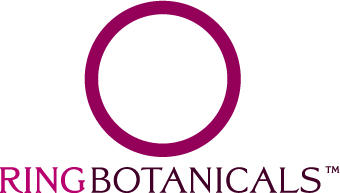 Small-batch artisinal perfumes and essential oils carefully crafted from organic and wildcrafted plants. “Our purpose has always been to bring about beauty and healing through the creation of perfumes that smell like the ecosystems they come from. We extract over 100 of our own essences ranging from herbs such as rosemary and lavender, to rarer essences like our house specialty, Black Poplar, or the heartwood of ancient fir trees. With each harvest we draw from the land we return more than we take; by farming sustainably, planting trees, sharing seeds, and educating other herbalists and distillers about ethical wildcrafting of native plants, we restore our good connection with the healing plants. Our natural perfumes are 100% sythetic-free and boast ingredients from artisinal distiller friends the world round. True to name, our work encircles and protects many small trees and millions of beneficial pollinators and bees who sip on the nectar of our crops. These voices of the trees, and roots, and flowers that you will hear in our offerings have much to tell you about how to reclaim your own spirit, as well as protect that of the land. Certified by Natural Perfumers Guild.
Small-batch artisinal perfumes and essential oils carefully crafted from organic and wildcrafted plants. “Our purpose has always been to bring about beauty and healing through the creation of perfumes that smell like the ecosystems they come from. We extract over 100 of our own essences ranging from herbs such as rosemary and lavender, to rarer essences like our house specialty, Black Poplar, or the heartwood of ancient fir trees. With each harvest we draw from the land we return more than we take; by farming sustainably, planting trees, sharing seeds, and educating other herbalists and distillers about ethical wildcrafting of native plants, we restore our good connection with the healing plants. Our natural perfumes are 100% sythetic-free and boast ingredients from artisinal distiller friends the world round. True to name, our work encircles and protects many small trees and millions of beneficial pollinators and bees who sip on the nectar of our crops. These voices of the trees, and roots, and flowers that you will hear in our offerings have much to tell you about how to reclaim your own spirit, as well as protect that of the land. Certified by Natural Perfumers Guild.
Anya’s Garden Perfumes
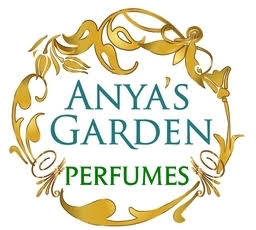 100% natural perfumes made with rare and exotic essences. “My lifelong passion for fragrant plants and natural aromatics is showcased in my natural perfumes. I grow many unique tropical plants and extract their fragrance for my perfumes. Guaranteed made only from essential oils, absolutes, tinctures and organic undenatured alcohol.” She also offers perfume making kits and botanicals so you can make your own personal fragrances. Certified by Natural Perfumers Guild.
100% natural perfumes made with rare and exotic essences. “My lifelong passion for fragrant plants and natural aromatics is showcased in my natural perfumes. I grow many unique tropical plants and extract their fragrance for my perfumes. Guaranteed made only from essential oils, absolutes, tinctures and organic undenatured alcohol.” She also offers perfume making kits and botanicals so you can make your own personal fragrances. Certified by Natural Perfumers Guild.
Vermont Wooden Block Company
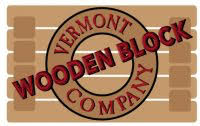 A system of unique interlocking building blocks that fit together to create endless possibilities. Standard blocks combine with small End Blocks to create turns and openings, such as doors and window. Wide, Flat Top Blocks are used for capping off buildings, or stools to sit on. “These natural toys are made from regionally sourced White Pine wood and are supplied unfinished.
A system of unique interlocking building blocks that fit together to create endless possibilities. Standard blocks combine with small End Blocks to create turns and openings, such as doors and window. Wide, Flat Top Blocks are used for capping off buildings, or stools to sit on. “These natural toys are made from regionally sourced White Pine wood and are supplied unfinished.
Florescent
 A line of handcrafted fragrance made with 100% pure botanical ingredients. “Having rarely experienced the gentle depth and complexity of true botanicals in conventional perfumes, Susannah became infatuated with these vibrant ingredients and dedicated herself to the art of scent blending with botanicals. Each fragrance is composed of elegant and wild aromas that come from distillations and extractions of real flowers, herbs, woods, balsams, resins, seeds and more. These pure organic and wild-crafted essences elevate the scent experience. Florescent fragrances are free of the synthetics, chemical additives, and fixatives typically found in perfume.
A line of handcrafted fragrance made with 100% pure botanical ingredients. “Having rarely experienced the gentle depth and complexity of true botanicals in conventional perfumes, Susannah became infatuated with these vibrant ingredients and dedicated herself to the art of scent blending with botanicals. Each fragrance is composed of elegant and wild aromas that come from distillations and extractions of real flowers, herbs, woods, balsams, resins, seeds and more. These pure organic and wild-crafted essences elevate the scent experience. Florescent fragrances are free of the synthetics, chemical additives, and fixatives typically found in perfume.
Co-workers with Fragrance
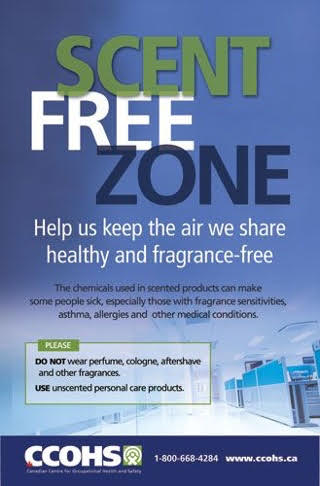 Question from Sus D
Question from Sus D
Hi Debra,
I work with people who have worked with me when I contracted fragrance allergies, they refuse to stop using their fragranced lotions and work in my office before I get there.
We have a policy addressing this but isn’t enforced even by HR department.
I work in a health care facility and it has gotten bad over the last five years. we have customers that have fragrance allergies also.
Why do the leaders let this happen with these employees who don’t seem to care about anyone but themselves. the leaders are aware, I know of one family that has wrote letters addressing the issue.
I was told I didn’t have the right to ask people to not use their product and the only manager that has tried to help feels like his hands are tied due to no one else caring to enforce the policy.
is their any organization to contact. already contacted JAN. Any advice. the manager wants to get me and the one that works in the office before me to met and have a discussion. I say it won’t help cuz she already knows and has know since the beginning but will not stop.
Debra’s Answer
Readers, anyone have a similar experience? Any advice?
Here is a page from The Chemical Sensitivity Foundation with many links regarding fragrance-free policies
I understand you have a policy and need help getting it enforced.
Here are some other resources that might help with enforcement. Some of them address refusal to comply. You might contact any of these organizations for help with your situation.
SAVVY WOMAN’S ALLIANCE: Five Friendly Fragrance-Free Signs
New ADA Guidelines for Fragrance Sensitivity Explained | Labor Law
Accommodation and Compliance Series: Employees with Fragrance ..
How I Found My New Refrigerator
 Larry and I have been living with his mom and two siblings for the past two months, and it had become abundantly clear that a standard refrigerator would not hold enough food for five adults with varying food preferences.
Larry and I have been living with his mom and two siblings for the past two months, and it had become abundantly clear that a standard refrigerator would not hold enough food for five adults with varying food preferences.
So we decided to get a small “apartment size” refrigerator to hold our food. A bit inconvenient to have to bring food into the kitchen from another room to prepare it, but the trade-off is that we can actually find our food and nobody else will eat it, intentionally or by accident.
And then we had to find one.
Larry looked on craigslist but didn’t find anything. I called around to used appliance stores, but they didn’t have any. Prices on new ones were more than $400, and I didn’t want a new refrigerator.
So Larry and I went to the bank to get some cash, and cleaned out his van so we could bring the refrigerator home, and looked again at craigslist.
There was a new listing.
It was about 45 minutes away, in Mill Valley. It was in perfect condition and totally clean. It was six months old so it didn’t have the “new refrigeratory smell” of plastic outgassing.
A young couple was selling it because they were moving out of their rental, which just happened to be a charming Arts & Crafts cottage in a grove of redwoods that was 100 years old. The owner wanted to tear down the house. The couple had moved everything out of the house and the refrigerator had to be gone today.
The ad said $200, but when Larry asked the seller how much he wanted, he said $150.
We took it.
Larry and I had wanted to spend $100 and his sister had given us $50 toward the refrigerator as an early Christmas present. So we spent the $100 we wanted to spend and got the exact refrigerator we wanted.
I have to tell you that intention plays a large part in finds like this. Knowing what we want and intending we will find it. Works every time.
Lead Paint on Glass Kettle
Question from Kaila
Hi Debra,
I recently purchased a glass kettle by Trendglas Jena to replace my old kettle and avoid leeching metals. Sadly, I didn’t see your comment on lead in the markings on the outside before I bought it, otherwise I would have purchased their smaller one with no markings.
I wrote the company and they sent me their test results (yes lead in the paint).
However, their kettles pass: FDA, Prop 65, REACH and several other European standards.
Is the risk with this paint just that it would wear over time and you’d come into contact with it washing, etc. Or that it can leach into the glass from the outside? I did not want to purchase a Chinese glass kettle and chose this because of the higher European safety standards. I may be able to exchange for one without markings. Thoughts?
Debra’s Answer
Europe does have higher safety standards.
I’m not really concerned about this.
A lot of research has been done on lead exposure and there are zero warnings about touching lead or breathing air next to a surface with lead paint. The hazard of lead exposure from paint is when it is ground into dust and inhaled, such as a door or window wearing away paint from opening and closing, and releasing it into the air. Also eating chips of lead paint is a hazard.
But I have no evidence or logic that would indicate to me that lead paint on a measuring cup would be a hazard.
Would I prefer there to be no lead paint on a product? Yes. But I don’t see a hazardous exposure here.
Someone please correct me if you have some evidence otherwise.
Organic and Pesticide-Free Christmas Trees, Wreath and Greenery

Every Christmas I look for organic Christmas trees, wreaths and greenery. In the past they have been difficult to find, but last year I have quite a few. Some of these are from Debra’s List, others I’m not adding only because they are seasonal. This is last year’s post updated.
Before you make a decision, check out this great article from Beyond Pesticides about Christmas Trees and Pesticides. They talk about pesticides used on Christmas trees, give suggestions on how to find organic trees in your area, and give lots of tips about how to handle and care for your tree.
And here’s another interesting article about how farmers are learning to reduce and eliminate their use of pesticides. It says that even though Christmas tree farmers do regularly use pesticides such as Roundup and Lorsban, the amount of pesticide residue that may be present on a Christmas tree by the time it gets to your house in “minor.” Most pesticides are sprayed in the spring or summer, so by December, they’ve been broken down by the elements.
ONLINE SOURCES
SILVERTON TREE FARM “Our Christmas trees are organically grown, with no pesticides used. Our tree farm is certified with the American Tree Farm system. To be certified we must follow “[t]he American Forest Foundation’s (AFF’s) 2010-2015 Standards of Sustainability for Forest Certification…” By following such standards we are promoting “…the vitality of renewable forest resources while protecting environmental, economic, and social benefits and work to increase public understanding of all benefits of sustainable forestry.” (http://www.treefarmsystem.org/) We are also working toward organic certification.”
LYNCH CREEK FARM Wreaths, garlands, centerpieces, and “trees” (assembled from sprigs) made from Noble fir boughs from the Cascade Mountains. Assembled on a farm that has been organic since 1980. “We generate revenue for local landowners, giving them a reason to protect their forest versus opting to clear-cut.”
GRANSTORM EVERGREEN Wreaths, garlands, and a cross wreath. “We do not use any pesticides when growing or making our evergreen products. We are a family business that has been making wreaths for over 30 years.”
OREGON HOLIDAY WREATHS Wreaths hand-made with fresh cut boughs of Noble Fir, Douglas Fir, Juniper, and Pine Cones. “We are 100% organic and pesticide-free.”
CREEKSIDE FARMS Holiday wreaths made from plants of the season that are not evergreens, grown naturally without pesticides.
ORGANIC BOUQUET Wreaths, plants, and fresh flowers. “All of our sustainably certified partner farms in Ecuador, Colombia and California use earth-friendly techniques to grow the flowers you enjoy! Instead of using harmful synthetic chemicals for fertilizers and pesticides, natural resources are used to grow these beautiful flowers.”
LOCAL SOURCES
GREEN PROMISE List of organic Christmas tree farms in USA. This list has been growing for many years and is updated for 2016.
SLOW FLOWERS A lovely online directory that lists local providers of “slow flowers”—flowers that are locally grown and often organic. Providers know the source of the flowers they sell.
CERTIFIED SUSTAINABLE CHRISTMAS TREES
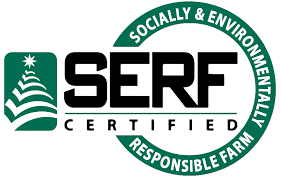 Now there is a program for Christmas tree farmers that educates and certifies farmers for sustainable practices in the Northwest. Socially and Environmentally Responsible Farm (SERF) Includes in their certification requirements use of Integrated Pest Management (IPM) instead of toxic pesticides.
Now there is a program for Christmas tree farmers that educates and certifies farmers for sustainable practices in the Northwest. Socially and Environmentally Responsible Farm (SERF) Includes in their certification requirements use of Integrated Pest Management (IPM) instead of toxic pesticides.
While only four farms in Oregon have been certified as of this writing, Oregon is the largest Christmas tree producer in the nation—more that 6 million tress are harvested there every year, and they are shipped all over the world. So you just might see a SERF seal at a Christmas tree lot near you.
A GIFT OF A WREATH
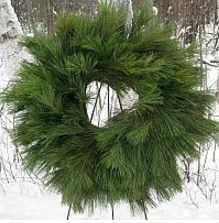 Last year I received a beautiful wreath from Jen’s Wreaths.
Last year I received a beautiful wreath from Jen’s Wreaths.
I had contacted them last week for this post, but there was a big blizzard in Minnesota and they didn’t get the message in time. When she finally responded, Jen offered to send me a wreath in exchange for adding them to the list. How could I refuse?
All the materials for their wreaths are hand-harvested from their local forests. “We are all about sustainable harvesting and a lot of our greenery actually comes from logging sites and the branches they discard…Some of our bows are made of synthetic material, but we’re on the look out for affordable, durable ribbon that is organic and healthy for everyone.” Maybe they will have that this year. Sustainably harvested wreaths with organic bows. 🙂
I emailed Jen on Friday I needed the wreath by Monday and it arrived on Saturday. It was full and lush and just beautiful. It was mixed greens—cedar, white pine, balsam fir and dogwood—so fragrant I could smell it even sitting in the next room as I wrote.
Nontoxic Choices for Artificial and Alternative Christmas Trees

Question from Stacey
Hi Debra,
Just wondering if there are any new resources for artificial Christmas trees. We have gotten real trees in the past, but for various reasons, we prefer to get an artificial tree. However, I do not want a toxic tree. Any new recommendations?
Thanks so much!
Debra’s Answer
There are several types of artificial trees. I haven’t done an extensive study of all the types, but the plastic ones are most prevalent and most toxic.
PLASTIC TREES
Most plastic trees are made in China from polyvinyl chloride plastic (PVC). Since it is a semi-soft plastic, it would outgas phthalates, like a PVC shower curtain.How much it outgasses is hard to say. Cheap artificial trees are most likely 100% PVC.
I called Balsam Hill , who advertises having the most realistic and beautiful Christmas trees, and their trees are made in China. They have three grades of trees. Their “traditional” is 100% PVC, and their “realistic” and “most realistic” are 70% nontoxic polyethylene and 30% PVC.
If you want a plastic artificial tree, your best choice is the Christmas trees sold at IKEA.
It turns out the Fejka trees at IKEA are made from polyethylene and polypropylene, two of the least toxic plastics available. Polyethylene is so nontoxic it is approved by GOTS to be safe enough to use to make a crib mattress. There are no other chemicals on these trees like fire retardants. I called IKEA and they said no. I asked them if, in general, ALL the materials are included on the tag and online and they said yes. So if it’s not on the tag, it’s not in the product. These trees are not sold online, only at local IKEA stores. But call first if you want one, as they are not available in all stores.

So if you want a plastic tree, be sure to check what type of plastic it’s made from. Avoid PVC, choose polyethylene.
OTHER OPTIONS FOR ALTERNATIVES
Here is a solid hardwood trees made in New Hampshire by Festive Trees. I don’t know anything about the paint or finish, but they will last year after year. You may be able to get one unfinished and paint it yourself, or if you are handy or know someone who is, you could even make one in any size you want.
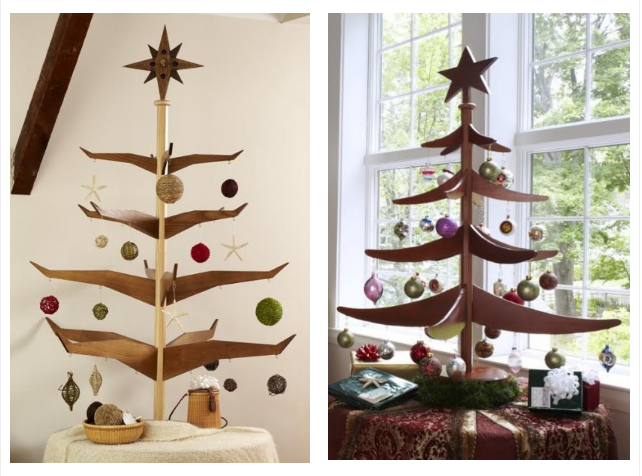
Ii you don’t want to buy a tree, consider finding or purchasing bare branches on which to hang lights and ornaments. Though the evergreen is the traditional greenery for winter as it symbolizes life continuing even in the dark days, bare branches can be beautiful and reflect the bare trees outdoors. Right now where I am living there is a beautiful persimmon tree with bare branches and bright orange permissions hanging all over it like Christmas tree ornaments.
One Christmas I was living in a rented room in someone else’s house and didn’t have room for a tree. But just before Christmas there was a big winter storm, and when I went for a walk the street was strewn with evergreen branches. So I gathered as many as I could carry and put them in a vase, and that was my tree.
Or trim whatever evergreens you have in your yard, put the trimmings in a vase, and decorate them.
There are all kinds of creative ways to come up with a Christmas tree by using various nontoxic materials and your imagination. You could easily make this tree below out of branches. For more inspiration on ways to make your own Christmas tree, see 25 Creative Christmas Tree Ideas.
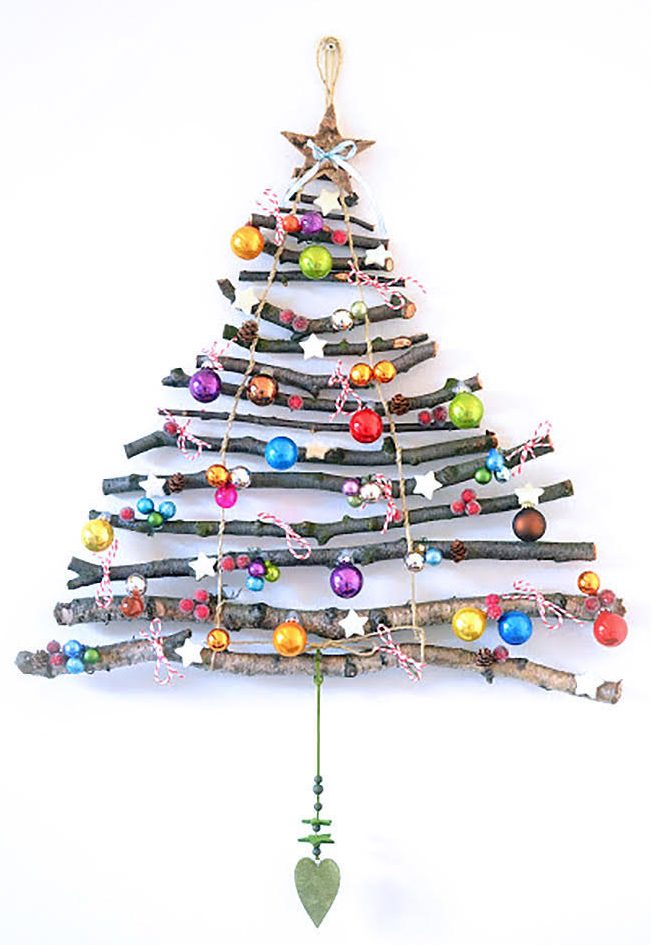
Fresh Cut Trees
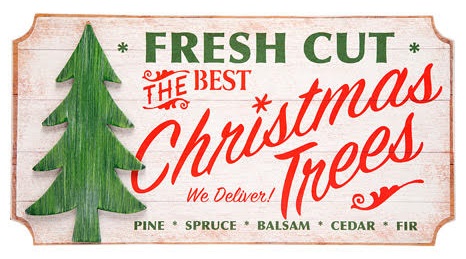
Fresh-cut trees are sold almost everywhere at holiday time – from seasonal tree lots to supermarkets.
Rural areas near urban centers often have tree farms where you can cut your own tree – a fun outing to take during the holidays that will connect you and your family with the tree in it’s natural environment and the family who grew it. Purchasing from a local tree farm supports your local economy and allows you to choose a species of tree that flourishes in your local bioregion. You can also meet the growers and talk to them about their growing methods.
To forego a holiday tree for the sake of preserving our natural forests is not necessary. Until fairly recently, all Christmas trees came from the forest, but this is no longer true. Of the approximately 35 million Christmas trees that are sold each year, 95 percent are shipped or sold directly from Christmas tree farms.
The environmental effect of fresh-cut holiday trees is actually beneficial. Over one million acres of land have been planted in Christmas trees, and over 100,000 people are employed growing them, mostly on family farms. Though some of these trees are harvested each year, their value as a commercial crop adds this acreage to the total amount of forested land on the Earth. For every fresh-cut tree harvested, three seedlings are planted in its place and about ten others are still being grown on farms to prepare for the next ten harvest seasons.
One organic grower reports that in addition to generating income, Christmas trees are a pleasure to grow. In her organic tree plantation, several species of birds have taken up residence in their trees and in the grasses that grow between the trees. The soil in the abandoned field in which she is growing her trees is improving every year, as it is being maintained as an agricultural area. The plantation provides a place of scenic beauty, a place for picnics in spring, summer and fall, and a place for wildlife. Because they sell on a cut-your-own basis, the growers see many of their friends and neighbors when they come for trees.
SAFE SPECIES FOR FRESH CUT TREES
Certain kinds of Christmas trees contain natural substances that can be harmful even to those in good health.
Six species account for about 90 percent of the holiday tree trade. Scotch pine is most popular, with about 40 percent of the market, followed by Douglas fir which accounts for about 35 percent. The other common species are noble fir, white pine, balsam fir and white spruce. Different species predominate in different parts of the country.
Of these species, the varieties of pine are the most problematic. Pine contains resins and other aromatic chemicals that have natural insecticidal and bactericidal properties that can kill insects and the bacteria that cause odor.
In this case, however, “natural” does not mean safe. These same chemicals can also damage the respiratory tract, causing chronic respiratory disease, and asthma. So if anyone in your family has increased asthma in the wintertime, it could be your Christmas tree.
The safer choice would be a natural fir or spruce tree, as they do not contain these irritating chemicals. While it was easy to find literature on the dangers of pine, I was able to find nothing on the health effects of exposure to fir or spruce. I live in a fir forest and the Miwok Indians who used to live here would drink tea made from the fir needles. So I think a fir tree would be safe.
Many years ago I asked Mia Rose, who had a long-time dedication to safe ingredients, about the health effects of spruce and fir. She made a natural holiday air freshener that contains essential oils of these trees. “I could not find any data that showed any negative effects of fir or spruce,” she said. “In fact, they have a positive effect of relieving stress and elevating emotions.”
HOW TO KEEP YOUR FRESH-CUT TREE FRESH
When you bring your tree home, remove any needles lodged among the branches, then care for it as you would cut flowers.
Keep the tree outdoors in a protected area until you are ready to decorate it. Keep the cut end of the trunk submerged in water. Saw a fresh straight cut across the trunk about an inch up from the original cut to open the tree stem for water intake. Then place it in any large container filled with fresh water. If you allow the water level to drop below the fresh cut, a seal will form, just as it does on cut flowers, and a new cut will be necessary. Use hot water the first time to dissolve pitch that may be clogging water conduction tissues.
Use a Christmas tree holder that holds water. If you refill the water on a regular basis, your tree will remain fresh and fire-resistant throughout the season and will not lose its needles.
FRESH TREES DON’T CATCH FIRE
There is some concern that fresh Christmas trees will start fires. A fresh Christmas tree that is well cared for will not catch fire. In fact, I read that there have been reports of house fires where the house burned completely, but the fresh Christmas tree in the house did not even catch fire.
However, it is wise to unplug the tree lights before retiring or leaving home. While the tree is unlikely to burn, overheated lights can start a fire among the paper gift wrapping or curtains.
It is also best not to place your tree next to the fireplace. Again, while a well cared for tree is unlikely to burn, sparks from the fire could ignite the paper wrapping of gifts placed beneath them.
RECYCLE YOUR TREE INTO A BIRD FEEDER
Evergreen trees can be “recycled” in the garden as a to make a protected bird habitat, adding color and interest to the winter garden. The branches provide shelter from strong winds and cold. Attract birds with fruit slices, seed cakes, suet bags, and pine cones smeared with peanut butter and seeds, hung on the trees like ornaments. Make strings of popcorn or cranberries, or strings alternating cranberries with half-inch cubes of beef suet, or apples wedges with raisins and Cheerios. You can hang any leftover Christmas cookies on the tree, too.
Place your tree near a window so you can observe the action. To deter unwanted visitors such as raccoons and squirrels, try mounting your feeder on a pole at least fifteen feet from any overhead branches and at least fifteen feet off the ground. Mount an inverted metal cone just below the feeder.
When spring comes and the tree begins to dry out, it can easily be broken apart or chopped to make mulch and returned to the garden.
Living Trees
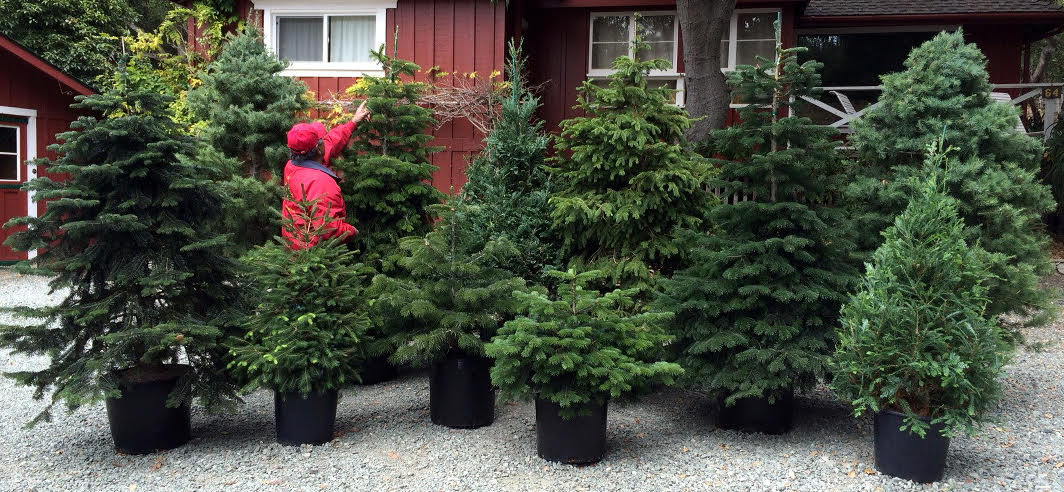
Instead of cutting a tree for the holidays, you can plant one, when you choose a living tree. Sold in containers, living trees have their roots intact and can be planted outdoors or grown in their containers following the holiday.
PLANTING YOUR TREE OUTDOORS
The most important decision to make when choosing a living tree is where it will be planted after the holiday season.
Choose the spot to plant your tree before you buy, making sure that there is plenty of room for the tree to grow.
If you don’t have space on your property to plant a tree, find out about tree-planting programs in your community who would welcome a post-holiday donation. If you decide to make a gift of your tree, be sure to check with the recipient regarding preferred species.
If you have a large yard that needs planting, you can plant a “holiday tree grove”. Each year purchase a tree and add it to the grove. This will become a special place to enjoy year-round, and a reminder of past celebrations.
Once planted, outdoor evergreens can be decorated and serve as a holiday tree for the neighborhood.
CONTAINER TREES
If you have limited space, you can plant a living tree in a container and bring it indoors each season. The remainder of the year it can add background greenery to a deck or patio.
You can keep your tree a manageable size with yearly pruning. Our recycled Worldwise EcoPlanter is especially suited for this purpose as it will not break, chip, or crack in cold weather and will last as long as the tree.
Nurturing a tree throughout the year gives it a special meaning during the holidays. Because you participate in its growth and care throughout the whole year, it becomes part of your family, a “friend” who comes to celebrate with you year after year. You could start with a tree seedling and watch it grow, particularly if you start it on a child’s first holiday or a first holiday of a marriage.
CHOOSING THE RIGHT SPECIES
The most important aspects of choosing the right species are to choose a species that will thrive in your area, and how fast the tree will grow. If you are planting outdoors, you probably want a tree that will quickly grow to full size. If you are going to keep it in a container, it is best to choose a species that is naturally slow-growing.
These are the most popular species for living holiday trees:
| Common name | Scientific name | Nursery sizes | Best climates |
| Slow growth | |||
| WHITE FIR | A. concolor | 1-6 feet | Everywhere |
| COLORADO BLUE SPRUCE | P. pungens ‘Glauca’ | 1-6 feet | Everywhere |
| NORWAY SPRUCE | Picea abies | 3-7 feet | Everywhere except south and deserts |
| DWARF ALBERTA SPRUCE | P. glauca ‘conica’ | 1-4 feet | Everywhere except deserts |
| NOBLE FIR | Abies procera | 3-6 feet | NE, W, Midwest, Rockies |
| Average growth | |||
| JAPANESE BLACK PINE | P. thubergiana | 1-6 feet | Everywhere |
| NORFOLK ISLAND PINE | Araucaria heterophylla | 1-7 feet |
Tropical, Subtropical, SW, S, Gulf Coast
|
| SCOTCH PINE | Pinus sylvestris | 2-8 feet | NW, W, Midwest, Rockies |
| DOUGLAS FIR | Pseudotsuga menziesii | 3-7 feet | NW, W, Midwest, Rockies |
| Fast growth | |||
| ALEPPO PINE | P. halepensis | 2-6 feet | S, SW, deserts |
| MONTEREY PINE | P. radiata | 2-8 feet | N, Midwest, E, W |
| MONDELL PINE | P. eldarica | 1-8 feet | SW |
CARING FOR YOUR TREE INDOORS
Since warm indoor air is not the native winter habitat for evergreen trees, it is important to properly care for your tree to keep it green and healthy through the holidays.
Limit indoor time to two weeks, and place it on the opposite side of the room from any heat sources, including fireplaces and woodstoves, heater vents, and unshaded south-facing windows.
Use “cool” 5-watt lights on the tree, as heat from regular lights can dry out the tree.
Give the tree a good soaking before bringing it indoors. Let it drain for a day or two to prevent ending up with a puddle on the floor. Make sure to put the pot in a saucer and the saucer on a Worldwise SurfaceSaver to protect the floor. Water every three days to keep the soil moist.
For time-release watering, and to keep the tree cool, try watering with ice cubes. As they melt, the tree roots will slowly absorb the water.
“Hypoallergenic” Trees
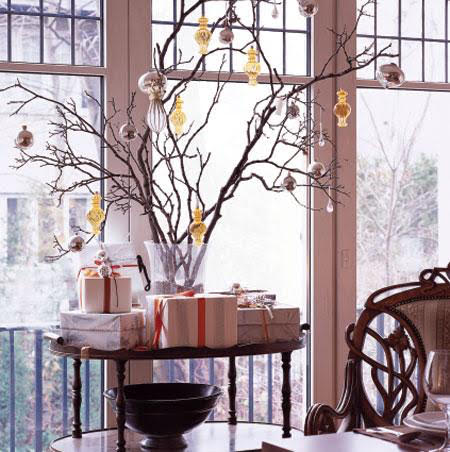 If you are sensitive to any evergreen tree, you could, obviously, use a fake tree made of plastic or metal, but there are ways to make a real tree more tolerable. People with sensitivities have given me some great ideas.
If you are sensitive to any evergreen tree, you could, obviously, use a fake tree made of plastic or metal, but there are ways to make a real tree more tolerable. People with sensitivities have given me some great ideas.
- Decorate a live tree outside and put it in a picture window. That way you can see it but don’t have to smell it. Then place your gifts “under” the tree by putting them under the window. You could even plant a live tree in the window so it would be there year after year.
- Put up a tree with outdoor lights and bird food (pine cones with peanut butter and millet branches) outside a picture window. Your tree will be filled with birds.
- Find any green plant that you tolerate and decorate it with lights and ornaments.
- Use bare branches from a florist or outdoors and decorate it with Christmas tree ornaments.
One year, when I was on a very tight budget, I decorated a branch that had fallen in a storm. Though evergreens have a tradition with being associated with the continuation of life through the long winter, really you can decorate anything—it’s the spirit that counts!
Nontoxic Christmas Tree Ornaments
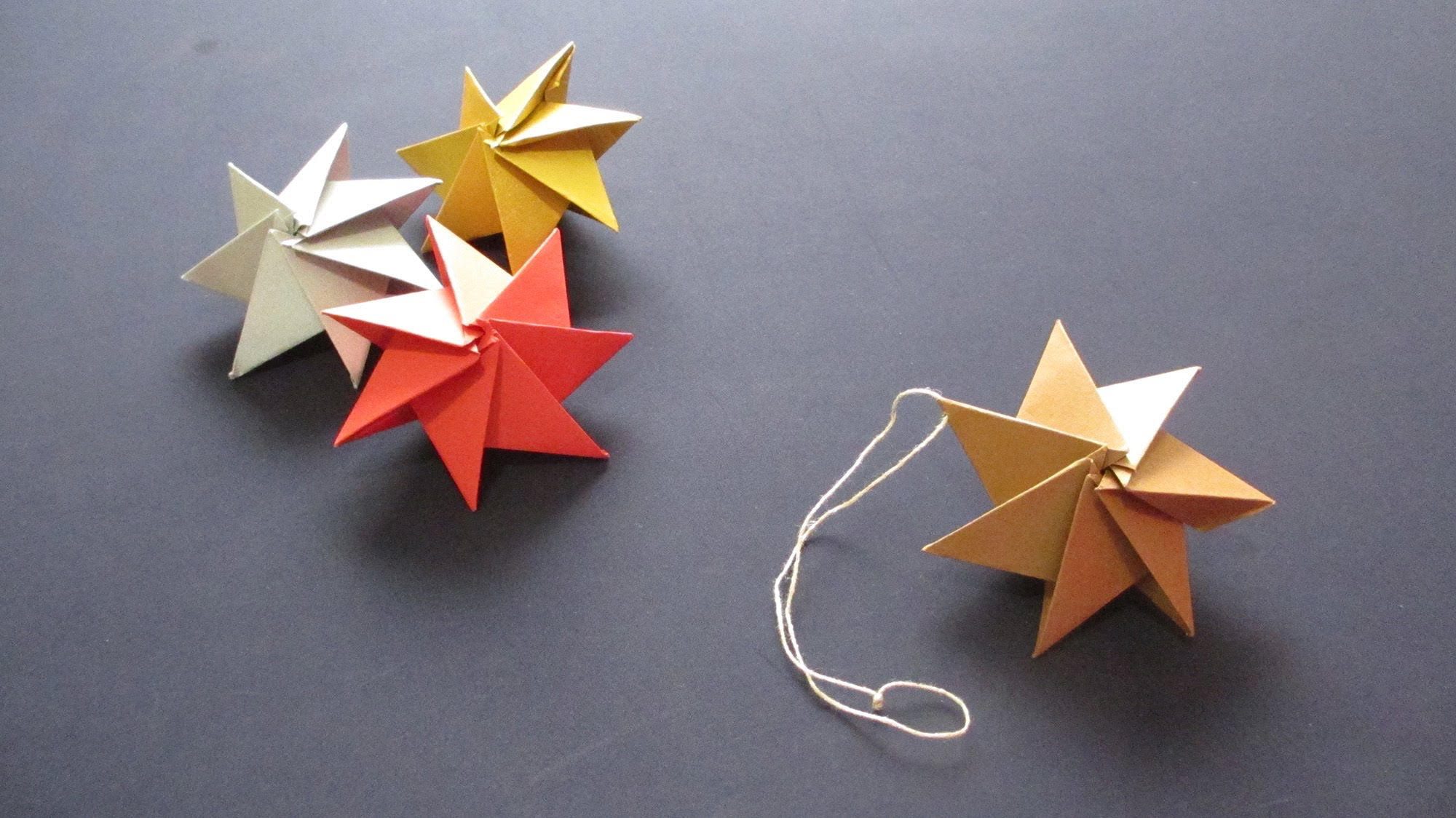 Instructions at https://youtu.be/GHMRnBRf6_c
Instructions at https://youtu.be/GHMRnBRf6_c
Like most everything else today, it seems like most Christmas tree ornaments are made from plastic and other synthetic materials. But that wasn’t always so.
The first ornaments on holiday trees reflected the “ornaments” hanging on natural trees during the season: fruits, nuts, and cones. To continue this tradition:
- Tie small red and green apples to the tree with colored ribbons
- string fresh cranberries and popcorn
- glue gold tie to nuts and hang them
- hang dried apple rings and cinnamon sticks for fragrance.
Cookies are a popular tree decoration. Gingerbread cookies add a wonderful fragrance to the natural scent of the tree. If you wish to make inedible “cookies” that you can reuse year to year, try this recipe:
Reusable “Cookie” Ornaments
1 cup salt
2 cups flour
1 cup water
2 tablespoons vegetable oilSpices or powdered pigments can be added to color the dough
Mix dry ingredients together in a bowl. Add water and oil and stir until blended. Knead with your hands to make a smooth texture. Roll dough out on a cutting board to desired thickness (thick enough so they won’t break easily) and cut with cookie cutters or a knife. Use a straw to make a hole at the top for threading a ribbon. Bake at 250 degrees until hard (1-2 hours).
When cookies are cool, decorate with water-based paints. Put a ribbon through the hole, and hang on the tree.
Eggshells can also be made into ornaments.
- Poke a hole into each end of an egg with a sterilized sewing needle.
- Over a bowl, blow into the hole the top of the egg (the small end) so that the insides come out through the bottom hole. Save the egg insides for cooking. Paint eggs with water-based paints.
- Bend a pipe cleaner and stick it in the top of hole of the egg. Bend the other end and hang it on the tree.
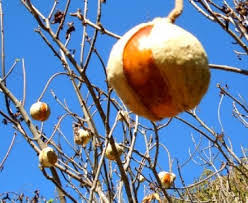
California buckeye
You can also decorate your tree with whatever is growing naturally in your area. Here in Northern California, buckeye trees lose their leaves during the fall, leaving branches hung with “buckeye balls” that are just the size of tree ornaments. We also have a native shrub called coyote bush that produces a small white flower in December that makes it look like it is covered with snow. Branches of coyote bush placed between tree branches makes holiday tree look like it just came in from a frosty forest, without the fake snow flocking.
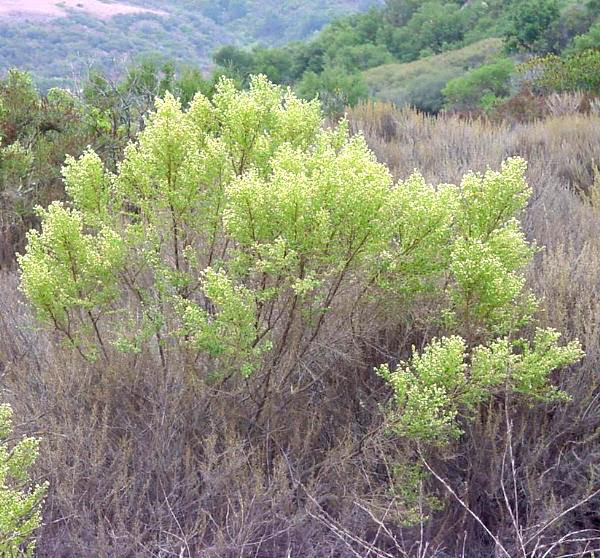
Coyote bush
Check your own garden and community for cones, berries, dried seed pods, twigs, and feathers. After the holidays, they can go in the compost.
Save holiday wrapping paper, greeting cards, and other interesting papers and pictures (including pages from magazines) throughout the year. Designate a box for collecting them instead of throwing them in the trash, then use them to make colorful and interesting paper ornaments:
- Origami and other paper craft books will have many good ideas and instructions.
- Make paper chains by making a loop with a strip of paper, then staple it shut and make another loop by sliding the strip of paper through the first loop.
- Cut paper ‘snowflakes’ from used office paper
- Images from old holiday cards or cut from magazines can be trimmed and tied to the tree with a ribbon (magazine images will need to be glued to a 3×5 card or scrap cardboard for stiffness).
Throughout the year, look for ornament possibilities at flea markets and garage sales. Keep your eyes open for ornaments for sale and any small items that would make interesting ornaments. Look for materials that could be modified in some way to make ornaments.
The History of Holiday Trees

When we celebrate the winter season by decorating our homes with evergreen trees, wreaths, and boughs, we continue a tradition that has its roots in the earliest beginnings of humankind. Throughout the world, virtually every culture has used evergreens for some kind of celebration around the Winter Solstice – a yearly affirmation of the continuation of Life and renewal of our integral participation in all Life. By honoring the tree with decorations, we acknowledge Nature and its continuous cycles that sustain our lives.
After the last ice age, Europe was covered with immense forests. Because prehistoric people depended on the forests for food and shelter, fire, transportation, and tools, trees were an important part of their environment. In addition to their practical uses, trees seemed to embody the cycle of Nature itself—they grew and made sounds, gave birth to leaves and flowers and fruit, they “bled” when cut, and became old and died.
Trees symbolized fertility and life, strength, and steadfastness of spirit. Where evergreens were abundant, they became the trees more highly revered—while other trees lost their leaves and seemed to die during the winter, the evergreens stayed fresh and green, even through the most severe weather. That evergreens continued to hold their leaves and their “life” through the bleakness of winter resulted in their use as powerful symbols of the continuance of life. Evergreen boughs were reminders of the green plants that would grow again when the light-filled days of summer returned.
EVERGREENS IN ANCIENT CELEBRATIONS
Including trees in celebration and worship is common around the world. In China, sacred trees bore red banners with words of praise and thanksgiving on them. Greek and Roman goddesses and gods each had their special trees, which were draped in garlands of flowers.
The Winter Solstice marks the point of deepest darkness and, following, a return of the light that made Nature green and fruitful.
The use of evergreen trees for celebration at Winter Solstice began with the exchange of fir-tree twigs and the display of fir-tree twigs and branches on homes and in meeting places as a wish for the continuation of life. These twigs developed into bundles, then later into the whole tree.
Romans decorated their homes and temples with evergreen boughs. Winter Solstice was a special time of peace and equality when wars could not be declared, when slaves and masters could eat at the same table.
Eqyptians brought green date palm leaves into their homes to symbolize life’s triumph over death.
European Druids tied apples to the branches of oaks and firs to thank the god Odin for blessing them with fruitfulness, and also made offerings of cakes shaped like fish, birds, and other animals. Lighted candles, honoring the sun god Balder, were placed on the boughs. The Druids used evergreen holly and mistletoe as symbols of eternal life, and placed evergreen branches over doors to keep away evil spirits.
Late in the Middle Ages, Germans and Scandinavians placed evergreen trees inside their homes or just outside their doors to show their hope in the forthcoming spring.
THE FIRST CHRISTMAS TREE
Legend has it that the tradition of decorating trees to celebrate Christmas began with Reformation leader Martin Luther.
One clear, crisp Christmas Eve, around the year 1500, Luther was walking home through the woods. He paused for a moment in a grove of tall pine trees to gaze at the beauty of the starry sky. The fragrance of the pines reminded him of incense and the wind in their branches sounded like a congregation at prayer. From where he stood, it seemed like thousands of stars had settled on snow-dusted branches. Luther brought a small fir tree home and covered with small candles so he could share this story with his children. He lit the candles in honor of the birth of Christ.
The first Christmas tree actually documented occurred in 1605 in Strassburg, Germany. It was without candles, but decorated, as the Druids did, with bright red apples.
The Christmas tree migrated next to Austria and France, and then to England. When Queen Victoria of England married Prince Albert of Germany in 1840, he brought to England his German Christmas tree, which was by then covered with candles and hand blown glass ornaments. Pictures of the Queen and her family around a tabletop tree appeared in the newspapers, and soon all England had similar trees.
THE CHRISTMAS TREE IN AMERICA
The Christmas tree became the central focus of holiday celebrations in American homes a few years later when Gody’s Lady’s Book published a drawing of a family around a Victorian decorated tree. The Christmas tree may have come to the United States as early as the late-1700s, with German soldiers who were hired to bolster English troops during the American Revolution. According to legend, on the bitter cold Christmas Eve of 1776, at Trenton, New Jersey, the presence of a candlelit evergreen tree so reminded German soldiers of home that they abandoned their guard posts to eat, drink and be merry. George Washington attached that night and defeated them, turning the tide for the Revolution.
COMMERCIAL CHRISTMAS TREES
The commercial Christmas tree market began in 1851 when Catskill farmer Mark Carr hauled two ox sleds of evergreens into New York City and sold them all. By 1900, one in five American families had a Christmas tree, and 20 years later, the custom was nearly nationwide.
Christmas tree farms began during the depression. Nurserymen couldn’t sell their evergreens for landscaping, so they cut them for Christmas trees. Cultivated trees were preferred because they had a more symmetrical shape than wild ones.
Wreaths and Wreathmaking

Wreath I made myself in Florida in 2005.
Wreaths are now a common sight at all times of year, but they have their origins in the ancient wreaths made for Winter Solstice.
Back in pre-industrial times, people were dependant for their survival on what they could obtain from their natural surroundings. In the northern latitudes, winter was a time when there was little food. This made the Winter Solstice very important, for on that day the days would begin to get longer and light and life would return to the Earth.
Because the return of the sun was so important, they deveoped traditions they believed would ensure the return of the light.
The everygreen wreath was one of these traditions. By making wreaths in circular shapes using evergreens that continued to survive when all other plants had died, they aligned their own intentions for life with the process occurring in nature.
Though evergreen wreaths are widely sold everywhere at Christmas time, I like to make my own. It is a way to take an hour or two away from the hustle and bustle of the season to sit and just be aware of the season and it’s meaning. I also make my wreath from local evergreens, rather than evergreens imported from other places, which connects this activity to the place where I live.
I learned to make wreaths when I lived in Northern California. I lived in a village set in hills covered with evergreen fir and bay forest, with stands of evergreen redwood nearby. I was on the Board of Directors of our local Community Center and every year we put on a Holly Fair as a fund raiser. We had tables for local craftspeople, Santa Claus, I would play the piano for sing-along Christmas carols, there were cookies for kids to decorate and we had a room set up where visitors could make a wreath and take it home.
Invariably, there would be a big storm right before this event and the ground would be covered with all kinds of fallen branches, so we had no shortage of evergreens. People would just drive around in their pickup trucks and collect them off the streets and bring them in for wreathmaking.
Usually the wreathmakers were women. The first year, they taught me how to make a wreath. In the following years, I taught other women how to make wreaths. It was so soul-satisfying to sit and talk with other women while we all sat together and fashioned these circles of life–each one unique and an expression of that woman’s own creativity. Usually we would all go home and hang them on our front doors, so I would see all the handmade wreaths as I would drive around town.
When I moved to Florida in 2002, I didn’t have a place to go to make a wreath, so I didn’t make one in 2002 or 2003 or 2004. But in 2005, I decided to just make one myself. We found a Christmas tree farm and got a native Southern Red Cedar tree, so I used sprigs of cedar trimmed from the lower discarded branches. Then I added spiky-leaded evergreen pittisporum that grows in my garden and another evergreen I haven’t identified yet. Then I added a recycled bow I received on a gift the previous year.
Now that I’m back it California I have no shortage of material with which to make a wreath this year.
How to make a wreath
Making a wreath is very easy.
Traditionally, I imagine that long grasses were used to make the wreath base, and tied into a circle with vines. Then evergreens were attached, again by tying with vines.
I’m going to tell you the modern method that I use. You’ll need some floral tape and 22 gauge wire, which are easy to find at craft stores.
First, make a circle frame with the wire to your desired size (you can also purchase wreath frames from craft stores or use a wire coathanger–leave the hook intact for hanging).
Next, gather your greens and cut pieces about 4 inches long. Strip the bottom of the stem of any greenery up about one-half inch. Make little bundles and wrap the stem end with floral tape to hold them together. For a 12-inch diameter wreath frame, I make about fifteen little bundles.
Then, attach the bundles to the wire frame with floral tape. Attach the first one, then add the next one right close so they overlap. When all the bundles are attached at their base, use the wire to attach the tops of the bundles to the base. You just need to attach the back of the bundle to the base, leaving the front free.
Add any decorations you want by attaching them with wire.
Search on “Wreath Making Instructions” or “Making a Fresh Wreath” in your favorite search engine for lots more instructions and pictures.
My Thanksgiving Organic Heritage Turkey—A Shining Example of a Toxic Free Product

On 6 November I wrote a whole post about the different types of turkeys available and announced at the end of the post that I had decided to pre-order a heritage turkey, grown by local Sonoma County 4H club members and sold through the Slow Food Russian River Heritage Turkey Project.
Well I did pre-order that turkey and it was an amazing experience. I went to a local family farm the day before Thanksgiving to pick up my turkey. I wrote a check directly to the farmer. It was the best turkey I have ever eaten. It had a lot more fat, so it was moist and juicy and tasty, but not fatty (it all drips away during roasting). The flavor was turkey x10. And the aroma was incredible. Well worth every dollar.
But what I want to tell you about in this post is about this heritage turkey as a nontoxic product.
First of all, this turkey did not come from a factory farm, or any kind of agribusiness. It was raised on a family farm through a 4H program.
I want to encourage you to read all about the Heritage Turkey Project.
It began in 2001, when Slow Food USA started a project to reintroduce heritage turkeys to American consumers. The local Russian River chapter was encouraged to be turkey pioneers and order a Thanksgiving bird from a breeder in Kansas, which, including shipping, was very expensive.
And so an effort was made to find local small farmers who were raising turkeys and get them to raise heritage breeds.
The first year, or so, a well-known grower of turkeys, Willie Bird, raised 200 heritage turkeys. But then—get this—“the fact that the heritage breed turkeys could fly and had more spirit made them harder to raise and transport to where they went to be slaughtered made Willie ready for us to move on.”
The local chapter of Slow Food USA then began working closely with 4H families to raise 200 heritage turkeys per year. People in the community pitched in to make this program a success.
After a few years they switched to organic feed. So my turkey was local, organic and heritage.
When I went to pick up my turkey I told them that next year I wanted to meet my farmer, meet my turkey, come and visit and follow the whole process from local farm to my table. And they were delighted.
The Heritage Turkey Project
celebrates community,
our beautiful landscapes,
bountiful farms and ranchland,
and the people who grow the food and make the products
that nourish both body and spirit.
This is truly toxic free, healthy, and inspiring food. This is the food each one of us should be eating, at every meal, every day.
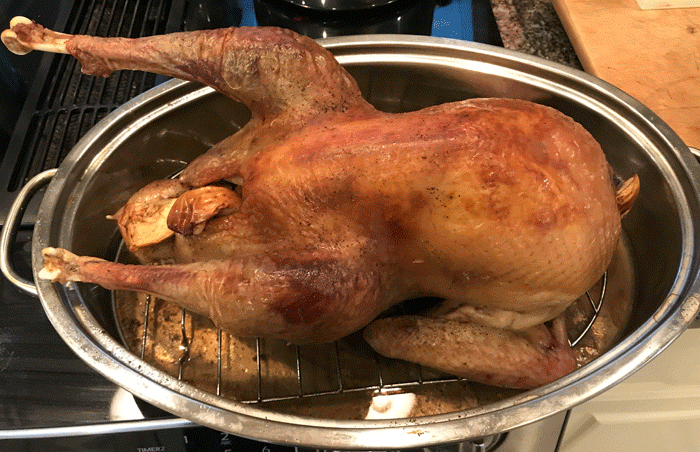
Do You Have Experience With Dental Materials? Please Share
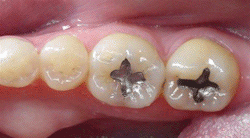
Question from Sharon
Hi Debra,
I just had a cavity fixed and I had a reaction to the dental bonding material – mouth got really extremely dry and burning sensation, hard to swallow, one part of my lower lip a little swollen -just from the fumes after she put the bonding agent in my tooth. It will be 3 days tomorrow since the work was done.
I have been using the same materials for several years with a little swallowing problems, but goes away after a day. I took just a little bit of antihistamine last night and woke up with a really dry mouth and sore throat. Very concerned. I see a holistic dentist but they just told me to gargle (??) I have done that a few times, flushed the mouth several times while I was there, brushed my teeth, gums, upper mouth, all over the tongue – still an issue.
Wondering if I might need to have this stuff removed. But not sure what I would put in place of it. I don’t want to go to urgent care, they will just tell me to take antihistamines. I did the dental testing. I am sensitive to everything.
Have you heard about any non-toxic glues/dental materials? Or, what do other people with MCS do or use? Thank you.
Debra’s Answer
Dear readers, I need your help answering this question.
I can research from online materials, however, the best answers come from real experience.
I am fortunate to have not needed cavities filled and other dental work, so I don’t have experience in this area.
But I know many of you have because you have given bits and pieces of information in other comments.
I’d love to put together a really good resource for getting nontoxic dental work done.
If you have knowledge or experience with this, please comment.
Thank you.
Heritage Foods USA
 Slow-growing, pasture-raised heritage breed meats are the most flavorful meats on the market. While they are not organic, they are real meat as nature intended and not hybrid breeds. Chicken, turkey, duck, goose, beef, pork, lamb, goat, plus bacon and charcuterie. “Heritage Foods USA was founded in 2001 to preserve endangered species of livestock from extinction. Endangered foods are saved when demand increases and farmers have the incentive to raise them. Slower growing pedigreed breeds are rare but chefs around the country swear by their superior taste. All our meats are raised on pasture by our network of family farmers and never fed antibiotics.”
Slow-growing, pasture-raised heritage breed meats are the most flavorful meats on the market. While they are not organic, they are real meat as nature intended and not hybrid breeds. Chicken, turkey, duck, goose, beef, pork, lamb, goat, plus bacon and charcuterie. “Heritage Foods USA was founded in 2001 to preserve endangered species of livestock from extinction. Endangered foods are saved when demand increases and farmers have the incentive to raise them. Slower growing pedigreed breeds are rare but chefs around the country swear by their superior taste. All our meats are raised on pasture by our network of family farmers and never fed antibiotics.”
Sewak Smile
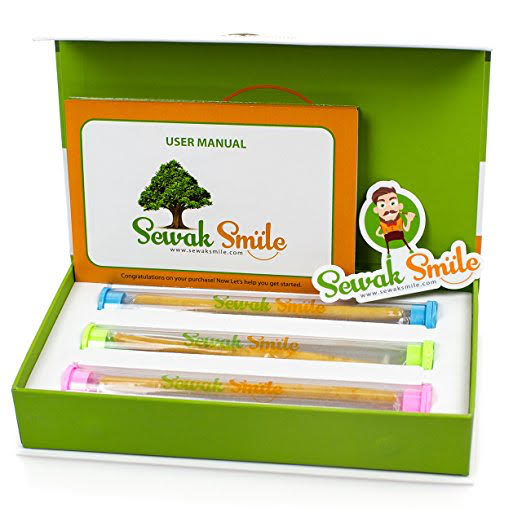 Natural “miswak” tooth-stick from the Peelu tree. Comes three to a box with color coded BPA-free carrying cases.
Natural “miswak” tooth-stick from the Peelu tree. Comes three to a box with color coded BPA-free carrying cases.
Linen Woman | Flax
 Linen clothing for women, sizes petite to plus. I found the FLAX brand of linen clothing in a local shop and fell in love with it, but they didn’t have my size. So I went online and found this site that is the #1 online shop for FLAX clothing. Lots of loose-fitting and tailored styles and colors. Simple. Classic. All are made with linen, some are combined with other natural fiber fabrics. And the prices online are much less.
Linen clothing for women, sizes petite to plus. I found the FLAX brand of linen clothing in a local shop and fell in love with it, but they didn’t have my size. So I went online and found this site that is the #1 online shop for FLAX clothing. Lots of loose-fitting and tailored styles and colors. Simple. Classic. All are made with linen, some are combined with other natural fiber fabrics. And the prices online are much less.
Southern Exposure Seed Exchange
 More than 700 varieties of heirloom and certified organic seeds for vegetables, herbs, flowers, grains and cover crops, many particularly suited for the Southeast USA. Also seeds to grow your own organic cotton. “It takes many farms to grow a collection of seeds like what we offer. We’re proud to work with a network of over 50 small farms in various parts of the US who grow seeds for us.” Try their free Garden Planner software.
More than 700 varieties of heirloom and certified organic seeds for vegetables, herbs, flowers, grains and cover crops, many particularly suited for the Southeast USA. Also seeds to grow your own organic cotton. “It takes many farms to grow a collection of seeds like what we offer. We’re proud to work with a network of over 50 small farms in various parts of the US who grow seeds for us.” Try their free Garden Planner software.
Salad Girl Organic Salad Dressing Company
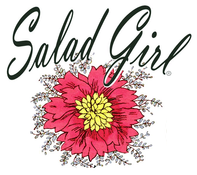 “Salad Girl Organic Salad Dressings come in 7 delicious garden inspired flavor combinations. Our dressings are made with fresh, cold ingredients and never, ever cooked.
“Salad Girl Organic Salad Dressings come in 7 delicious garden inspired flavor combinations. Our dressings are made with fresh, cold ingredients and never, ever cooked.
At Salad Girl, we truly believe in the integrity and the safety of Certified Organic Foods. Salad Girl Organic Salad Dressings are: Gluten Free, Non-GMO, Dairy Free, and Soy Free. Our dressings do not contain Cane Sugar, High Fructose Corn Syrup, or any water, and of course, our dressings are Certified Organic.”
The Buffalo Wool Co.
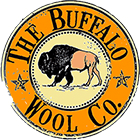 Gloves, socks, scarves and hats made from bison wool. “Have you ever seen a shivering bison? There is a reason for it, the downy undercoat that protects the largest land mammal in the western hemisphere warm and cozy in temperatures down to -40f. Bison fiber is ultra-insulating, wicks moisture away from your skin, and really is soft and amazingly comfortable. our family has been raising bison for almost 30 years, and we are passionate about bringing you the best quality bison products. The last ten years we have been developing a supply chain incorporating small mills, local designers, and large ranches, and along the way, it is our belief that together we can preserve one of America’s great symbols, and help bolster the U.S. economy by focusing on American Made products”
Gloves, socks, scarves and hats made from bison wool. “Have you ever seen a shivering bison? There is a reason for it, the downy undercoat that protects the largest land mammal in the western hemisphere warm and cozy in temperatures down to -40f. Bison fiber is ultra-insulating, wicks moisture away from your skin, and really is soft and amazingly comfortable. our family has been raising bison for almost 30 years, and we are passionate about bringing you the best quality bison products. The last ten years we have been developing a supply chain incorporating small mills, local designers, and large ranches, and along the way, it is our belief that together we can preserve one of America’s great symbols, and help bolster the U.S. economy by focusing on American Made products”
Wooly Moss Roots
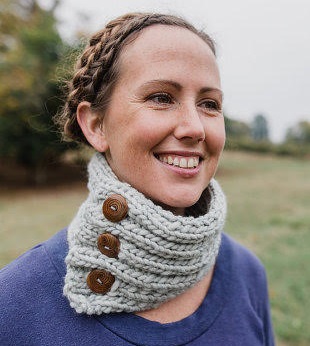 Handknit wool cowl with wooden buttons. They also sell pattern and handmade wooden buttons to make your own.
Handknit wool cowl with wooden buttons. They also sell pattern and handmade wooden buttons to make your own.
Danish Woolen Delight
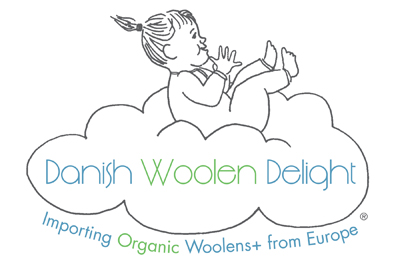 “Delightfully soft & soothing organic clothing and accessories that promote the health & well-being of those who wear them, those who produce them, and, ultimately, to the well-being of our Mother Earth!” This website imports high quality organic woolens from Europe for babies, children, and adults, made from various varieties of wool. Hats and headwear, long underwear, socks—also clothing and outerwear for babies. Plus blankets and mattress pads.
“Delightfully soft & soothing organic clothing and accessories that promote the health & well-being of those who wear them, those who produce them, and, ultimately, to the well-being of our Mother Earth!” This website imports high quality organic woolens from Europe for babies, children, and adults, made from various varieties of wool. Hats and headwear, long underwear, socks—also clothing and outerwear for babies. Plus blankets and mattress pads.
Finding Free Nontoxic Products
Most of what I write about on this website is how to find nontoxic products for purchase. Because most readers are buying products rather than making them.
But I do want to mention that it is also possible to simply find nontoxic products or have them “fall out of the sky.”
Three times in the past month I’ve had nontoxic products just appear. So I just want to acknowledge that there are nontoxic products everywhere and they can be obtained by means other than buying them.
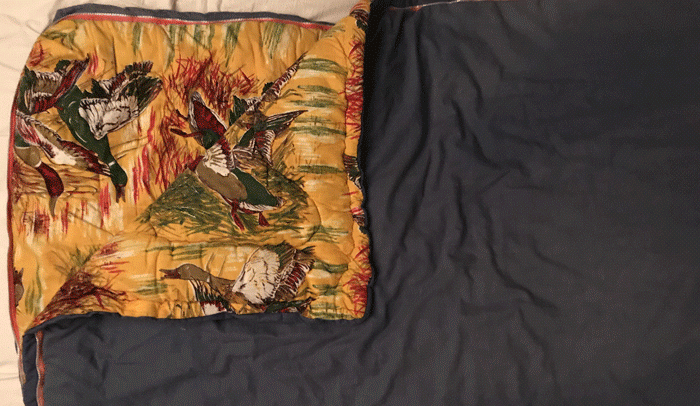 The first one appeared on the night I moved here to California. All my things were packed but we were moving into Larry’s room at his mom’s house, so a lot of his things from the past were there. My wool comforter from Shepherd’s Dream was in the storage locker, so we just unzipped Larry’s old sleeping bag and threw it on the bed. I have to say I love this old sleeping bag so much that I don’t even want to go get my comforter. It’s got a 100% cotton cover on the outside, a 100% cotton flannel lining and 100% cotton batting on the inside (we know this because it’s so old the lining is frayed and the stuffing is coming out). It’s toasty warm, makes me think of Larry as a little boy lying out under the trees and stars in this sleeping bag, and we can just toss it in the washer and dryer and it comes out all clean and warm. We are planning now to repair it and use it for our comforter. We’ll keep our wool comforter too because we sleep with the window open and it can get cold here.
The first one appeared on the night I moved here to California. All my things were packed but we were moving into Larry’s room at his mom’s house, so a lot of his things from the past were there. My wool comforter from Shepherd’s Dream was in the storage locker, so we just unzipped Larry’s old sleeping bag and threw it on the bed. I have to say I love this old sleeping bag so much that I don’t even want to go get my comforter. It’s got a 100% cotton cover on the outside, a 100% cotton flannel lining and 100% cotton batting on the inside (we know this because it’s so old the lining is frayed and the stuffing is coming out). It’s toasty warm, makes me think of Larry as a little boy lying out under the trees and stars in this sleeping bag, and we can just toss it in the washer and dryer and it comes out all clean and warm. We are planning now to repair it and use it for our comforter. We’ll keep our wool comforter too because we sleep with the window open and it can get cold here.
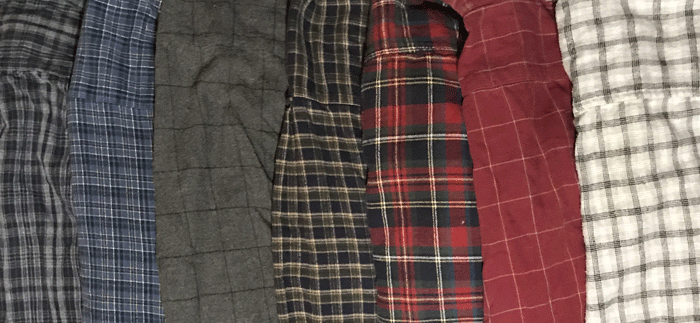 Then I needed some winter clothes. I had been living in Florida for 15 years so my winter clothes consisted of three frayed flannel shirts. I bought two more flannel shirts a few weeks ago on sale at Macy’s. But then yesterday we started cleaning out Larry’s closet and we found seven flannel shirts that were practically new! And they were exactly the right size for me. Larry didn’t want to wear them because he likes to wear fitted shirts and he had lost weight and these were now too big. But I like to wear baggy shirts, so they were perfect for me. Now I have a whole pile of flannel shirts and I didn’t spend a penny.
Then I needed some winter clothes. I had been living in Florida for 15 years so my winter clothes consisted of three frayed flannel shirts. I bought two more flannel shirts a few weeks ago on sale at Macy’s. But then yesterday we started cleaning out Larry’s closet and we found seven flannel shirts that were practically new! And they were exactly the right size for me. Larry didn’t want to wear them because he likes to wear fitted shirts and he had lost weight and these were now too big. But I like to wear baggy shirts, so they were perfect for me. Now I have a whole pile of flannel shirts and I didn’t spend a penny.
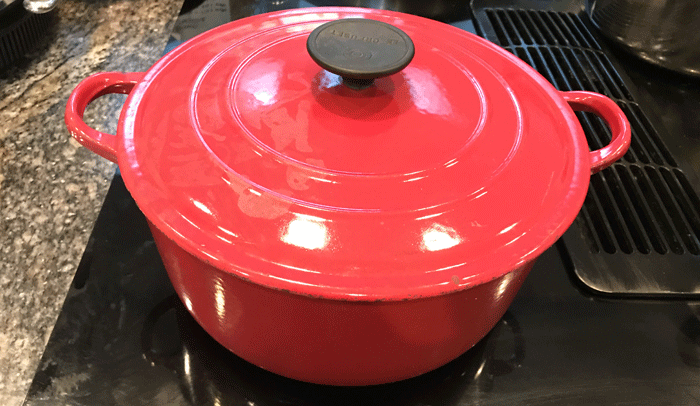 Then, when we went to Goodwill to take in all the clothes from Larry’s closet we had discarded, at the very moment we drove up there was a woman there wanting to donate a red Le Creuset cooking pot. We have one and we love it and we were wanting more. But Goodwill didn’t want it! The woman was about to leave to take it somewhere else and Larry said, “Are you giving that away?” And the woman just handed it to him. This is a $300 pot.
Then, when we went to Goodwill to take in all the clothes from Larry’s closet we had discarded, at the very moment we drove up there was a woman there wanting to donate a red Le Creuset cooking pot. We have one and we love it and we were wanting more. But Goodwill didn’t want it! The woman was about to leave to take it somewhere else and Larry said, “Are you giving that away?” And the woman just handed it to him. This is a $300 pot.
So keep your eyes open. You never know what nontoxic products will cross your path.
How to find a holistic home?

Question from Emily
Hi Debra,
Thank you for all the information you have worked hard to share with others. There’s so much helpful advice on your website and I have barely started to read through it!
I am in transition as far as a place to live and am looking for a holistic home.. and by that, I mean, a home that wasn’t built with toxic building materials, is not near power lines or towers/antennas, and where I don’t have to dread the neighbors’ wifi networks. I would especially like to find such a home in a peaceful country-like setting, near organic farms and perhaps in or near a community of like-minded people (eco communities, or farming communities).
The problem is that I don’t know where to start and how to even search for such a place.
Do you have any suggestions?
Thank you.
Debra’s Answer
I’ve been doing this for three decades, so yes, I have a few suggestions.
First look for the setting. This is extremely important. When I move, I always look for the setting first.
I’m looking for clean outdoor air. So that’s going to be in a rural area, or a city like San Francisco which is right on the Pacific Ocean and has a lot of wind. The Richmond and Sunset districts of San Francisco, Daly City and all the communities along the coast there, for example, are residential communities where there is no industry or commercial farming, so the air is very clean and the houses are old. I know that’s not what you are looking for, it’s just an example.
I’m currently living in a small town in Sonoma County, California that is a few miles inland from the Pacific Ocean but there is nothing but open space between the ocean and our town. So it’s very clean and we have organic farms and you would find like-minded people here. But it’s also extremely expensive and at the moment there is NO housing. I have the extreme good fortune to live here because my family lives here.
Before this I lived in Florida at the top of a hill overlooking the Gulf of Mexico. I had no view, but I had clean air. Even though it was in a suburban neighborhood and not a rural area, the air was clean.
Before that I lived in a forest in a rural area in Marin County, California.
I’ve also lived in other towns in Marin County and in the city of San Francisco.
For you, I would look for a rural area near open space near a body of water.
Then I would find an area not near high tension power lines, towers, antennas, etc. You can’t avoid power lines entirely unless you are off the grid.
Then I would start looking for the house made with nontoxic materials. And that’s a whole separate set of guidelines.
Start looking for the place and when you find it, ask me again about finding the house.
SHED
 I was driving around Healdsburg, California looking for a place to park and the only space I could find after 10 minutes of driving was almost right in front of SHED. This is an amazing place dedicated to sustainable agriculture. They have a food shop, a restaurant, and a space for lectures and events. And an incredible kitchwares department. Really unusual things. All natural materials. I was especially impressed with their collection of all natural bristle bottle brushes (a very difficult thing to find nowadays). This is a kitchen store with items chosen with a sustainability viewpoint, by people who know how and love to cook.
I was driving around Healdsburg, California looking for a place to park and the only space I could find after 10 minutes of driving was almost right in front of SHED. This is an amazing place dedicated to sustainable agriculture. They have a food shop, a restaurant, and a space for lectures and events. And an incredible kitchwares department. Really unusual things. All natural materials. I was especially impressed with their collection of all natural bristle bottle brushes (a very difficult thing to find nowadays). This is a kitchen store with items chosen with a sustainability viewpoint, by people who know how and love to cook.
Faribault Mill
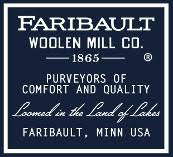 The classic 100% wool blanket in many styles and colors. “Today, in a historic mill nestled along the Cannon River in Minnesota, a nearly 150-year-old story is still being woven. The Faribault Woolen Mill endures as one of the last vertical woolen mills in America. Here, fifth generation craftspeople take raw wool and create blankets, throws, scarves and accessories of remarkable comfort and quality. Irreplaceable century-old machinery stands side by side with modern technology in our “new” mill, which was built in 1892.” Be sure to see The Art of Wool.
The classic 100% wool blanket in many styles and colors. “Today, in a historic mill nestled along the Cannon River in Minnesota, a nearly 150-year-old story is still being woven. The Faribault Woolen Mill endures as one of the last vertical woolen mills in America. Here, fifth generation craftspeople take raw wool and create blankets, throws, scarves and accessories of remarkable comfort and quality. Irreplaceable century-old machinery stands side by side with modern technology in our “new” mill, which was built in 1892.” Be sure to see The Art of Wool.
Living Tree Community Foods
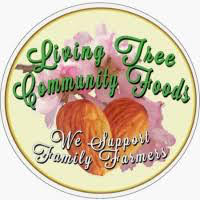 A reader recommended this website to me for their high quality of food products. While you will find the usual oils and vinegars, chocolates, nuts and seeds and their butters, grains and pastas, honey and sweeteners, what is unusual about these foods is they are all chosen and processed with the guideline of supporting family farmers and keeping the food alive. You’ll find such foods as California-grown heritage olive oil, unusual varieties of honey alive and unfiltered, and polenta made from Organic Dakota Black Heirloom Corn.
A reader recommended this website to me for their high quality of food products. While you will find the usual oils and vinegars, chocolates, nuts and seeds and their butters, grains and pastas, honey and sweeteners, what is unusual about these foods is they are all chosen and processed with the guideline of supporting family farmers and keeping the food alive. You’ll find such foods as California-grown heritage olive oil, unusual varieties of honey alive and unfiltered, and polenta made from Organic Dakota Black Heirloom Corn.
Shields Dates
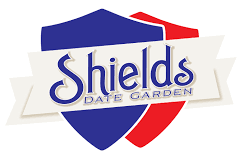 When Larry and I were driving across the USA from Florida to California, we drove right through the famous date growing region of Coachella Valley, so we had to stop for dates. Shields has 10 varieties of dates and if you stop at their date garden you can sample every one of them. They sell natural and organic dates and date products, including their own “date crystals” date sugar.
When Larry and I were driving across the USA from Florida to California, we drove right through the famous date growing region of Coachella Valley, so we had to stop for dates. Shields has 10 varieties of dates and if you stop at their date garden you can sample every one of them. They sell natural and organic dates and date products, including their own “date crystals” date sugar.
Wood Cabinets for Less
 I found this website while looking for quick delivery for a client on solid wood cabinets. I was surprised and very pleased at the very low price. Like a whole kitchen of cabinets for $3000. At the top end you can get solid wood cabinets with solid doors and sides, but they cost even less if you get cabinet grade plywood for the sides. You can even order them unfinished. Choose your style and wood and finish. Staff is very knowledgeable and will help you find what you are looking for from their selection. Look here first for kitchen and bath cabinets.
I found this website while looking for quick delivery for a client on solid wood cabinets. I was surprised and very pleased at the very low price. Like a whole kitchen of cabinets for $3000. At the top end you can get solid wood cabinets with solid doors and sides, but they cost even less if you get cabinet grade plywood for the sides. You can even order them unfinished. Choose your style and wood and finish. Staff is very knowledgeable and will help you find what you are looking for from their selection. Look here first for kitchen and bath cabinets.
Mary’s Chickens | Mary’s Turkeys | Mary’s Ducks
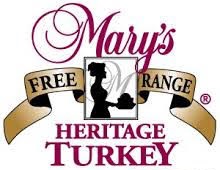 I recently moved to Sebastopol, California, where there is a cute restaurant called HipChicks Farms, where they sell organic chicken fingers, chicken pot pies, and other chicken comfort foods. I asked them where they sourced their chicken and they said “Mary’s” with due respect in their tone of voice. I have to say, it was delicious chicken. Go to Mary’s website and you’ll find pasture raised chicken, heirloom chicken, organic chicken, no styrofoam packaging and special programs to protect the welfare of the animals. Same for turkeys, same for ducks. Family owned and operated since 1954.
I recently moved to Sebastopol, California, where there is a cute restaurant called HipChicks Farms, where they sell organic chicken fingers, chicken pot pies, and other chicken comfort foods. I asked them where they sourced their chicken and they said “Mary’s” with due respect in their tone of voice. I have to say, it was delicious chicken. Go to Mary’s website and you’ll find pasture raised chicken, heirloom chicken, organic chicken, no styrofoam packaging and special programs to protect the welfare of the animals. Same for turkeys, same for ducks. Family owned and operated since 1954.
Woman Within
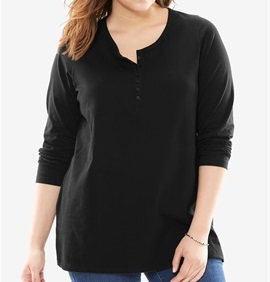 Basic cotton clothing for plus size women, including soft cotton tees in all sleeve lengths and many colors, cotton denim pants and skirts, cotton corduroy pants and skirts. Many colors in basic designs. Clothing comes with a slight odor from sizing that washes out. Garments are cut loose and comfortable. Though this clothing is not organic, it is affordable and reliable. But choose carefully because natural fiber items are mixed in with many synthetics. Search the website for “cotton” to easily find cotton clothing.
Basic cotton clothing for plus size women, including soft cotton tees in all sleeve lengths and many colors, cotton denim pants and skirts, cotton corduroy pants and skirts. Many colors in basic designs. Clothing comes with a slight odor from sizing that washes out. Garments are cut loose and comfortable. Though this clothing is not organic, it is affordable and reliable. But choose carefully because natural fiber items are mixed in with many synthetics. Search the website for “cotton” to easily find cotton clothing.
Amana Woolen Mill
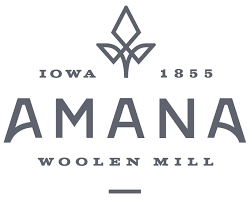 Though the name says “woolen mill,” today Amana makes and sells high quality 100% cotton products for the home: blankets & throws, table and kitchen linens. Plus heavy duty totes made from reclaimed cotton yarn and fabric with full grain leather handles. “We are a community of families, farmers and artisans that are nearly as old as Iowa itself. Quality craftsmanship isn’t a coincidence, it’s second nature. Our textiles are woven in the same building that was first used more than a century and a half ago…The exacting methods used today were brought from the old world by Amana’s first settlers, while the pioneering spirit of those first families continues to drive new innovations.”
Though the name says “woolen mill,” today Amana makes and sells high quality 100% cotton products for the home: blankets & throws, table and kitchen linens. Plus heavy duty totes made from reclaimed cotton yarn and fabric with full grain leather handles. “We are a community of families, farmers and artisans that are nearly as old as Iowa itself. Quality craftsmanship isn’t a coincidence, it’s second nature. Our textiles are woven in the same building that was first used more than a century and a half ago…The exacting methods used today were brought from the old world by Amana’s first settlers, while the pioneering spirit of those first families continues to drive new innovations.”
Mountain Meadow Wool
 “100% American made and Wyoming grown, high-quality wool products and yarn, created with eco-friendly operations and fair prices for ranchers.” Purchase yarn and fiber for your own creations, blankets woven at the Faribault mill, and wool hoodies, hats, gloves, and mittens. All are variegated natural colors of the sheep wool.
“100% American made and Wyoming grown, high-quality wool products and yarn, created with eco-friendly operations and fair prices for ranchers.” Purchase yarn and fiber for your own creations, blankets woven at the Faribault mill, and wool hoodies, hats, gloves, and mittens. All are variegated natural colors of the sheep wool.
D’Artegnan
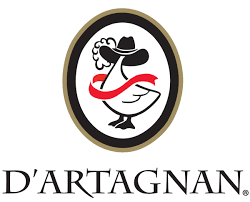 Many types of meat, poultry and game, all natural or organic. Also heritage breeds and wild.You’ll find everything here from chicken to wild boar. Plus charcuterie and sausage. “We believe food raised right tastes better. Before such buzz words existed, and for more than 30 years, D’Artagnan has been committed to free-range, natural production and sustainable, humane farming practices.”
Many types of meat, poultry and game, all natural or organic. Also heritage breeds and wild.You’ll find everything here from chicken to wild boar. Plus charcuterie and sausage. “We believe food raised right tastes better. Before such buzz words existed, and for more than 30 years, D’Artagnan has been committed to free-range, natural production and sustainable, humane farming practices.”
Want a Turkey Worth Gobbling? Here’s What to Look for on the Label
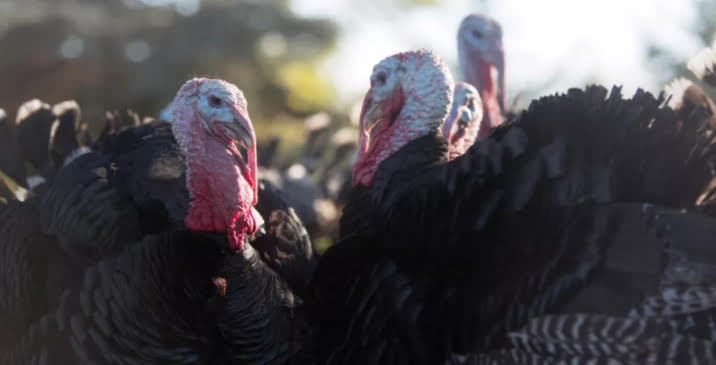
A couple of nights ago around the dinner table I asked my new family what everyone wanted for Thanksgiving dinner. Turkey, of course, homemade cranberry sauce, and gluten-free cornbread and rice stuffing with wild mushrooms topped the list. Since, as the best cook in the house, I’ll be doing most of the cooking, and we are living in Sonoma County, California—where we actually grow and raise some of the best food on Earth—I started wondering if we could get some kind of special turkey.
So I put together this list of what to look for on the label to help me find the perfect turkey for this year’s Thanksgiving dinner.
Here’s What You Get When You Buy a Cheap Turkey
The first thing to know about cheap turkeys is they are a hybrid breed that have been created to produce a lot of breast meat “Broad-breasted White” they are called. These turkeys are now so large that all are artificially inseminated because they simply can’t do it themselves.
They are also so big they cannot walk.
They are also bred to grow faster than the natural turkey and are give growth hormones.
These turkeys are raised in factory farms in overcrowded conditions.
Their feed is made from GMO corn and soy that has been sprayed with pesticides.
Excessive quantities of antibiotics are given to birds, and other chemicals may be used in processing.
PENN STATE EXTENSION: Modern Turkey Industry.
All Natural Turkeys
The word “natural” on the label of a turkey refers to how a turkey is processed, not raised.
A product can be claimed natural if it is minimally processed and contains no artificial ingredients, including chemical preservatives.
The United States Department of Agriculture (USDA) has a definition of “natural” that pertains to turkeys (and all meats)
According to the USDA, “all natural” meats and poultry can only be called such when:
- No animal by-products were fed to the animals
- No growth promotants were administered to the animals
- No antibiotics are used (except for ionophores used as coccidiostats for parasite control)
The USDA only approves phrases including “raised without antibiotics,” “no added antibiotics” or “no antibiotics ever,” which indicate the animal did not receive antibiotics in their feed, water or by injection. The phrase “antibiotic-free” is not approved for meat and poultry labels.
Natural turkeys are hybrid Broad-breasted Whites and the meat would still have pesticide residues from their feed, Most are fed a “vegetarian” feed made up of GMO corn and GMO soy. But “all natural” is a step in the right direction.
Your local natural food store will certainly carry an all-natural turkey and you might find them in some higher-end markets as well. They are slightly more expensive than the cheap turkeys and a good choice if you can’t afford organic.
Organic Turkeys
Once again, organic turkeys are hybrid Broad-breasted Whites. The difference with organic is they are raised with certified USDA organic practices, so the meat is free from hormones and other growth regulators, antibiotics, GMOs and pesticides. They are usually farm raised and often drink well water.
Most natural food stores sell organic turkeys. They are twice the price of natural turkeys.
Heritage Turkeys
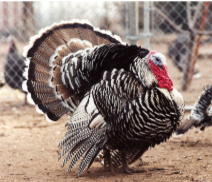 A heritage turkey is one of eight specific breeds certified by the American Poultry Association. These breeds were raised in the USA prior to the 1950s, when the poultry industry began to cross breeding the commodity Broad-breasted White turkeys that are commonly sold today.
A heritage turkey is one of eight specific breeds certified by the American Poultry Association. These breeds were raised in the USA prior to the 1950s, when the poultry industry began to cross breeding the commodity Broad-breasted White turkeys that are commonly sold today.
“Heritage” does not mean organic, all natural, or free range, though a true heritage bird should be free of artificial ingredients, raised on a farm and eat feed free from pesticides.
Heritage birds are different from Broad-breasted Whites in a number of ways. They:
- are smaller
- are prettier, often with elegant dark or colored feathers
- mature more slowly (24 to 30 weeks, versus about 12 to 18 weeks for a commodity turkey)
- can live longer—up to 15 years, instead of a year and a half.
- can have sex normally and reproduce
- have big, strong legs that can walk on their own
- are raised outdoors and freely roam on pasture
- eat the varied diet nature intended them to eat,
I’ve read that heritage birds are juicy and succulent and taste the way a turkey is supposed to taste. The meat is darker and gamier-tasting and tougher, so you won’t have the Broad-breasted White experience. And it can be harder to cook (here are some tips) . But you’ll actually be eating turkey, the same turkey everyone ate before 1950.
Heritage birds are more expensive to raise, and so are more expensive per pound to buy.
As of this writing there is no official certification program for the identification and labeling of heritage birds the way there is for organics. Although turkey producers are required to submit documentation to the USDA showing that the turkeys they’re going to call heritage are one of the officially recognized heritage breeds, this process is not as strict and regulated as needed to be dependably reliable.
Here’s where you really need to know your grower and ask questions and not rely on labels.
If you are willing to spend more money, do a little advance planning, and look beyond even your local natural food store, consider a heritage turkey. I’m considering this now because for once in my life I want to experiencing eating a REAL turkey.
Slow Food USA
American Livestock Breeds Conservancy
Livestock Conservancy
Wild Turkeys
When I used to live in a small village in a rural part of Northern California, we had wild turkeys and some of the locals would hunt and eat them. I never did but I’m very curious to know what they taste like.
You can purchase wild turkeys online that have been farm-raised on natural forage with supplemental feed.
Wild turkeys are small birds with a slightly gamey flavor
Now this would be more like the turkeys served at the first Thanksgiving.
The Turkey I Chose This Year
After all this research, I decided to pre-order a heritage turkey, grown by local Sonoma County 4H club members and sold through the Slow Food Russian River Heritage Turkey Project.
You can only get one if you come pick one up in Sonoma County, California. But look around your local community. There might be a similar program.
At $9.00 a pound, it will be the most expensive turkey I’ve ever purchased, but it will be well worth it. In addition to the enjoyment of flavor and satisfaction of curiosity, I will also be contributing to the education of future farmers and the preservation of heritage breeds, and I will experience food closer to it’s original state in nature. I think that’s an excellent investment.
I’m actually going to see if I can participate in the whole experience of visiting my turkey live and being at the slaughter instead of just picking it up in a bag.
I’ll let you know how this goes.
A Toxic Free Aesthetic
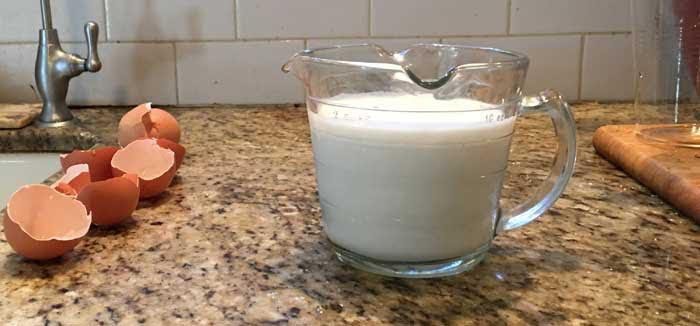
A few weeks ago I received this email from a reader:
“I’m wondering where you got your glass measuring cup shown here: https://www.debralynndadd.com/toxic-free-kitchen/dish/beverage/fresh-coconut-milk-and-cream/
It looks like it is free of painted-on markings and has multiple pour spouts. Just wondering what brand it is.”
I replied that I purchased it at Crate and Barrel a few years ago, but they don’t sell it any more.
But this question got me thinking about design and style and aesthetics, and how one might define a “toxic free aesthetic.”
Aesthetics in general have to do with the beauty of something.
An aesthetic is a set of principles underlying and guiding the work of a particular artist or artistic movement. So one might say “a Victorian aesthetic.”
But I think this term could just as well be used to refer to how design and it’s beauty or lack thereof results from a particular set of principles.
For example, the “modern” aesthetic is rooted in industrial manufacturing. So instead of items having a style that emerges from things made by hand from natural materials, for example, forms are simple and made from materials that can flow cheaply and easily through an industrial manufacturing process.
Which led me to wonder: If we started with being toxic free as a guiding principle, what might the aesthetic look like?
Measuring Cup
This measuring cup in the photo above I think is a good example of toxic free aesthetic.
It’s simple and direct, form following function.
It uses a nontoxic material.
And it incorporates the design into the material of the product, rather than use a different material.
In the case of the measuring cup, most measuring cups use paint to mark lines and numbers. While the paint is nontoxic by the time it reaches the user, the paint itself is toxic and likely would produce toxic waste during manufacture, use, and disposal.
So part of the aesthetic would be to choose materials throughout that create zero toxic exposure or waste at all stages of the life cycle.
 Clock
Clock
With the idea of toxic free aesthetic in mind, when I walked into a reception area and saw this cute little clock sitting on the counter, I immediately thought, “Oh this is toxic free aesthetic!”
Even though I hadn’t yet formulated guidelines, I could recognized it when I see it.
In real life, this appears to be an unfinished block of wood (no noticeable finish or odor) with a luminous LED display (the light aspect of it doesn’t really show in the photo).
I don’t know how they get the light into the wood, but the materials are simply wood and light.
I’m going to order one of these for myself. I need a clock I can see in the dark for my bedroom and this is perfect.
GEARONIC Wooden Alarm Clock. Tells time, date, temp and also has an alarm clock function via LED Light. Tells time, date, temperature and also has an alarm clock function. Three AAA batteries, “No buttons or plastic parts.”
NOTE: The one I saw was battery-powered. The description says it is powered with USB cable. I think you can use either.
Face
Two things inspired me to write this section.
First, I’ve been going to farmer’s markets every weekend for the past month and one of the things I’ve noticed is the beautiful faces of these farm women who are growing food and out in the fields. Just their beautiful bare faces without make-up.
And then I came across a photo ID card in my wallet with a picture that was taken on the spur of the moment. I had no makeup on because I don’t wear makeup everyday. I only wear makeup when I need to have a “professional” look.
And I looked at that bare-face ID card next to my driver’s license photo with makeup and I really preferred my bare-face photo!
 |
 |
| Debra with Make-Up | Debra without Make-Up |
I was surprised because the idea of “beauty” that is promoted in the consumer world is full makeup and hairstyle, but my aesthetic is becoming wanting to see the beauty of the actual face of the person, rather than have it obscured with makeup.
So I think the toxic free aesthetic is no makeup or minimal makeup rather than looking “painted,”
Creating a Toxic Free Aesthetic
I think this is an ongoing discussion. I would love to hear your thoughts.
And I would love to develop a toxic free aesthetic that designers could use to create products that we would enjoy using.
Feel free to post other products you think have a toxic free design aesthetic in the comments. With images.
Natural Fiber Winter Clothes for Plus Size Woman
When I was much younger and didn’t know anything about toxics, I was quite interested in fashion. I loved going shopping and trying on pretty clothes in nice stores. In those days there were nice dressing rooms and saleswomen who would get to know you and what you like and they would call you when something went on sale that they thought was right for you.
Nowadays shopping for clothes is quite different.
Back in 1978, when I first started writing about natural alternatives to toxic products, practically all clothing was polyester. Just about the only natural fiber clothing was jeans and t-shirts and flannel shirts.
And then as natural fibers became more popular, I could go into stores like Macy’s and Nordstrom’s and there would be racks of pretty dresses and shirts and jackets and sweaters made from natural fibers. I even still have linen shirts that I bought at TJMaxx.
But I’m sad to report that it seems like the tide has turned again. Two weeks ago I went shopping here in California and virtually all women’s clothing is now made of synthetic materials. I couldn’t even find a pair of jeans (for women) that didn’t have spandex in them and there were no conduroy pants at all.
Having just spent 15 winters in Florida, I had no winter clothing at all.
I didn’t need anything fancy. I’ve been dressing “plain” for years, inspired by the Amish and their beautiful quilts made from blocks of solid-color fabrics—scraps from the making of their simple solid-color clothing. In Florida this translated into solid color cotton capri pants and solid-color cotton tank tops. I had two drawers: one with tops and one with pants. Every morning I would just open the drawer and take out one of each and I was done dressing. I also had some big linen shirts in solid colors.
What I was looking for, for my California version of dressing plain, was simple long-sleeve cotton t-shirts and solid-color corduroy pants. So I went to a website that I have occasionally purchased from in the past called Woman Within, and I found exactly what a wanted.
Here’s what I purchased:
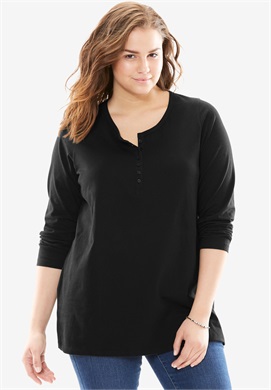 |
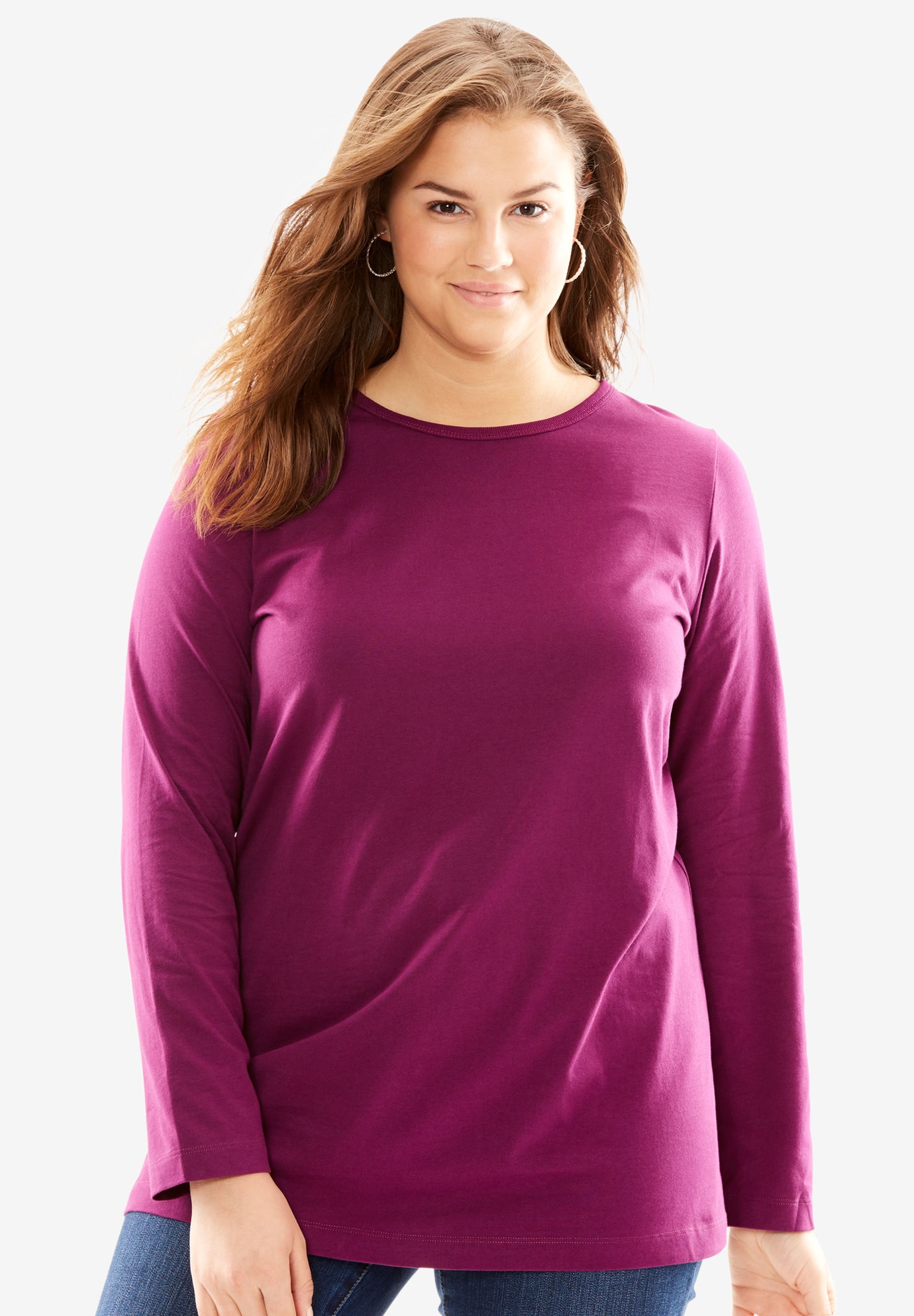 |
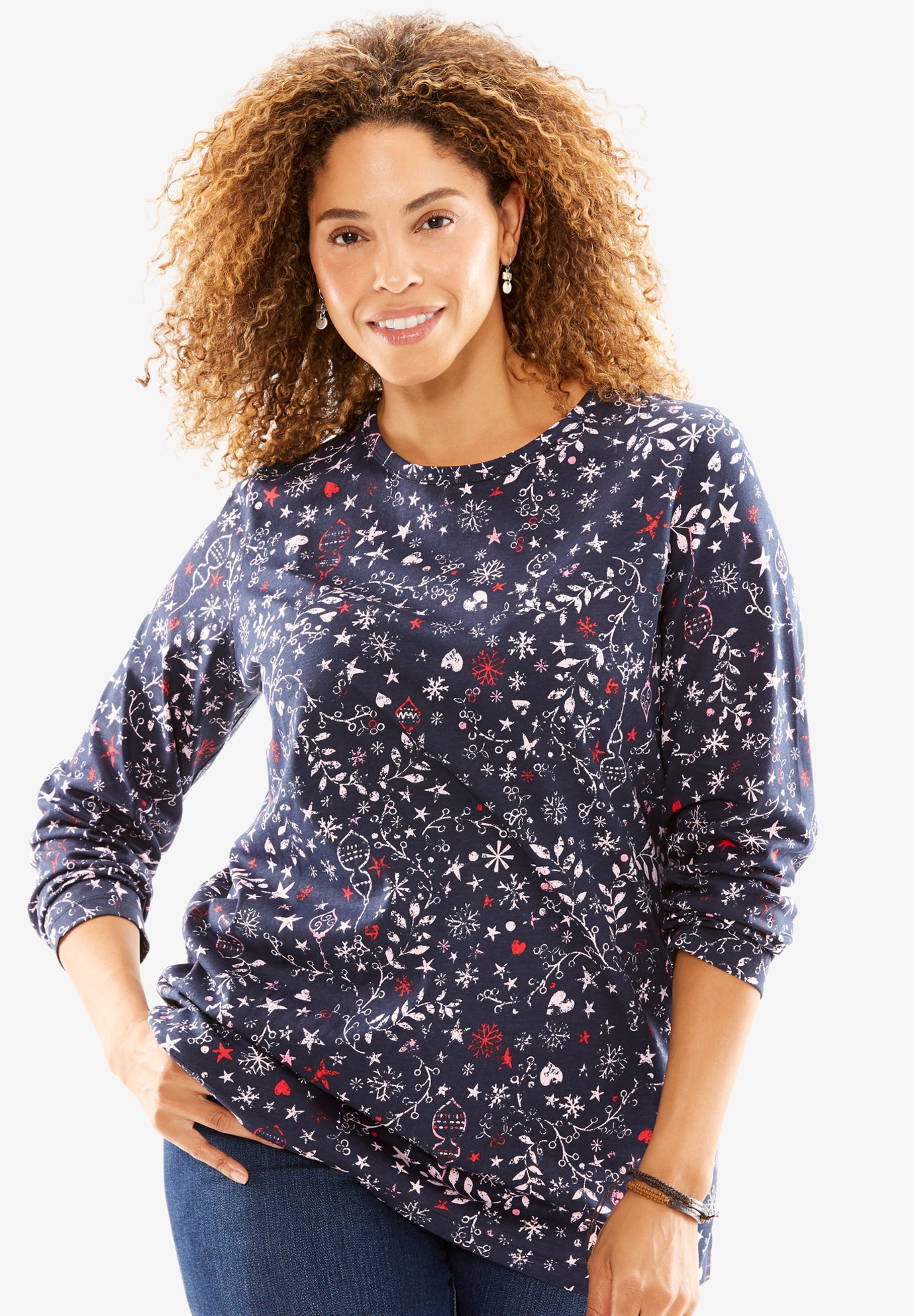 |
| T-shirt, Perfect, with long sleeves, Henley neck | Crew Neck Perfect T-Shirt | T-shirt, Perfect, with long sleeves, crewneck |
| soft, washable combed cotton knit, imported | washable soft pure cotton, imported | soft, washable combed cotton knit, imported |
| NOTE: The description says “long sleeve” but they were I little shortchanged for my arms. However, I love this shirt so much it doesn’t matter.. | NOTE: This neckline has a feminine cut with more space than a standard crew neck. | NOTE: This color is called “Navy Holiday”. Haven’t received these yet to comment. |
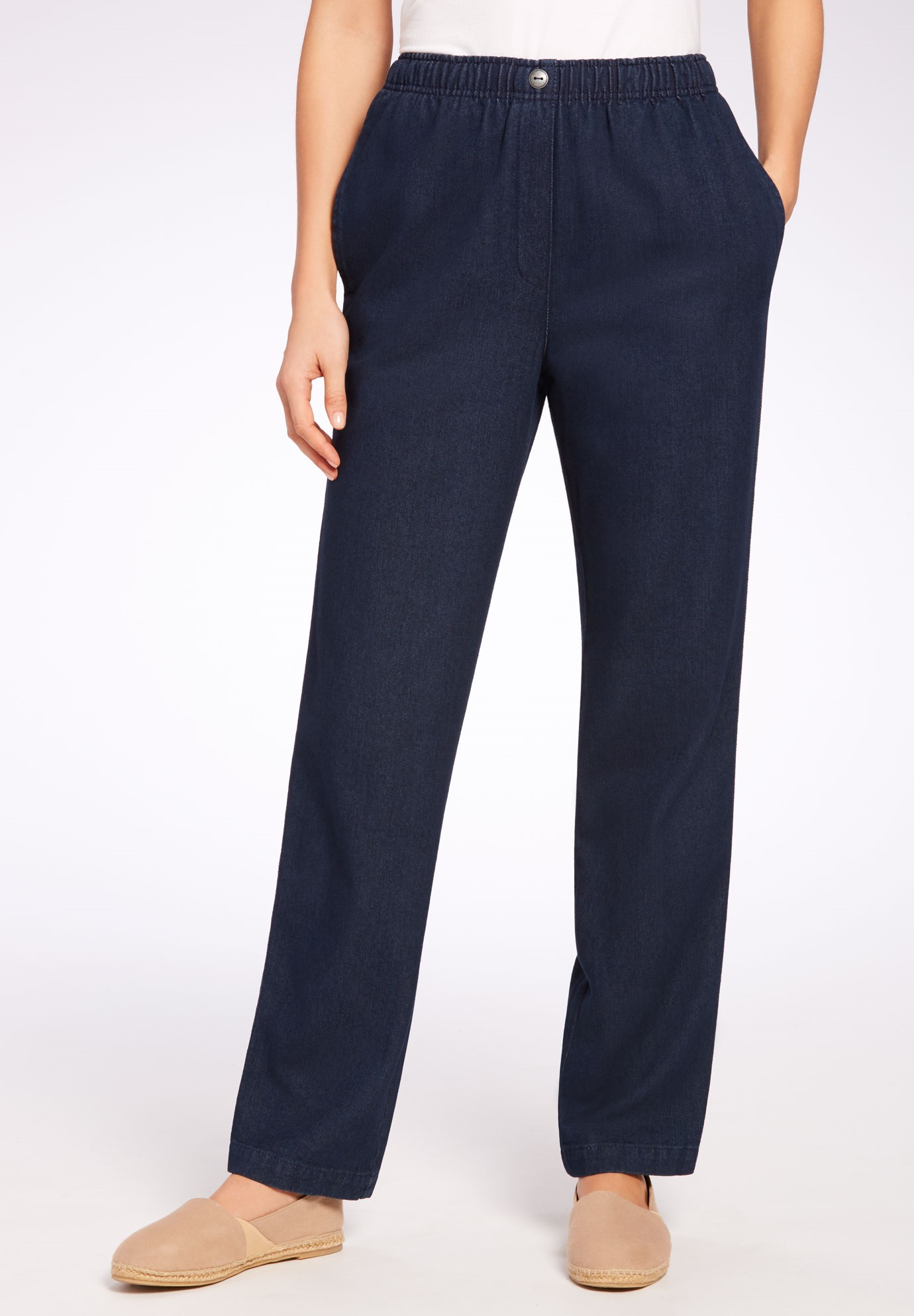 |
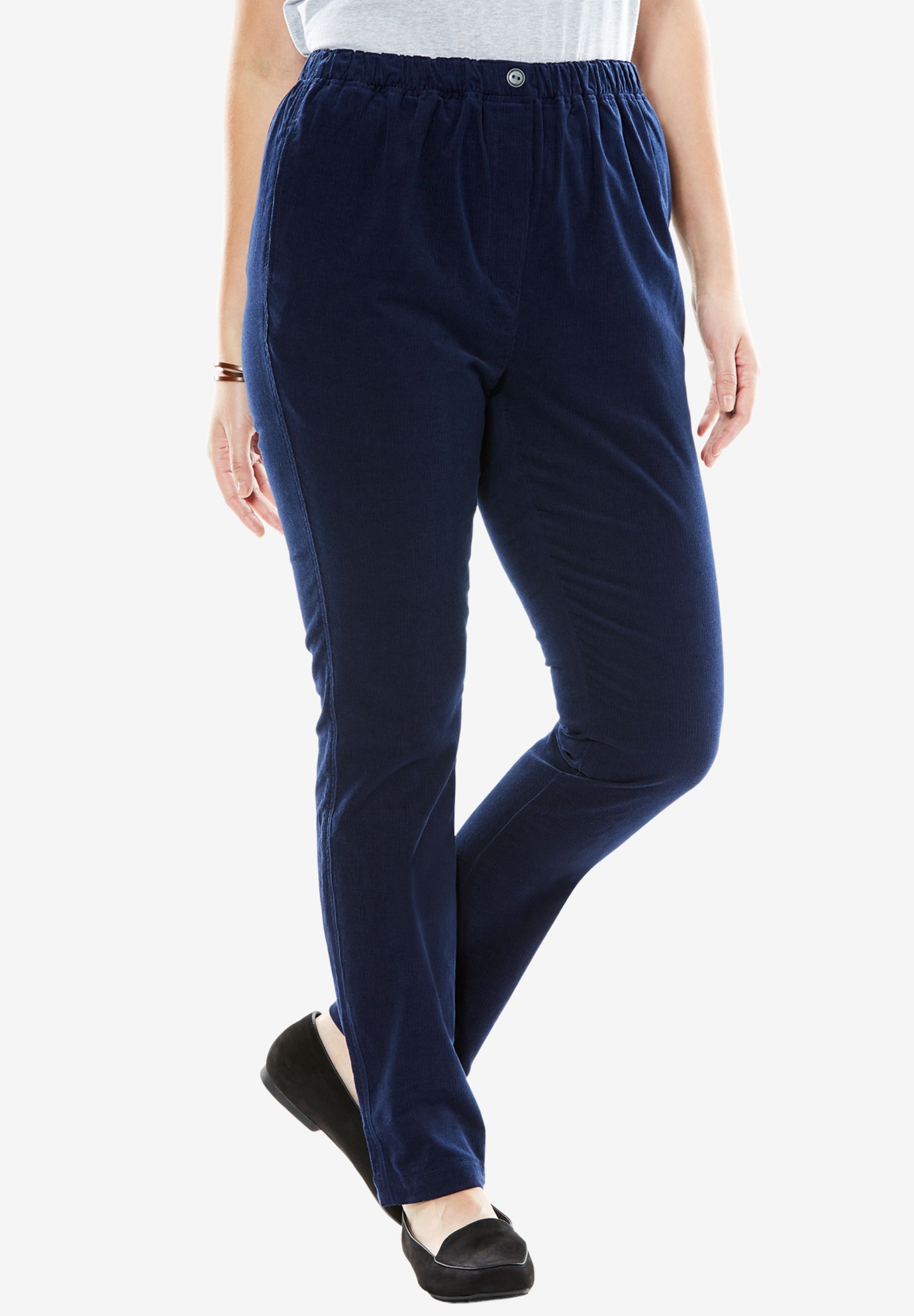 |
|
| Pants in corduroy with comfortable waist | 100% Cotton Comfort Pull On Jean | |
| soft woven washable cotton corduroy | washable woven cotton | |
| NOTE: These are actually cut big. Next time I’ll order one size smaller. | NOTE: Haven’t received these yet to comment. |
Badger Certified Organic Body Care
 USDA certified organic body care products, certified to food grade standards. Badger has been around since 1995. You may know their first product “Badger Balm,” which was created by a carptenter to heal his cracked hands. You’ve seen this brand on the shelves of many stores. But did you know that it’s a small, family-owned, family-run company in New Hampshire? “We blend the finest organic plant extracts, exotic oils, beeswax, and minerals to make the safest, most effective products possible to soothe, heal, protect and otherwise treat your body. We work hard, have fun, and incorporate honesty, respect, and integrity into everything we do…We only use ingredients that fit our rigorous natural standards for healthy agriculture, minimal processing, sustainable supply chain, and health giving properties. For example, the organic extra virgin olive oil we use in most of our products comes from a single family estate in southern Spain and it is the best olive oil we’ve ever tasted. And, the organic rose essential oil we use in all of our rose products is steam distilled in Bulgaria from rose petals picked the very same day. It takes 5 tons of rose petals to make one liter of this precious essential oil. We combine years of tradition and research with beautiful artwork and lots of love to create products naturally rich in powerful antioxidants and vitamins for healthier people and a healthier planet.” Links to Ingredients and Growers and Philosophy of Formulation. “We believe that true organic agriculture goes beyond the elimination of synthetic chemicals to a harmonization and sustainability of farmers, producers, consumers, and the land that we all share. Our goal at Badger is to take the organic certification as a first step on a road toward cultivating a higher standard for ingredients from the farm to the factory. We are working towards sourcing ingredients that are grown biodynamically, traded fairly, processed with thoughtful intention and to create products for all those in need of organic healing body care that works.”
USDA certified organic body care products, certified to food grade standards. Badger has been around since 1995. You may know their first product “Badger Balm,” which was created by a carptenter to heal his cracked hands. You’ve seen this brand on the shelves of many stores. But did you know that it’s a small, family-owned, family-run company in New Hampshire? “We blend the finest organic plant extracts, exotic oils, beeswax, and minerals to make the safest, most effective products possible to soothe, heal, protect and otherwise treat your body. We work hard, have fun, and incorporate honesty, respect, and integrity into everything we do…We only use ingredients that fit our rigorous natural standards for healthy agriculture, minimal processing, sustainable supply chain, and health giving properties. For example, the organic extra virgin olive oil we use in most of our products comes from a single family estate in southern Spain and it is the best olive oil we’ve ever tasted. And, the organic rose essential oil we use in all of our rose products is steam distilled in Bulgaria from rose petals picked the very same day. It takes 5 tons of rose petals to make one liter of this precious essential oil. We combine years of tradition and research with beautiful artwork and lots of love to create products naturally rich in powerful antioxidants and vitamins for healthier people and a healthier planet.” Links to Ingredients and Growers and Philosophy of Formulation. “We believe that true organic agriculture goes beyond the elimination of synthetic chemicals to a harmonization and sustainability of farmers, producers, consumers, and the land that we all share. Our goal at Badger is to take the organic certification as a first step on a road toward cultivating a higher standard for ingredients from the farm to the factory. We are working towards sourcing ingredients that are grown biodynamically, traded fairly, processed with thoughtful intention and to create products for all those in need of organic healing body care that works.”
Bill Gates and Steve Jobs raised their kids tech free

Interviews with Bill Gates, Steve Jobs, and other tech elites consistently reveal that Silicon Valley parents are strict about technology use.
I think it’s important in today’s world for kids to become familiar with technology and know how to use it, but not have their entire world be on-screen.
I have an iMac and a MacBook and an ipad and an iphone and I know that seems like a lot, but I use them to do my work and keep in communication with my readers and other businesses. But they are not my whole life. I also have direct conversations with people face-to-face, spend time in nature, and have a reality of the real world that is not filtered through someone else’s online presentation. I used to have a friend who would say she wanted me to come visit so we could eat chocolate cake together, and you can’t eat chocolate cake via email.
I remember life before technology and I wonder if today’s generation even know what that’s like.
We are human beings whose lives are supported by our relationships with other humans and the natural environment. Technology is second in importance to the fundamentals of life in my world,
INDEPENDENT: Bill Gates and Steve Jobs raised their kids tech free and it should’ve been red flag
Alderspring Ranch Grass-Fed Beef
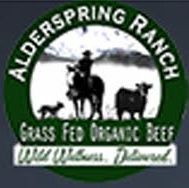 “100% grass fed and finished, certified organic beef grown on a family ranch in the wild and remote mountains of Idaho for over 23 years…We’ve been raising grassfed beef for over 20 years, and certified all of our operation as organic nearly a decade ago. We are one of the few organic grassfed beef producers in the country, carrying the dual labeling of “grassfed” as well as “certified organic.” We’ve taken our beef past the labels into an area we call “wild” that reflects the pristine wild country we grow our beef in, and growing practices that mimic nature as much as possible. We have a passion for caring for our land and livestock. We are also passionate about growing good food.”
“100% grass fed and finished, certified organic beef grown on a family ranch in the wild and remote mountains of Idaho for over 23 years…We’ve been raising grassfed beef for over 20 years, and certified all of our operation as organic nearly a decade ago. We are one of the few organic grassfed beef producers in the country, carrying the dual labeling of “grassfed” as well as “certified organic.” We’ve taken our beef past the labels into an area we call “wild” that reflects the pristine wild country we grow our beef in, and growing practices that mimic nature as much as possible. We have a passion for caring for our land and livestock. We are also passionate about growing good food.”
Costco Tackles Toxics With A New Policy
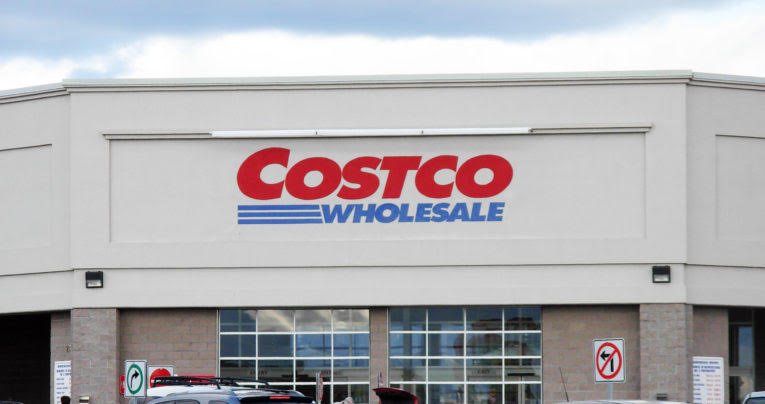
Costco has announced a new policy that will reduce harmful chemicals in the products they sell.
As a Costco member UI’ve been seeing a trend in this direction at their stores. I’m happy to see they will be continuing in this direction.
SAFER CHEMICALS, HEALTHY FAMILIES: Costco develops new safer chemicals policy
Phone Soap
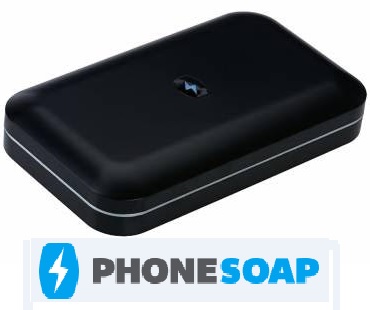 ABC News reported, “When people in New York City were asked which they thought was dirtier — the sole of your shoe, a toilet seat or a cell phone — the answer was overwhelmingly the toilet seats. But they were wrong — your cell phone is more filthy.” Phone Soap uses ultraviolet light to safely sanitize your cellphone. Also accessories such as a microcord so you can charge your phone while it is being sanitized and and an antimicrobial phone case that protects your phone from germs.
ABC News reported, “When people in New York City were asked which they thought was dirtier — the sole of your shoe, a toilet seat or a cell phone — the answer was overwhelmingly the toilet seats. But they were wrong — your cell phone is more filthy.” Phone Soap uses ultraviolet light to safely sanitize your cellphone. Also accessories such as a microcord so you can charge your phone while it is being sanitized and and an antimicrobial phone case that protects your phone from germs.
What is “Tooth Remineralization?”
Question from Susan
Hi Debra,
I’ve been seeing some tooth products say that they “remineralize” teeth. What does that mean and how would I know if such a product is working and my teeth are actually being remineralized?
Debra’s Answer
That’s a very good question. I was wondering what that was too, so I asked Sarah Haydock from Rowan Tree Botanicals to answer that question. She makes and sells products that remineralize teeth.
Here’s what Sarah told me:
Tooth remineralization is a fascinating process, to me at least! Many people are surprised to find out that, contrary to conventional knowledge, teeth are actually living tissue. They have the ability to remain healthy, heal, and regrow under the right circumstances. Let me explain a little bit about teeth, how they are alive, the processes by which they can become unhealthy, and how remineralization can heal them:
The outer two layers of our teeth are composed of a protein that holds large amounts of minerals. The outer-most layer – enamel – is 96 percent mineral. The layer underneath enamel – dentin – is 45 percent mineral.
Acids in the mouth bind to minerals in the teeth. This is a natural process, and so long as the minerals are replaced, no harm is done. However, if more minerals are bound than are replaced, tooth decay is the result.
Acid in the mouth can be the result of various factors. The two most common factors are excessive consumption of acidic foods and beverages and acid-forming bacteria in the mouth. Sodas are among the most acidic things humans consume, and their consumption is directly linked to tooth decay.
Some bacteria in the mouth form acids. Many of those bacteria form biofilms known as plaque on teeth. The biofilms serve as protective housing for the bacteria. Because the plaque is on the teeth, the acids produced by the bacteria directly erode the teeth.
One way to remineralize is simply to remove the factors that promote decay. This means removing acid-forming bacteria. Reducing soda consumption (as well as excessive consumption of vinegar, lemon juice, or other overly acidic foods,) is helpful. So is rinsing the mouth or neutralizing acids after consuming them. I’ll explain more about how to neutralize acids in just a moment.
Minerals can be replaced in two ways. One is through nutrition. The other is through the saliva. The dominant way that the body replaces minerals in teeth is through saliva. So again, acidic saliva reduces mineralization of teeth.
Rowan Tree Botanicals oral care products address remineralization in several ways.
First, some of the ingredients in the products are naturally alkaline. For example, the clay we use is very alkaline, and when it comes into contact with acids in the mouth, it neutralizes them. Thus, brushing after eating anything acidic neutralizes the acids that would otherwise promote tooth decay.
Next, some of the ingredients in the products naturally help to remove plaque biofilms. These ingredients break apart biofilms, which means bacteria in the mouth cannot hide in their protective houses.
Additionally, many of the ingredients in the products are naturally antibacterial, specifically effective against the bacteria that are known to promote tooth decay. The ingredients have different types of antibacterial actions, and when combined, they have a synergistic effect.
Also, some of the ingredients are proven to counter specific types of immune responses that some bacteria cause. For example, some bacteria cause the body to secrete enzymes that break down protein structures in the teeth. Some of the herbs in our formulas block those enzymes so that the structures of teeth remain strong.
Finally, many of the ingredients in our products have traditionally been used to promote healthy teeth and bones. Science doesn’t understand all of the reasons they work, but they have been used for centuries and have a longstanding tradition of promoting good teeth. They have been used successfully and safely for thousands of years.
Tooth remineralization is a natural, lifelong process. Ideally, it is happening all the time. Our products are designed to support your body’s healthy processes naturally.
So, how would you know that your teeth are being remineralized? The results are unlikely to be dramatic and overnight, although some of our customers say that they do notice a significant positive difference in the way their teeth feel after just a few brushings. With consistent use, you can expect to experience stronger, healthier teeth and gums. You should start to notice results within one to two months of regular use, particularly if combined with a healthy diet and lifestyle. (I recommend that you read Joey Lott’s “How to Heal Cavities and Reverse Gum Disease Naturally” for more information about diet and lifestyle factors needed for healthy teeth and gums.) Research has shown, for example, that consistent oil pulling (such as with Rowan Tree Botanicals oil pulling mouthwash) produces significant reduction of acid-forming bacteria in the mouth after one month. Consistency is the key.
Results you may notice include smoother teeth, less tooth sensitivity, halting or reversal of decay, teeth firmer in sockets, and reduced bleeding of gums.
For best results, we recommend using our remineralizing toothpaste as well as our oil pulling mouthwash.
Hope this answers your questions on tooth remineralization!
How Safe Are The Different Clothing Fibers?

Question from Holly
Hi Debra,
I saw the recent question about viscose and wondering if you could do an analysis of the most common clothing fabrics or fibres, and your recommendation whether they are good or bad? Just to name a few, how about bamboo, cotton, organic cotton, polyester/cotton, wool, silk, satin, nylon, linen, lycra, lyocell/tencel, modal. Probably way too many to comment on all of them.
Debra’s Answer
The SAFEST are any natural fiber. Those would be
- cotton
- linen
- silk
- wool
- hemp
It’s acceptable to wear these natural fibers if they are 100% natural fibers. Do NOT buy blends unless they are blends of two natural fibers. Even better would be if they are organic, but there’s just not enough organic fiber available yet, in enough clothing styles and sizes and prices to make organic clothing a reality for everyone.
So I look for cotton, linen, silk, wool and hemp.
There are way too many others to give you a complete list here.
Bamboo is viscose.
Many of these others have already been commented on in this blog. Use the search box to find them.
Foraged Fields
 “Truly natural and organic plant based skin care and makeup….I started building recipes that I found worked well for many complaints that my friends and family had: sensitive skin, eczema, dry skin, acne, sensitivity to artificial scents and essential oils, aging, wrinkles …the list goes on and on…I get as much as I can from my own backyard and from other local small businesses.” These handmade products are made to order just for you from organic and foraged ingredients.
“Truly natural and organic plant based skin care and makeup….I started building recipes that I found worked well for many complaints that my friends and family had: sensitive skin, eczema, dry skin, acne, sensitivity to artificial scents and essential oils, aging, wrinkles …the list goes on and on…I get as much as I can from my own backyard and from other local small businesses.” These handmade products are made to order just for you from organic and foraged ingredients.
Pure Abundance
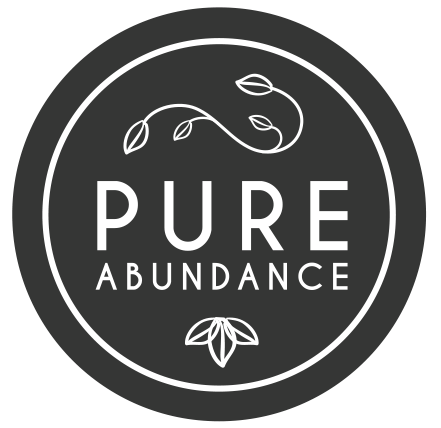 Cultured and aged cashew cheeses made by combining traditional methods with modern technolog. “Organic cashews and supporting ingredients are blended with a vegan probiotic culturing agent and aged in our cheese cave for 11 days. A complex and satisfying flavor profile emerges as the magic of chemistry transforms a few simple ingredients into exquisite cheese….Handmade with love from organic ingredients, Pure Abundance Cashew Cheeses are dairy-free, soy-free, and gluten-free.”
Cultured and aged cashew cheeses made by combining traditional methods with modern technolog. “Organic cashews and supporting ingredients are blended with a vegan probiotic culturing agent and aged in our cheese cave for 11 days. A complex and satisfying flavor profile emerges as the magic of chemistry transforms a few simple ingredients into exquisite cheese….Handmade with love from organic ingredients, Pure Abundance Cashew Cheeses are dairy-free, soy-free, and gluten-free.”
Comparison of EnviroKlenz and MoleKule Air Purifiers
Update April, 2020:
Read the latest information in the Portable Air Purifier Buying Guide. read more…
Mission Hammocks
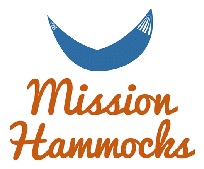 Hammocks and hammock chairs made from 100% cotton in Nicaragua. Type “organic” in the search box to find the ones made with organic cotton. “All of our hammocks are made in a workshop staffed with people who have various disabilities in Nicaragua. We’re Our goal is to make sure that the 30+ individuals that work in the workshop that are blind, deaf, and have physical disabilities will be able to live the lives they deserve. ”
Hammocks and hammock chairs made from 100% cotton in Nicaragua. Type “organic” in the search box to find the ones made with organic cotton. “All of our hammocks are made in a workshop staffed with people who have various disabilities in Nicaragua. We’re Our goal is to make sure that the 30+ individuals that work in the workshop that are blind, deaf, and have physical disabilities will be able to live the lives they deserve. ”
Straw Sleeves
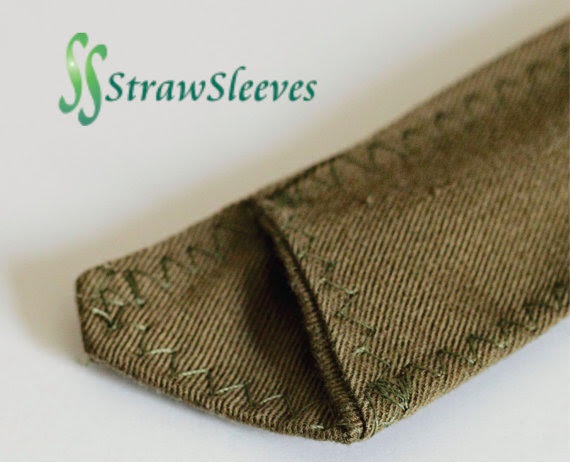 Reusable drinking straws plus sleeves made from hemp to keep your straws clean and easy to carry.
Reusable drinking straws plus sleeves made from hemp to keep your straws clean and easy to carry.
Lola
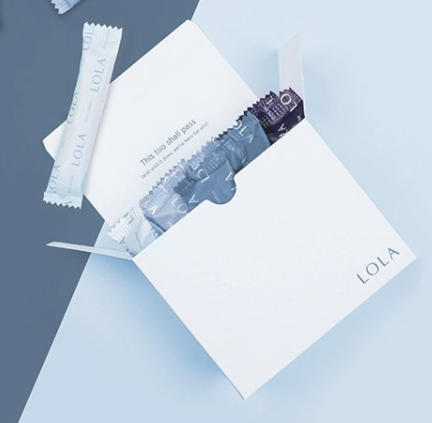 Monthly subscription for organic cotton tampons and pads. “Tampons and pads by women, for women…Our products are made with organic cotton – meaning no toxins, fragrances, or synthetic fibers.”
Monthly subscription for organic cotton tampons and pads. “Tampons and pads by women, for women…Our products are made with organic cotton – meaning no toxins, fragrances, or synthetic fibers.”
Summer Sequoia Tallow
 “Slow body care” soaps, balms and lip care made from tallow, “the fat from the inside cavity of the cow, closest to the loins and the kidneys) from grass-fed cows raised on organic fertile pastures at Magruder Ranch in Potter Valley, Mendocino County, California and 100% certified organic pasture lands just a few miles from the Pacific Ocean at Stemple Creek Ranch in Tomales Bay, California….We use the highest grade of Organic Therapeutic Grade Essential Oils in our product line from the Ecologically responsible Floracopeia of Grass Valley, California and wildcrafted Absolutes by John Steele in Sherman Oaks, California.” This website is different than most. Gorgeous photos slide by. You need to find small black boxes in the lower left corner of each slide, and click on it. Worth the click.
“Slow body care” soaps, balms and lip care made from tallow, “the fat from the inside cavity of the cow, closest to the loins and the kidneys) from grass-fed cows raised on organic fertile pastures at Magruder Ranch in Potter Valley, Mendocino County, California and 100% certified organic pasture lands just a few miles from the Pacific Ocean at Stemple Creek Ranch in Tomales Bay, California….We use the highest grade of Organic Therapeutic Grade Essential Oils in our product line from the Ecologically responsible Floracopeia of Grass Valley, California and wildcrafted Absolutes by John Steele in Sherman Oaks, California.” This website is different than most. Gorgeous photos slide by. You need to find small black boxes in the lower left corner of each slide, and click on it. Worth the click.
Blue Hill Berry Company
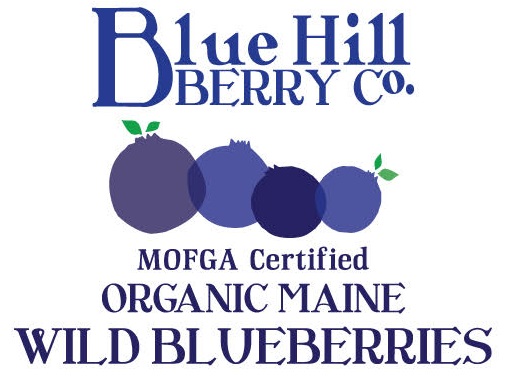 “We supply the highest quality, certified organic Maine wild blueberries…You are buying directly from us, the farmers —so you can “know your farmer,” and know that we grow and produce our berries under strict organic management with third-party verification (MOFGA Certified Organic since 1997)…Our wild blueberries are harvested in the full height of summer, when they are at their peak ripeness, and they are frozen the very day they are harvested and winnowed. This is what is known as “fresh frozen,” in contrast to the more factory-scale “IQF” (Individual Quick Frozen) wild blueberries that are produced by the larger processors where the berries are soaked in a solution before freezing and laser-sorting. Unlike the IQF berries, our berries still have their “bloom” intact, which is the whitish powdery coating on the skin of each berry (the “epicuticular wax”) that protects it and helps maintain its just-picked qualities —their summer ripeness is captured unaltered. This means our berries thaw out to look and taste just like they were fresh.”
“We supply the highest quality, certified organic Maine wild blueberries…You are buying directly from us, the farmers —so you can “know your farmer,” and know that we grow and produce our berries under strict organic management with third-party verification (MOFGA Certified Organic since 1997)…Our wild blueberries are harvested in the full height of summer, when they are at their peak ripeness, and they are frozen the very day they are harvested and winnowed. This is what is known as “fresh frozen,” in contrast to the more factory-scale “IQF” (Individual Quick Frozen) wild blueberries that are produced by the larger processors where the berries are soaked in a solution before freezing and laser-sorting. Unlike the IQF berries, our berries still have their “bloom” intact, which is the whitish powdery coating on the skin of each berry (the “epicuticular wax”) that protects it and helps maintain its just-picked qualities —their summer ripeness is captured unaltered. This means our berries thaw out to look and taste just like they were fresh.”
Toxics in the Environment Deadlier Than Violence….
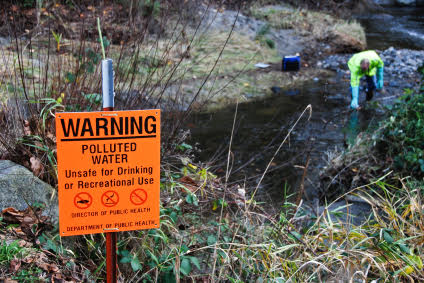
I haven’t subscribed to a newspaper for years, but now that I am living with Larry’s family, there’s a local newspaper on the table every morning. On Saturday morning I happened to glance down at the headline
DEADLIER THAN VIOLENCE
“They must be talking about toxics,” I thought. And I was right.
The story began:
Environmental pollution — from filthy air to contaminated water — is killing more people every year than all war and violence in the world. More than smoking, hunger or natural disasters. More than AIDS, tuberculosis and malaria combined.
And it went on to say:
One out of every six premature deaths in the world in 2015 — about 9 million — could be attributed to disease from toxic exposure…Experts say the 9 million premature deaths the study found was just a partial estimate, and the number of people killed by pollution is undoubtedly higher and will be quantified once more research is done and new methods of assessing harmful impacts are developed.
The financial cost from pollution-related death, sickness and welfare is equally massive, costing some $4.6 trillion in annual losses — or about 6.2 percent of the global economy.
This report is the first attempt to pull together data on disease and death caused by all forms of pollution combined.
ASSOCIATED PRESS: Study: Pollution kills 9 million a year, costs $4.6 trillion
Tiny Living in a Healthy Town
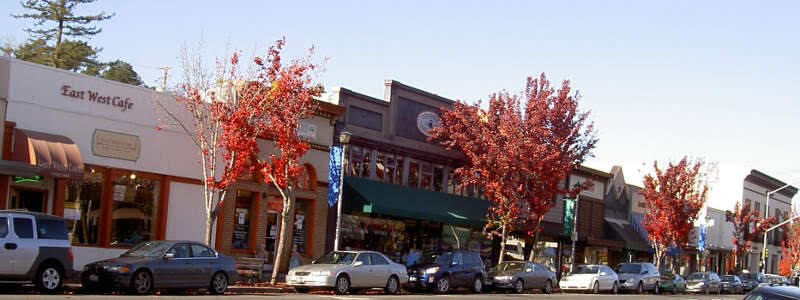
Sebastopol is the only town I’ve seen that has an independent bookstore, art supply store, and a music store right on main street, plus TWO organic food stores right near by.
Last week I wrote about how much I am loving living in Sebastopol California. This week I want to tell you more about how it’s healthy and the logistics of living here.
History of Sebastopol
Sebastopol was founded in the 1850s as a trading center for farmers and a site for a United States Post Office. After the Gold Rush of 1849m, more and more settlers came to California and many found a home in the fertile valleys north of San Francisco.
In 1875 botanist Luther Burbank came to Santa Rosa. Every school child in California knows Luther Burbank, who cultivated new varieties of fruits and vegetables through the traditional methods of seed-saving and grafting. No GMOs. With these simple methods he cultivated many new varieties in common use today, including the Russet potato, the most widely grown potato in the United States. Burbank’s experimental farm in Sebastopol is a wonderful place to visit, as is his home in Santa Rosa.
In the latest 1800s, a local farmer worked with Burbank to develop the Gravenstein apple for commercial use and Sebastopol became an apple boom town. Apples are so ingrained in the life of Sebastopol that even today, when many of the apple orchards have been replaced by vineyards, there is a free community apple press that can process 100 pounds of apples into cider in 20 minutes.
So from the very beginning, Sebastopol has been about food, farming, and health.
Coming Home to Sebastopol
I first came to Sebastopol about 30 years ago to visit the showroom of Shepherd’s Dream. While they are now located in Montague, California, Shepherd’s Dream started here in Sebastopol, and it was here that I worked with them to write the first standard for pure wool. The wool for the wool bed I sleep on came from local sheep near Sebastopol.
Around the same time, Larry’s parents purchased a lot in Sebastopol and built a house on it for their retirement. So I spent a lot of time in Sebastopol before I moved to Florida in 2002.
Today as I come home to Sebastopol after 15 years I see that much has changed and much is still the same. Many of the shops on historic Main Street are just the same, but there is now a vibrant farmer’s market, a wonderful new district called The Barlow that has transformed the site and buildings of an old applesauce factory into a vibrant artisan market district, and it’s just more crowded. Where before Sebastopol was a quiet town off the beaten path, it is now an integral part of the Napa-Sonoma wine industry.
I am here right now on grace. We didn’t choose to come to Sebastopol. We chose to come home and help our family. That our family is in Sebastopol is a gift. And I am thankful to be here every minute of every day. Life here agrees with me and I am loving exploring and experiencing this place.
The Cost of Living in This Healthy Town
Sebastopol is still a farm community, but it’s now much more expensive because of the value of the land for grapes and it’s proximity to San Francisco, which I think is now one of the most expensive places to live in America. Many of what used to be small family farms growing the foods of daily life, that same land is now growing gourmet wine. Still, there are many small farms growing specialty foods, but more and more land is going to grapes.
When I last lived in California in 2002. I had been paying a $2000/month mortgage for 12 years to live in a 700 square foot cabin. My whole life revolved around paying that mortgage and it was very difficult. This was part of the draw for me of moving to Florida. For the past 15 years I’ve been living in a 1600 square foot house with a $800/month mortgage. But even though I had a bigger house, I didn’t have quality of life.
Sebastopol clearly has the quality of life I want, but I wouldn’t be able to live here if I didn’t have family to stay with. I looked at the rentals just before writing this post and to rent a 700 square foot house is $3000. Hotel rooms on the weekend are $400/night. If you can find them. I mentioned to a farmer at the farmer’s market last week that I was looking for housing and she said, “Good luck. Any housing is hard o find.” And she was right. I think most people who live here now bought houses years ago.
Which brings me to tiny living.
Our Move Toward Tiny Living
Last week I wrote that Larry and I “have undertaken an enormous task of re-organizing our lives around ideas, abilities, relationships, experiences, adventures, and other such soul-satisfying interests rather than the pursuit of material goods.” With this goal in mind, we are simplifying our lives and reducing our possessions. And that’s why we are here. To reduce the pile of things Larry has collected over the years that are being stored at his parents.
But what has happened is pretty funny. My father used to say, “Be careful what you wish for because you just might get it.” Well, we are intending to live more small and simple. We’ve actually been watching all the tiny house shows on TV for months.
And what has happened is…we came here thinking we would have two rooms in Larry’s family house but for the moment we have only one. So we really have to live tiny! I don’t get a separate room for my office. We have one 12×16 room, That’s just under 200 square feet. The size of a smaller-size tiny house.
We can do this. When we first met we lived and worked in one room together.
Two things come to mind….
On tiny house tv shows people in tiny houses are always talking about quality of life. That they have exchanged their big houses and piles of belonging for more time and resources available for family, travel, education, and other pursuits of happiness. And we are experiencing that now. I was remembering this morning many years ago when I sold my grand piano because I was tired of moving it and buying or renting places big enough to hold it. If I were a concert pianist that would be one thing. But I hardly played it, so I sold it and fulfilled my lifetime dream of traveling through the British Isles. Today I am feeling the same about needing to carry so much stuff around with me if I want to go from place to place.
I’m also remembering something an architect friend said to me a number of years ago. We were talking about the ideal size for a home. And she said something about physical space versus living space. And how you don’t need to have all your living space in your home. Essentially we need a place to sleep, store clothing and other personal items, a place to bathe, a place to cook and eat, and for me, I need a place to do my work. But all of these do not need to be contained in a home. She considered her entire city as her “living space” and I’ve never forgotten that.
As we are gradually emptying our room to make space for our present needs, an interesting thing has happened. Larry started looking for a used trailer that we could transform into a tiny house space for my office. And as we started thinking about it, we saw we could build our own tiny house while we are living here and then have a tiny house when the time comes to leave. And that day will come. The house will be sold and we will need to live somewhere else. With a tiny house we could live anywhere.
And two weeks ago when the fires broke out and we had to escape the smoke, we could have just taken our tiny house anywhere if we already had one.
Living tiny in a way that’s mobile is looking more and more like our future. We’ll see what happens next.
Natamycin in Cheese

Question from Orsolya Csobi-Szabo
Hi Debra,
Do you consider Natamycin as a safe natural mold inhibitor used / added to most of the cheese products?
Thank you so much.
Debra’s Answer
Well, first thing is that it’s on the Whole Foods Market Unacceptable Ingredients for Food list.
You have asked me if I consider Natamycin to be safe and natural mold inhibitor.
It’s natural the sense that it material it is made from comes from nature (it’s not petrochemical).
Whether it’s safe or not is debatable.
But what I object to is that it’s an industrial additive that is only there so your cheese product does not mold. What I object to is industrial cheese products that are so old they need mold inhibitors.
Many cheeses get their flavor from mold added during the production process, such as blue cheese, which I love. But when cheese is cut and shredded and starts to mold, that’s an indicator that Nature is trying to break it down and return it to the ecosystem.
Your question brought to mind an experience I had yesterday at the farmer’s market when I ate some fresh goat cheese that the owner of the goats had just made right there at the farmer’s market. Such a gift. So delicious. That’s the cheese we should be eating. Not industrial cheese products.
Glass tea kettle and thermos
Question from TA
Hi Debra,
I’m wondering if you or your readers have any recommendations for glass (or other non-toxic) tea kettles and a thermos. I was using a stainless steel electric kettle from Hamilton Beach, but it stopped working. It boiled water very quickly, so I figured that a minute or so in the stainless steel probably wasn’t a significant leaching risk. Since it has stopped working, though, I’m pondering a glass one.
I’d like an electric one but haven’t succeeded in finding one that doesn’t have plastic pieces that come in contact with the water or steam. So I’ve looked for a stovetop one; I found one on Amazon that is glass, has good reviews that aren’t fake (I found several others that have fake reviews according to fakespot.com), and has a stainless lid. However, for borosilicate, there are always reviewers who say they use it on the stovetop and it’s okay, and then reviewers who say “Oh, I’d never use it on the stovetop.” Hmm…what to do?
I’d also like a glass thermos of some type to store the warm water in. Ideally, I could boil some water and store it to use throughout the day. I’d love to know of any that might be available. So far I haven’t found what I’m looking for. I have seen some double-walled glass mugs/tumblers, with varying reviews; but that wouldn’t keep the water warm all day. It would also be nice to have the thermos for transporting warm food on occasion. I saw an older style Thermos (brand name) that was plastic outside and glass lined inside — but the reviews were not good, and I believe the glass is lined with something anyway, so not just glass in contact with the food. Any suggestions? Maybe I need to think outside the box somehow.
Debra’s Answer
 |
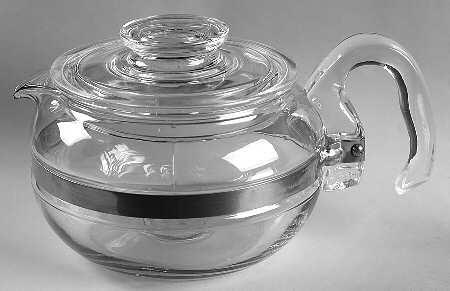 |
I use an Xtrema ceramic tea kettke to boil water.
I grew up with this exact Pyrex Flameware pot. It comes with a trivet to put on the burner below. I once left it too long and the water boiled away and it broke, but my mom bought another one. These are no longer made but used ones are available. No plastic at all. Search for “Pyrex Flameware 6 Cup Tea Kettle – Model 8126”
There are still thermoses with glass inside:
What is Viscose?
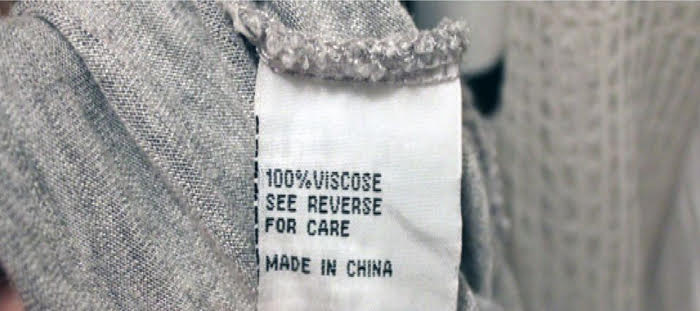
Question from Bonnie
Hi Debra,
What is viscose and is it somewhat safe to wear? I have found many t shirts made of this fabric and even bed sheets.
Debra’s Answer
Viscose is a brownish solution obtained by treating cellulose from plants with sodium hydroxide and carbon disulfide/ It is used to make rayon fiber and transparent cellulose film (cellophane).
The word is also used to refer to the rayon fabric or fiber made from viscose.
I think it is somewhat safe to wear. It’s a manmade industrial fiber. I occasionally buy a scarf made from viscose and once bought a dress-up dress made from it that I didn’t wear every day, but I wouldn’t sleep on viscose sheets every night.
FTC Takes Action Against Paint Companies for False Claims Regarding VOCs
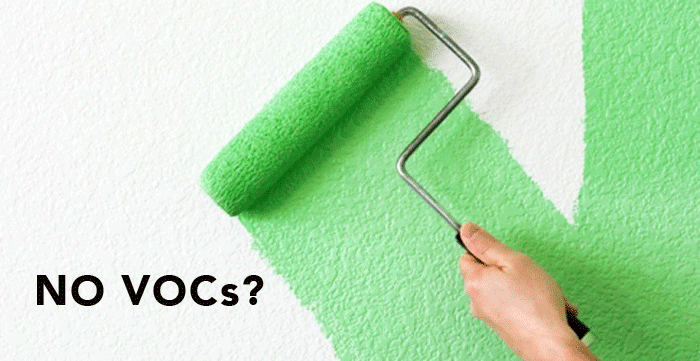
Paint Companies Settle FTC Charges That They Misled Consumers; Claimed Products Are Emission- and VOC-free and Safe for Babies and other Sensitive Populations
Orders require companies to show paint emits no harmful chemicals at the time paint is applied when making unqualified zero-emission/zero-VOC Claims
Four paint companies have agreed to settle Federal Trade Commission charges that they deceptively promoted products as emission-free or containing zero volatile organic compounds (VOCs), including during and immediately after application. Some promotions also made explicit safety claims regarding babies, children, pregnant women, and other sensitive populations. However, the FTC alleged, the companies had no evidence to support these claims.
The four companies, Benjamin Moore & Co., Inc., ICP Construction Inc., YOLO Colorhouse, LLC, and Imperial Paints, LLC, have agreed to orders that would bar them from making unqualified emission-free and VOC-free claims unless, at all times during application and after, both content in and emissions from their paints are actually zero, or emissions are at “trace levels,” as defined in the orders.
The settlements also prohibit the companies from making other unsubstantiated health and environmental claims, and ensure that two of the companies disclose that seals appearing in their promotional materials are their own designations.
VOCs are carbon-containing compounds that easily evaporate at room temperatures. All paints emit chemicals during the painting process and while drying. Some of these chemicals can be harmful to the environment and people, especially to sensitive groups such as babies and those suffering from asthma or allergies.
In four separate complaints, the FTC charged each company with making unsubstantiated claims that their paints were free of emissions and/or that they contained no VOCs, without any qualification (e.g., after X number of hours). The FTC also charged the companies with facilitating deception by retailers who sold their paint. Additionally, in its complaints against Benjamin Moore and ICP Construction, the FTC alleged that the companies marketed their paint using environmental seals without disclosing to consumers that they had awarded the seal to their own products.
Each of the proposed consent orders settling the charges against Benjamin Moore & Co., Inc., Imperial Paints, LLC, YOLO Colorhouse, LLC, and ICP Construction Inc. contains four provisions designed to ensure the companies do not engage in similar conduct in the future.
First, they would prohibit the companies from making unqualified emission-free and VOC-free claims, unless both content and emissions are actually zero, or emissions are at trace levels, beginning at application and thereafter. The proposed orders’ definition of “trace level of emissions,” which generally tracks the Green Guides,’ “trace amount” test, requires, in part, that emission at that level does not cause material harm that consumers typically associate with emission from the covered product, including harm to the environment or human health.
Second, they would prohibit the companies from making claims about emission, VOC levels, odor, and other environmental or health benefits, unless they are true and not misleading, and unless the companies have competent and reliable scientific evidence to back them up.
Third, to correct existing unsubstantiated claims, the orders would require the companies to send letters to their distributors, instructing them to stop using existing marketing materials and providing stickers or placards to correct misleading claims appearing on product packaging or labeling.
Fourth, the orders would bar the companies from providing third parties with the means of making false, unsubstantiated, or misleading representations about material facts regarding paints described above.
The proposed orders against Benjamin Moore & Co., Inc. and ICP Construction Inc. contain two additional provisions, which would prohibit them from misrepresenting third-party certifications and failing to adequately disclose a material connection with an endorser.
The Commission vote to accept the consent agreements was 2-0. The FTC will publish a description of the consent agreement packages in the Federal Register shortly. The agreements will be subject to public comment for 30 days, beginning today and continuing through August 10, 2017, after which the Commission will decide whether to make the proposed consent orders final.
If the Commission finalizes the agreements’ proposed orders, it plans to propose harmonizing changes to two earlier consent orders issued in the similar PPG Architectural Finishes, Inc. (Docket No. C-4385) and The Sherwin-Williams Company (Docket No. C-4386) matters. Specifically, the Commission plans to issue orders to show cause why those matters should not be modified pursuant to Section 3.72(b) of the Commission Rules of Practice, 16 C.F.R. § 3.72(b).
Interested parties can submit comments electronically one or more of the proposed orders, including: Benjamin Moore & Co., Inc; Imperial Paints, LLC; ICP Construction Inc.; and YOLO Colorhouse, LLC.
NOTE: The Commission issues an administrative complaint when it has “reason to believe” that the law has been or is being violated, and it appears to the Commission that a proceeding is in the public interest. When the Commission issues a consent order on a final basis, it carries the force of law with respect to future actions. Each violation of such an order may result in a civil penalty of up to $40,654.
The Federal Trade Commission works to promote competition, and protect and educate consumers. You can learn more about consumer topics and file a consumer complaint online or by calling 1-877-FTC-HELP (382-4357). Like the FTC on Facebook(link is external), follow us on Twitter(link is external), read our blogs and subscribe to press releases for the latest FTC news and resources.
New Greenpeace Guide to Greener Electronics 2017
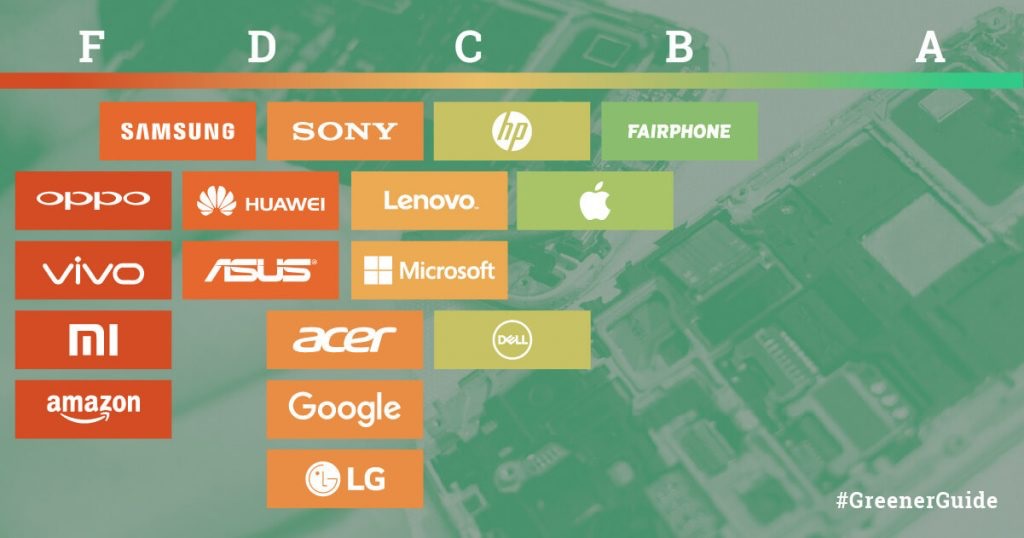
“With the relaunch of the Guide, we have focused on measuring elimination of hazardous chemicals from both the product itself and manufacturing.”
Samsung Trails Behind Apple in New
Greenpeace Guide to Greener Electronics
Average Grade Across 17 Companies Is D+,
Indicating Long Way to Go Toward Sustainable IT
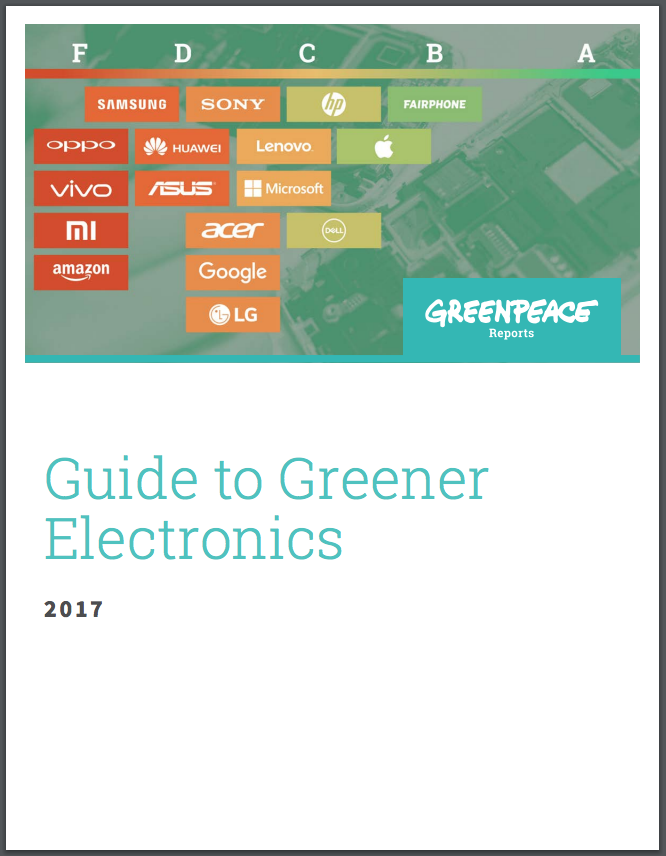 San Francisco, October 17, 2017 -The 2017 Guide to Greener Electronics (the Guide) was released today by Greenpeace USA, with rankings of seventeen of the world’s leading consumer electronics companies on sustainable manufacturing and design of IT products.
San Francisco, October 17, 2017 -The 2017 Guide to Greener Electronics (the Guide) was released today by Greenpeace USA, with rankings of seventeen of the world’s leading consumer electronics companies on sustainable manufacturing and design of IT products.
Companies were evaluated based on their transparency, commitment, performance and advocacy efforts in three critical areas: reduction of greenhouse gases through renewable energy; use of recycled materials; and elimination of hazardous chemicals.
“Tech companies claim to be at the forefront of innovation, but their supply chains are stuck in the Industrial Age. We know they can change. Rather than fueling climate change, IT companies need to show the way forward, just like Google and Apple have done with data centers run on renewables,” said Gary Cook, Senior IT Campaigner at Greenpeace USA.
The average grade across the 17 companies evaluated in the Guide was a D+, demonstrating that the sector as a whole has work to do to resolve supply chain impacts and improve product design. Fairphone, based in the Netherlands, scored best overall with a B, followed by Apple with a B-. Dell and HP follow Apple and Fairphone with a C+, while eleven companies, including Samsung, Huawei and Amazon, fall in the D and F range. The full list of rankings can be found here.
Despite its central position as both the largest manufacturer of smartphones and one of the largest suppliers of displays, Samsung’s manufacturing system relies heavily on fossil fuels. The company used more than 16,000 GWh of energy in 2016, with just 1% coming from renewables, for example.
Demand for consumer electronics continues to climb, with nearly 2 billion devices sold in 2016 alone. This drives demand for both finite mined materials and dirty energy. Meanwhile, e-waste is growing, due in part to the short lifespans of devices. The UN has estimated that e-waste globally will surpass 65 million tons in 2017–enough to bury San Francisco to 14 feet.
Key findings of the 2017 Guide to Greener Electronics include:
- Supply chain driving demand for dirty energy: Up to 80% of the carbon footprint of electronic devices occurs during manufacturing. While Google, Apple and other internet companies are making progress transitioning their data centers to renewable energy, nearly all of the companies in the Guide have yet to address the rapidly growing carbon footprint and dependence on dirty energy in their supply chains. Apple is the only company thus far that has committed to 100% renewable power for its supply chain.
- Planned obsolescence as design feature: Apple, Microsoft, and Samsung are among the companies moving in the wrong direction on sustainable product design – many of their latest products are difficult to repair or upgrade. HP, Dell, and Fairphone are the notable exceptions to this trend, producing a growing number of products that are repairable and upgradable.
- Poor supply chain transparency: Despite representing the majority of the environmental footprint for most electronic manufacturers, most companies publish little information on their suppliers, keeping their environmental footprint of their supply chain hidden from view. Of the 17 companies evaluated in the Guide, less than one third publishes a basic list of suppliers, keeping their supply chain hidden from view.
- Lack of transparency and monitoring of workplace chemicals: To protect worker health and safety, all companies need to identify and eliminate hazardous chemicals used in the production of their products, and improve worker health and safety due diligence. Apple, Dell, Google, HP, and Microsoft are the only companies in the Guide that publish their list of substances that must be restricted in the manufacturing of their devices (MRSL), including known hazards benzene, n-hexane, and toluene.
“It is clear the impacts of the linear take-make-waste business model employed by device manufacturers extend beyond the concerns of e-waste. We need to see greater ambition, more transparency, and follow-through from companies to address the environmental impacts of their enormous supply chains. The current model cannot be maintained,” said Cook.
Greenpeace is challenging the IT sector to take responsibility for its rapidly increasing footprint on the planet by:
- Shifting their supply chains to be renewably powered;
- Reducing the cycle of constant consumption of more minerals and other resources by designing long lasting products that use more recycled materials, and;
- Detox their products and their supply chain by finding alternatives to hazardous chemicals.
My Visit to the Naturepedic GOTS Certified Organic Mattress Factory
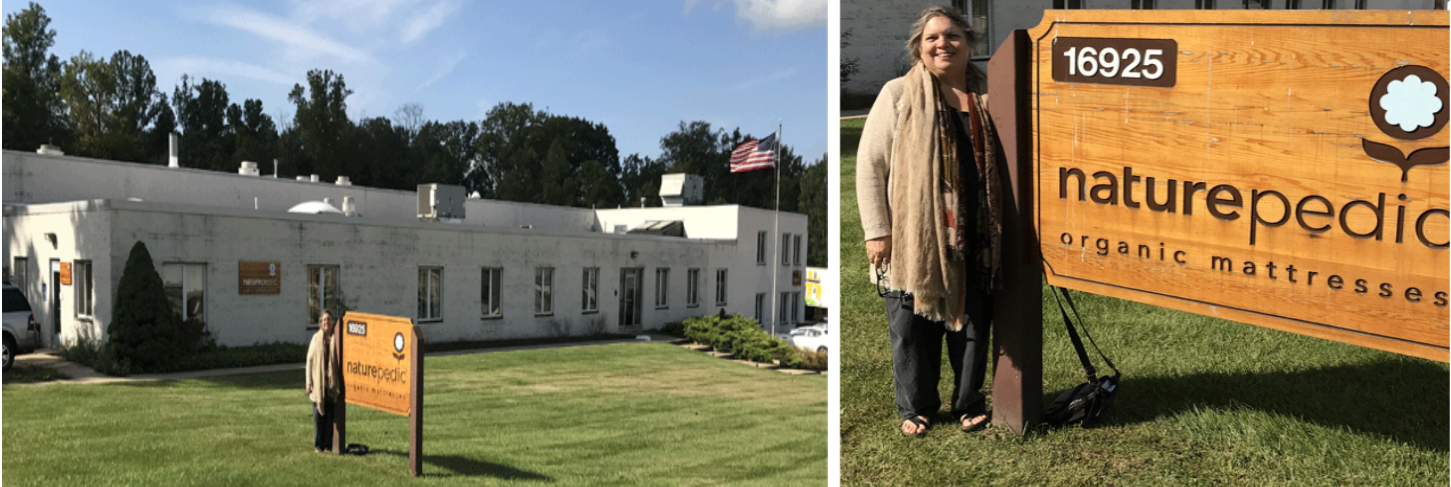
Read my post on the Naturepedic blog Understanding the Global Organic Textile Standard “Organic Mattress” Certification for more information about the GOTS standard and certification.
On 6 September 2017 I visited the Naturepedic mattress factory in Chagrin Falls, Ohio.
This charming village is in the countryside near Cleveland, built in the 1800s around a rushing waterfall in the center of town. The Naturepedic factory is just outside town in a quiet natural setting.
From the beginning, the Naturepedic factory was designed to be free from any toxic chemicals that might find their way into the mattress.
The mattresses are “handmade” in the sense that actual people are making the mattresses and bedding with their own hands. That said, there are also machines that make their work easier, such as sewing machines and heat sealers. There are also machines such as a vacuum machine that pulls all the air out of an innerspring mattress so it can be packed into a smaller box.
The concept of “aseembly line” is well used here, but instead of conveyer belts, products in progress are passed from person-to person, hand-to-hand. Some assembly steps are done by individuals, others by teams of people, such as two workers cutting a large sheet of fabric, their two pairs of scissors meeting in the middle.
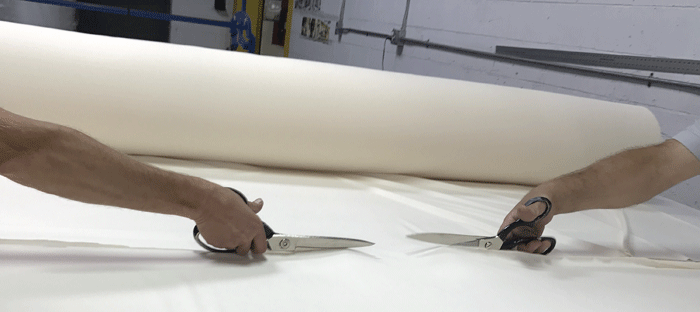
This is typical of the spirit of cooperation that runs throughout the factory.
Many of the workers are local Amish, who begin at 6:30 AM. They asked to start work at this hour because they are already up feeding the animals on their farms at 4 AM and they wanted to get right to work on mattress-making. It made me smile to learn the day before my visit the entire factory closed for the afternoon so everyone could attend the wedding of one of the Amish workers.
As I toured the factory, over and over again I observed excellent relationships between everyone there, at every level. Many of the workers have been with the company for a number of years, some since the beginning. And their experience shines through in the quality of Naturepedic products.
I was introduced to and spoke with many of the workers. I was delighted to hear from many of them how happy they were to work at Naturepedic because they agreed with the basic purpose of the company. One worker told me that he was from a factory town that was full of toxic factories that smelled bad and produced toxic products. He much preferred working at Naturepedic. There just is a lot of love here, and dedication to incorporating their ideals and vision in everything they do.
Being a GOTS Certified Organic Mattress Manufacturer and Facility, Naturepedic must follow strict guidelines:
- All cotton, wool, and other fiber materials must be certified organic.
- Latex must be certified organic (if mattress is also GOLS certified).
- All mattress accessories must be approved by GOTS and must demonstrate that they meet GOTS non-toxic requirements.
- Lot tracking of all materials and components.
Inspectors then come to the factory to ensure the requirements for certification are met.
Inspections include tracking use of materials plus an accounting of all the material entering and leaving the system to ensure the certified materials were used.
Materials are stored in a warehouse next to the workspace where the mattresses and bedding are constructed.
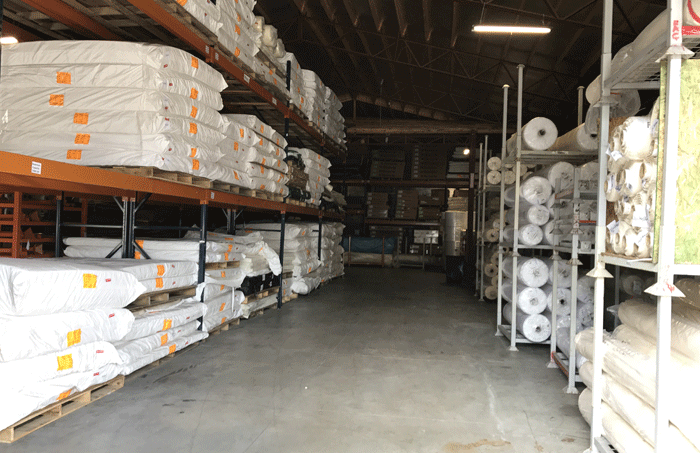
On the early autumn day when I visited, the doors were wide open and a clean breeze was blowing through. All materials are labeled and otherwise tracked for source, date, and anything else required by GOTS.
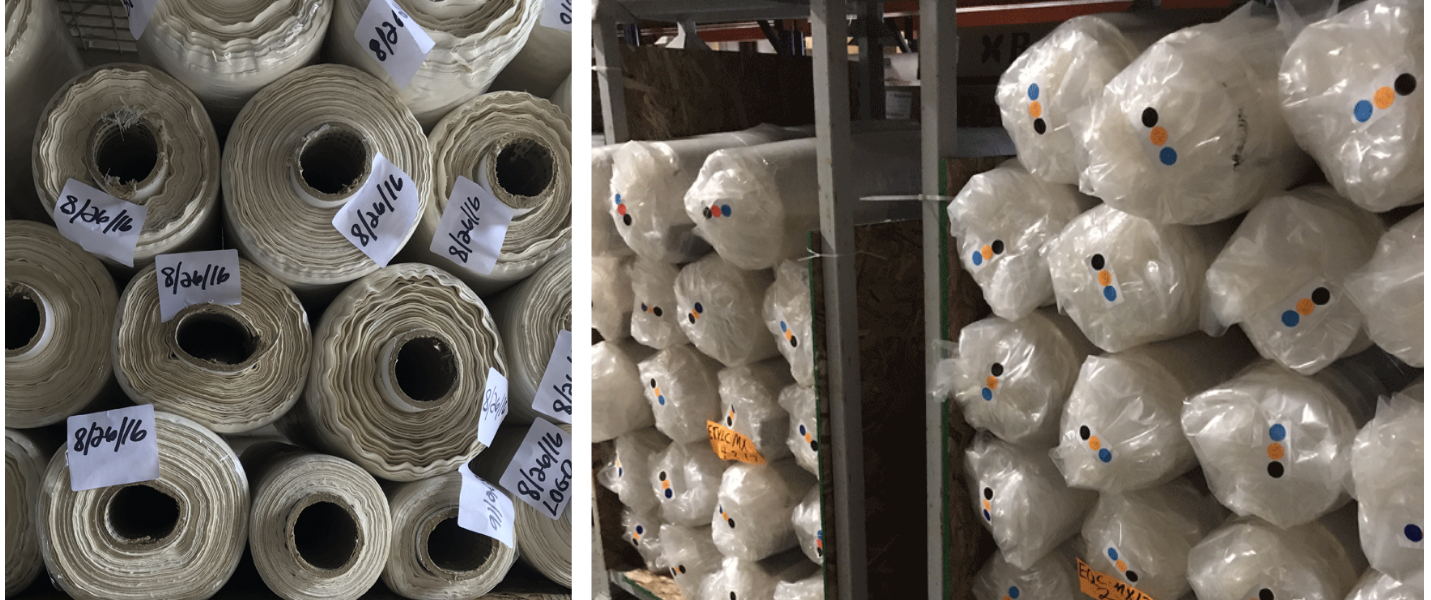
And at the end of the manufacturing process, a label is applied that lists all the materials used that shows the certifications.
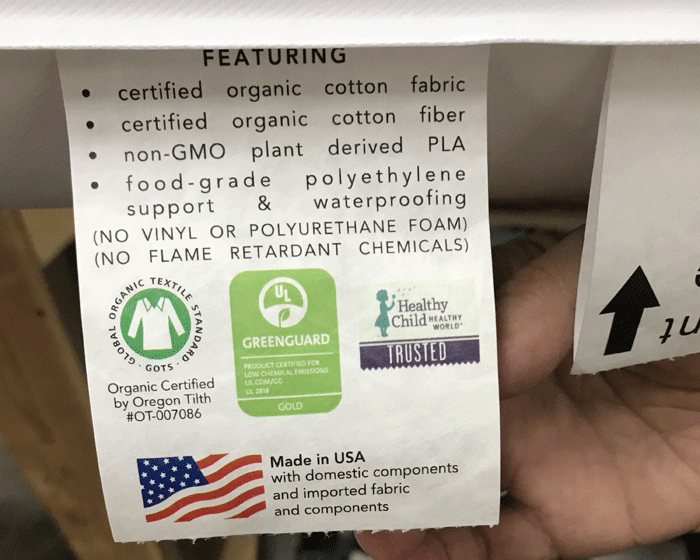
I spent the entire day at the factory and witnessed all the steps of making a mattress from start to finish—from the materials in the warehouse to the boxes being loaded on the shipping truck.
And at the end of the day I wished that every product in the world was manufactured like a Naturepedic mattress.
Public Health Officer Says “New Homes Burning Create Toxic Ash”
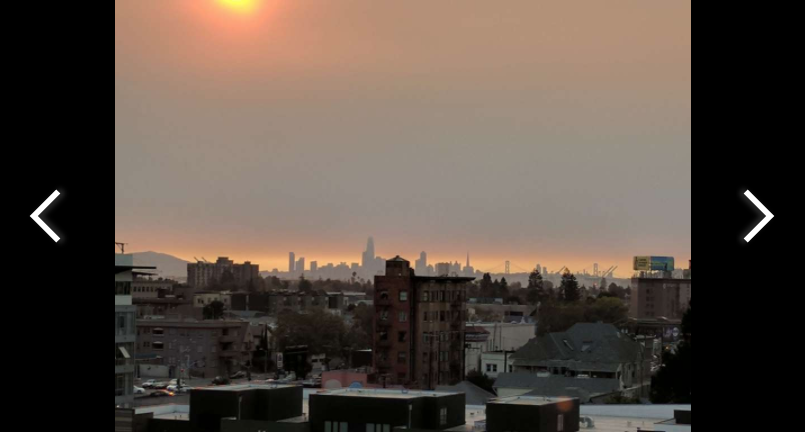
That’s the San Francisco skyline off in the distance. Click on the image to see an amazing collection of photos of our smoky skies here. When you click through the first image on the photo gallery is a woman with a scarf over her face. Just click on the right arrow to start viewing the smoky skies images.
After five days of fires in which more that 5000 homes and other buildings were destroyed near where I am living, Napa County Public Health Officer Dr. Karen Relucio declared a local health emergency throughout Napa County due to the hazardous waste and materials created by the fires.
We had been getting warnings about “unhealthy” levels of air quality daily since the fires started, but for the first time on Friday, those who have lost their homes were specifically told NOT to clean up fire debris because it was likely to be hazardous.
“The public should not attempt to clean up fire related debris,” Relucio said. “It is not safe. The ashes are toxic. They contain toxic materials.” She went on to note that the reason the ashes are toxics is “synthetic materials in new homes and household hazardous waste.”
I wish I could give you a link to her speech, but I can’t find it online. I saw it on tv news.
The ashes are toxic. The ashes are toxic. And the ashes from this fire are not limited to the debris on the ground. They are in the air all over the entire San Francisco Bay Area and beyond.
So when we’re breathing the air from smoky skies, it’s not just ash, it’s toxic ash the the public health department does not want us to even touch.
This is a serous public health issue.
If you live where there are smoky skies from burning buildings, it is imperative to stay in your home with an air filter and wear an appropriate mask when you are outdoors.
Choosing the Right Face Mask for Smokey Skies
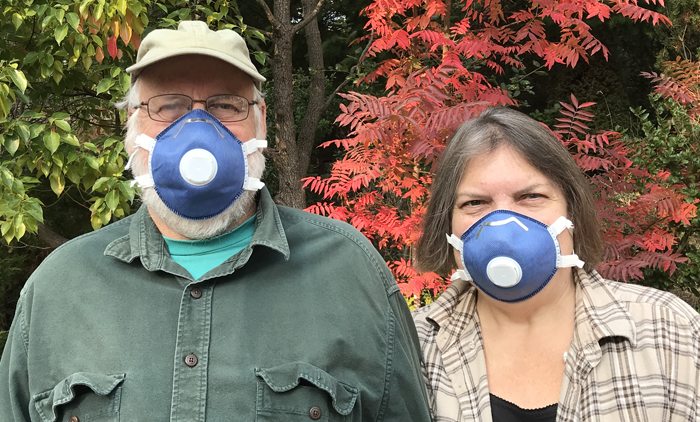
Debra and Larry wearing EnviroKlenz Face Masks
I’ve been living about 10 miles from one of the largest California fires ever for the past nine days now. It has produced a tremendous amount of smoke and ash all over the San Francisco Bay area, but especially right here where I am, near Santa Rosa.
There have been times when we literally could not breathe here without an air filter or face mask. At the end of the first day, Larry and I went to the beach to breathe, but by morning the smoke was there too.
It was very fortunate that I had an air filter in my storage unit. It has made it possible for us to breathe this past week, and I’m still sitting next to it as I write this today.
Smoke conditions in the outside air have been changing day-by-day depending on wind direction. I actually have never been in a situation where the air quality was so bad that I couldn’t breathe but one day last week I walked out the door and started coughing. We drove right to the hardware store to get a face mask. We had tried to buy facemasks a few days before but they were all sold out. That day they did have facemasks, but they were insufficient.
Facemasks are not a new subject for me. Many people with multiple chemical sensitivities (MCS) wear them all the time, as do some people who live in cities with air quality problems.
But since the need for a facemask is now imperative here, I decided to write about facemasks because there is a lot of misinformation in the news and in stores.
We all need to understand the health dangers present in smoky or polluted skies so we can then purchase the proper equipment to protect our lungs and our health
What You Need to Filter When There is Smoke in the Air
Smoke is made up of both particles and gasses. To choose a particle filter, you need to know about these pollutants.
Particles come in various sizes, which are measured in microns (also known as micrometers). Different types of particles have different sizes.
Particle pollution ratings are:
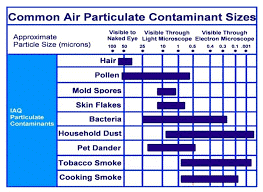
- PM10 : inhalable particles, with diameters that are generally 10 microns and smaller; and
- PM2.5 : fine inhalable particles, with diameters that are generally 2.5 microns and smaller.
Fine particles are the main cause of reduced visibility (haze) in the air. So if visibility is reduced in the air where you are, it’s full of fine particles.
Particles less than 10 microns in diameter pose the greatest health problems, because they can get deep into your lungs, and some may even get into your bloodstream. If the particles are toxic, then you run the risk of spreading toxic particles throughout your body when you breathe them. More on health and environmental effects of particulate matter.
Gasses are much simpler. In order to remove gasses from the air you are breathing you need a filter medium that will remove gasses, such as activated carbon or one of the new technologies that actually break down chemicals into natural elements.
Choosing the Right Face Mask
There are many face masks on the market, but they all fall into three basic types.
Medical Face Masks
 The most common face masks are medical face masks. My local CVS Pharmacy was giving these away for free, but they weren’t doing much good.
The most common face masks are medical face masks. My local CVS Pharmacy was giving these away for free, but they weren’t doing much good.
This is the kind of mask worn by dental and medical personnel to protect themselves from germs that might be carried by patients. It is also used in food service to keep food workers germs off food. Their purpose is to prevent the spread of disease.
They are made from non-woven fabric and filter paper.
If worn properly, a medical facemask will block large-particle droplets, splashes, sprays or splatter that may contain germs (viruses and bacteria), keeping them from reaching your mouth and nose. Facemasks can also help reduce exposure of your saliva and respiratory secretions to others. But medical face masks do not filter or block very small particles in the air that may be transmitted by coughs, sneezes or certain medical procedures. Facemasks also do not provide complete protection from germs and other contaminants because of the loose fit. If you want more protection from germs, use an N95 respirator (see below),
Medical face masks do not protect you from toxic particles or gasses found in smoke.
Face Masks for Particulates
Face masks for particulates will only filter PARTICLES, including dusts and biological micro-organisms. So they are good if you really need protection from germs or are in a situation where there is a lot of dust or smoke.
When you are choosing a particle mask, it needs to reduce exposure to particles down to the size particles you have in your air.
An N95 respirator is designed to block at least 95% of very small (0.3 micron) test particles when properly fitted. These are made from synthetic microfibers, adjustable metal nose clips and cushioning nose foam to provide a custom fit and a secure seal.
The N95 respirator are generally intended for occupational use, but the FDA has cleared certain N95 respirators (N95) for use by the general public. To work as expected, a N95 respirator requires a proper fit to your face. For information on proper fit, refer to the manufacturer’s instructions.
Our local news has been making a big point to only use “N95” particulate masks, however the Centers for Disease Control and Prevention (CDC) does not generally recommend facemasks and respirators for use in home or community settings. They recommend consulting with your health care provider for more information about when to use N95 Respirators at home or in the community.
There are a number of face masks of different types approved by the FDA (labels will say “NIOSH-approved”).
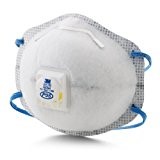 |
3M Particulate Masks See this page online for a wide selection of 3M N95 respirators. |
NOTE: N95 respirators are not designed for children or people with facial hair. Because a proper fit cannot be achieved on children and people with facial hair, the N95 respirator may not provide full protection.
NOTE: These masks may be made with all sorts of plastics and synthetic materials. Most are not suitable for people with MCS and some outgas air pollutants of their own.
There are quite a number of “N95” face masks on amazon in addition to the 3M models. Some descriptions don’t tell you what materials they are made from, others are decorative and don’t tell you the material used for filtration, some contain “an [unknown] antimicrobial agent that kills germs and lasts for the life of the mask.” Some are just cotton/polyester fabric with an antimicrobial…But none of these are FDA recommended.
If you need a dust mask, stick with a reputable brand that offers a mask that puts effectiveness first over style.
These masks will protect you from particles in smoke, but will NOT protect you from toxic gasses in smoke. They also need to be replaced frequently, depending on the concentration of particles in the air.
Face Masks for Smoke
We’ve been discussing the subject of face masks for smoke on this blog for quite some time, in the context of protection from exposure to cigarette smoke.
You can read the entire discussion at Q&A: Which Face Mask with Filter Cigarette Smoke?
The problem with smoke is that it contains toxic particles and toxic gasses and both need to be removed.
There are two face masks I am aware of that can protect users from smoke from any source and are designed to be safe for people with MCS.
 |
EnviroKlenz Breathing Mask
patented hospital-grade technology made from natural minerals neutralizes chemical gasses and particles |
|
 |
I Can Breathe Honeycomb Pollution Mask
Coconut shell activated carbon filter removes chemical gasses and particles |
Buy Here |
Respirators
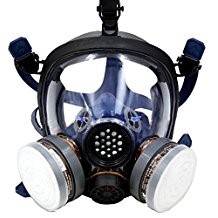 I just want to mention respirators. I’m not going to go into detail about them except to say that they exist. This is a post about face masks.
I just want to mention respirators. I’m not going to go into detail about them except to say that they exist. This is a post about face masks.
But I want you to know that heavy duty respirators do exist. They are especially designed for environments that have a high level of chemical gasses and are designed to hold replaceable cartridges.
Here is a list where you can see and compare some respirators.
Need Recommendation for Unscented Soap for Hand Washables
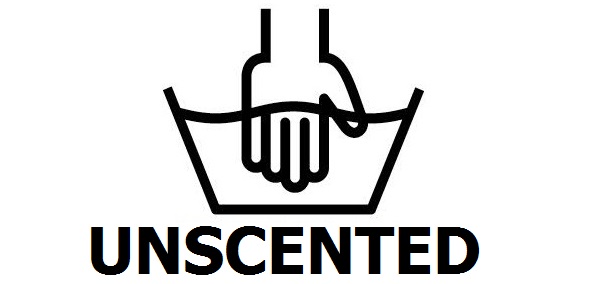
Question from Carol
Hi Debra,
What unscented soaps or detergents have canaries found tolerable to wash hosiery and hand washable delicates? I used to use the old formula ivory dish soap, but that has not been available for ages.
Debra’s Answer
Readers, what unscented soap for hand washables do you use and recommend?
How Do I Sanitize Rooms on Vacation?

Question from Zigzag
Hi Debra,
I just came back from a Airbnb/HomeAway/etc. mini-vacation. The place was heavenly and perfect in so many ways, but thoughts of germs, toxins, true cleanliness, etc. entered my head, not to be forgotten. What do you recommend to ensure adequate cleanliness but not over the top, vacation-spoiling obsessive?
Debra’s Answer
What about one of those products that use ultraviolet light in them.
Here are several different types:
Readers, any suggestions?
Biodegradable Plastic Bags

Question from Jim
My Most Dear Debra:
As I didn’t find it on your site nor the www, is the foul out-gassing smell of biodegradable as well as compostable plastic bags toxic?
I do thank you most kindly, Debra.
Debra’s Answer
Biodegradable plastics are the same petrochemical plastics engineered to break down more quickly.
So yes they could smell just as bad and be just as toxic.
Here’s an article that explains about bioplastics and biodegradable plastics.
Widespread Air Pollution From California “North Bay Firestorm” — And What I’m Doing to Protect My Health
On Sunday evening I went out to dinner with my family to a local restaurant. It was a pleasant evening and we sat on benches out in front of the restaurant quite comfortably while we waited for our table. When we walked out the door of the restaurant after dinner, there were gusts of wind so strong that I said, “A storm is coming!”
And then I remembered I was in California. In Florida, where I had been living for 15 years, this wind would mean I should go inside somewhere because very soon there would be a downpour with thunder and lightning. But this was California. There were few thunderstorms. But on Sunday night I was right. The winds created a firestorm.
Because of the winds, the fire spread quickly over a large area, with flying embers instantly igniting a dry landscape. Last I heard there are now 21 fires burning. There haven’t been enough firefighters. But firefighters and military from all over the country are being sent. Yesterday the firefighters numbered 8000. And still no containment.
While the winds carried the fires in the direction opposite from where I am living, the smoke from these fires has been terrible. I am only about 15 miles from the largest fires.
Outdoor Air Quality Warnings
Depending on where you live, you might not ever think about the quality of air outdoors. On my website, I focus on the quality of air inside homes and sources of unhealthy pollutants, but indoor air quality actually begins with outdoor air quality. I learned this many years ago when I and a friend created a nontoxic home for him in an area near downtown Oakland, California that had highly polluted outdoor air. Even though everything inside was perfectly nontoxic, he couldn’t live in the house because of the quality of the outdoor air. So I always start with the outdoor air quality when I am choosing a place to live.
But outdoor air quality is an issue in many places, so much so that our government has created the Air Quality Index to inform the public when outdoor air pollution reaches a level that can be harmful to health.
Local air quality affects how you live, how you breathe, and your health. Just like the weather, it can change from day to day and even hour to hour. So the US Environmental Protection Agency (EPA) and your local air quality management agency has made information on air quality as easy to understand as a weather report. And you’ll often see or hear this information as part of a weather report.
Air Quality Index
The Press Democrat newspaper reported “a monitor in Napa recorded an air quality index of 442 Monday morning, with a high of 292 in San Rafael.” By later in the day these areas measures 159 for Napa and 164 for San Rafael, showing the smoke moving away from the source fire and into the surrounding area.
On Monday at our house, which is about 15 miles from the fire, the sky was thick with smoke all day. Charred leaves were falling from the sky and ash was blowing continuously like snow. We stayed indoors as instructed but still the air smelled like smoke.
Larry and I went to sleep early but woke up around midnight. Larry was wheezing so badly that every exhale sounded like kittens mewing. I felt like I soon was not going to be able to breathe. With my interest in indoor air quality I always felt like even if the indoor air pollution was bad, I could always go outside and breathe. But now there was no clean air outside to breathe.
We got out of bed and drove for a half hour to Bodega, which is right on the Pacific Ocean. We opened all the windows of the car and breathed deeply the clean air. Fortunately, we were able to find a room at a lodge and could sleep through the night. But by morning the smoke had reached the ocean too.
This was now Tueday morning. We checked the television and found that the entire San Francisco Bay Area had the UNHEALTHY air index. We would have to drive for hours to get into clean air.
But our area is not the only place in California with smoke from wildfires. Cal Fire tracks all the fires in the state of California. Here’s the current map:

The Chemical Composition of Smoke
The exact composition of any sample of smoke depends on the material that is being burned. But in general, smoke—whether it comes from a cigarette or a house fire—is made up of particles and gasses. The type and amount of particles and gasses in smoke varies depending on what is burning, how much oxygen is available, and the burn temperature.
Particles are irritating, but gasses can be toxic.
I mention this because I am seeing people walking around wearing particle masks, which protect their lungs from particles, but not gasses.
CHEMICAL COMPOSITION OF WOOD SMOKE
| carbon monoxide | methane |
| VOCs* (C2-C7) | aldehydes |
| substituted furans | benzene |
| alkyl benzenes | acetic acid |
| formic acid | nitrogen oxides |
| sulfur dioxide | methyl chloride |
| napthalene | substituted napthalenes |
| oxygenated monoaromatics | total particle mass |
| particulate organic carbon | oxygenated PAHs |
| Individual PAHs | chlorinated dioxins |
| normal alkanes (C24-C30) | sodium |
| magnesium | aluminum |
| silicon | sulfur |
| chlorine | potassium |
| calcium | titanium |
| vanadium | chromium |
| manganese | iron |
| nickel | copper |
| zinc | bromine |
| lead |
The Health Effects of Breathing Smoke
According to the New York State Department of Health
Exposure to high levels of smoke should be avoided. Individuals are advised to limit their physical exertion if exposure to high levels of smoke cannot be avoided. Individuals with cardiovascular or respiratory conditions (e.g., asthma), fetuses, infants, young children, and the elderly may be more vulnerable to the health effects of smoke exposure.
Inhaling smoke for a short time can cause immediate (acute) effects. Smoke is irritating to the eyes, nose, and throat, and its odor may be nauseating. Studies have shown that some people exposed to heavy smoke have temporary changes in lung function, which makes breathing more difficult. Two of the major agents in smoke that can cause health effects are carbon monoxide gas and very small particles (fine particles, or PM2.5 ). These particles are two and one half (2.5) microns or less in size (25,400 microns equal an inch) and individual particles are too small to be seen with the naked eye.
Inhaling carbon monoxide decreases the body’s oxygen supply. This can cause headaches, reduce alertness, and aggravate a heart condition known as angina. Fine particles are able to travel deeply into the respiratory tract, reaching the lungs. Inhaling fine particles can cause a variety of health effects, including respiratory irritation and shortness of breath, and can worsen medical conditions such as asthma and heart disease. During increased physical exertion, cardiovascular effects can be worsened by exposure to carbon monoxide and particulate matter. Once exposure stops, symptoms from inhaling carbon monoxide or fine particles generally diminish, but may last for a couple of days.
Read also AIR NOW: How Smoke from Fires Can Affect Your Health
How to Protect Yourself From Smoke if You Live Near a Fire
On the first day of the fires, TV news shows told us tp stay indoors to avoid the smoke outdoors. But this doesn’t seem like enough to me.
Here are more things you can do:
1. If you can, drive somewhere else outside of the smoky area.
2. Get a face mask that filters both particles and gasses. Read this about choosing the proper face mask and how to use it correctly.
3. Run your HVAC system to filter air from outside. Recirculating air in your home for too long can reduce oxygen levels. Keep a supply of HVAC filters on hand so you can change them as needed. Check the filter daily to see if it needs to be changed while the outdoor air is smoky.
4. Use an air filter that filters out both particles and gasses.
How to Relieve Symptoms Caused by Smoke Inhalation
First, just drink a lot of water. I have a bottle of water with me and I’m sipping it all day. Smoke will really dry your body out, and your body needs even more liquid at this time.
A major problem from smoke inhalation is all the particles in the air clog the cilia, little “oars” in the respiratory tract, sinuses and lungs that move foreign materials through the system.
To clear the cilia, drink hot liquids. Hot liquids stimulate the cilia to move and this in turn can help get the mucus moving so you can swallow it or cough it up. This removes the mucus containing the contaminants from your respiratory system, where it can do further damage.
If you really are having trouble breathing, go to your nearest emergency medical facility. There they can give you oxygen, which is the standard treatment for smoke inhalation.
Larry and I did drive away from the smokey area when it became clear we were starting to have breathing difficulties. But then when the smoke came to where we were, we drove back to Sebastopol and got my air filter out of the storage locker and brought it home and set it up. And we both were able to breathe comfortably indoors and haven’t had any problems since.
PRODUCTS THAT CAN HELP REDUCE SMOKE INHALATION
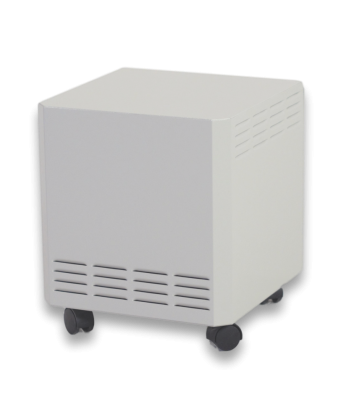 |
 |
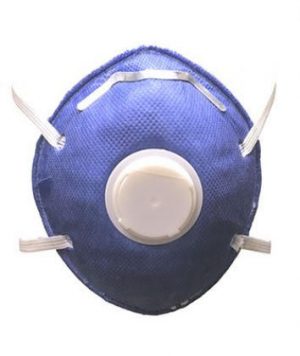 |
| EnviroKlenz Mobile Air System |
EnviroKlenz Mobile Unit UV Model |
EnviroKlenz Breathing Mask |
| HEPA filter for particles plus patenting hospital-grade technology that removes and neutralizes VOCs, bad odors, and fragrances. | EnviroKlenz Mobile Air System plus a UV light to inhibit the growth of captured bacteria, molds, and viruses | Removes both particles and toxic gasses that are present in smoke |
| More.. | More.. | More.. |
The Importance of Place for Health

I had this lettuce for lunch from the Sebastopol farmers market.
I’m so happy to finally be here in California after two days of packing the truck, seven days of driving, and two days of unpacking everything I own into a storage unit. But I’m here, the sale of my house has closed, and I’m ready to start a new life.
I still have much to do to set up my office and be able to get back on my regular schedule. I’m having a lot of connection problems with email and Internet access so if you have written to me and haven’t heard back from me or your email was returned that’s why. But I expect to be able to set up my usual desktop computer this week and start going through all the emails.
Please forgive my run on sentences and grammar errors today. I am dictating this into my iPhone and having to edit it on the small screen which is very difficult.
I have had some limited access to emails and received some questions so I want to tell you more about what’s going on in my life and where I am right now in California and why. Because I’ve really found that there is an enormous difference between where I was living in Florida and where I am living now and how I’m feeling and my overall happiness and health.
Larry and I have undertaken an enormous task of re-organizing our lives around ideas, abilities, relationships, experiences, adventures, and other such soul-satisfying interests rather than the pursuit of material goods. And so we have been simplifying our lives and reducing our possessions and now are in California continuing that process with things that Larry has accumulated over the years. With the goal being more freedom and lightness to make new choices about our life together.
I’ve been asked WHERE we are now living in California and WHY we moved there and WHY we left Florida. So I thought I would answer these questions today because I’m not yet set up to send you the usual newsletter.
First why we left Florida. Florida is a very difficult place for me to live. We moved there in the first place because there were things we wanted to do there and didn’t really realize how difficult it would be to live in that environment. It is extremely hot and humid most of the year, the winters are beautiful, and my life basically consisted of going from my air conditioned house to my air-conditioned car to an air-conditioned building. I could spend very little time outdoors and what time I did spend outdoors was mostly spent battling the many insects that were trying to bite me. And also trying to not be sunburned and collapsing from sunstroke. It was just a constant battle with the environment. When Larry and I got back together we both decided that we no longer wanted to live in Florida and he “brought me home” to California.
We are living with his family right now in Sebastopol California. It’s a lovely little town in Sonoma County about two hours north of San Francisco. It’s right on the southern edge of the wine country of Sonoma and Napa counties.
It’s about a half hour drive to the beach, the Pacific ocean, and we get that clean air as if we were right on the beach itself. The first morning we were here we looked out the window and the sky was gray. We were wondering if it was going to rain but there was no rain in the forecast. We were wondering why the sky was gray and then we remembered that fog comes in from the ocean on summer mornings and late afternoons and that the grey sky we were seeing was the fog. I have lived with his fog my whole life except for the 15 years I’ve just been in Florida and yet I had forgotten it until I actually got here. We are sleeping with the windows open and feel that gentle fog comes in in the morning and it’s so wonderful to wake up to that coolness against the warm summer mid days. After 15 years of close windows and air conditioning I am loving breathing this air that is so clean and alive with windows open and going for walks.
The water we have here at Larry’s family home is from a well and it is so delicious and so clean. It isn’t filtered tapwater it’s actually water from the earth. And I love this water I love to drink and I love to bathe in it it just is again alive.
 But the best part for me so far was this morning we went to the farmers market and it was an actual market with actual farmers. Everybody there had grown the food or prepared for the local food with their own hands or had tended the sheep and made something from the wool. At one stand I found celery root with the actual celery attached. You never see it this way in the supermarket but I could see and experience the whole plant. Another stand had about 10 varieties of apples that they grew on their farm and next week I’m going to go back and buy them all so that I could taste the different varieties next to each other and see which one I like best. The food was so beautiful and so vibrant and so abundant and this is the food we should be eating.
But the best part for me so far was this morning we went to the farmers market and it was an actual market with actual farmers. Everybody there had grown the food or prepared for the local food with their own hands or had tended the sheep and made something from the wool. At one stand I found celery root with the actual celery attached. You never see it this way in the supermarket but I could see and experience the whole plant. Another stand had about 10 varieties of apples that they grew on their farm and next week I’m going to go back and buy them all so that I could taste the different varieties next to each other and see which one I like best. The food was so beautiful and so vibrant and so abundant and this is the food we should be eating.
This is a farming community that we live in but it’s not an Agro business community it’s a community of small family farms many of them organic. I pointed out to Larry a sign that said “canning supplies – Apple press rentals.” And that for me summed up the town because people are growing apples are buying them from local farms and everybody’s making apple cider at home. And they all know how to make it along with twenty other things to do from the surplus of apples that are just falling off the trees here.
Downtown there are a number of shops of the usual times selling clothing and housewares and things like that but they’re all independently on and many of the products are made locally. And there are feed stores right now in town selling animal feed that and other things having to do with farm supplies. It’s so wonderful because it’s about Life here. It’s about the growing of things on the making of things rather than the buying of industrial consumer goods.
It’s also a community. As you drive down the street you see signs inviting you to the polenta and beef stew dinner or the lobster fest or the pancake breakfast. And all these are arranged so that neighbors can meet each other and get to know each other.
I had none of these things in Florida and my heart just aches for them. Because I have had all this before living in California. When I lived in the San Geronimo Valley everyone who lived in the whole valley had Thanksgiving dinner together in the community center, all potluck turkeys with all the sides.
I actually burst into tears at the farmers market today because this is so how we should be living. And Larry knew that and brought me here and didn’t let us stay in that environment of Florida. Here we are much closer to nature and much happier for it.
When we were in Florida we had difficulty sleeping and so of course we would look for natural things that we could take that would help asleep. But here we have no problem sleeping at all and part of that is because were outside doing things and walking around and when it’s time to sleep we’re ready to sleep. Larry says, “All we needed was a dose of ‘natural environment’.” And this makes me wonder how many things we think of as illnesses are simply lack of being connected to the earth and life and creating life. I’ve visited a woman who bought my needlepoint chair and she and her husband are out building cabins for their bed-and-breakfast restoring old buildings bringing pieces from different places and putting them together. That’s work. And at the end of the day you’re happy and tired and you’ve eaten good food from the farms and you sleep and your body feels good. It’s not about Healthcare it’s not about going to the doctor or a remedy. It’s about actually living the life that nature designed our bodies for.
This morning I ate something called a crane melon for breakfast. Local organically grown it was delicious it had its own wonderful flavor kind of a cross between a cantaloupe and honeydew melon. It was grown on a local farm and will never be found in a supermarket.
So this is where we are and this is what we’re doing. And we’ll see what happens next!
Lessons from Irma
This large tree was blown over by Irma just one block from my house. The roots came up entirely and broke the sidewalk curb.
This past week I went through an experience with hurricane Irma that could be called a “disaster.” And I just want to tell you about it because I learned a few things.
We were not hit directly, but if you were watching Irma on TV you know that the storm was so big that the entire state of Florida was affected one way or another.
In Clearwater, where I live, there was no damage to houses and buildings from the wind, but there was a lot of tree damage. In our yard, the hurricane blew out many of the small branches from the trees so there is much more light coming through the canopy (not a bad thing) and some branches came down, but that was it. Others were not so fortunate. Just in my neighborhood several large trees came down entirely and if houses were under them, the house was damaged from the tree falling.
There was just A LOT of debris from overhead trees. The morning after we were all out raking up the twigs and spanish moss, which was all over everything. We all have piles of debris and branches at our curbside waiting for the city to pick it up. When we went out yesterday we passed a very large vacant lot that the city is using to dump all this tree waste. There is just piles and piles and piles of it, so much that ours is still not collected as I write this on day 6 after the hurricane.
We had power and water throughout the hurricane and after. The power flashed on and off all night during the hurricane, but we were able to watch all the hurricane news on TV until we fell asleep at about 5 am. When we woke up the TV was dead and there was no internet or phone. But that was all.
Some of our neighbors, however, are still waiting for their power and internet-tv-phone service to be turned back on. Many are staying in local hotels because the 90+ degree heat is unbearable without air conditioning.
Life as we knew it stopped with the hurricane. We didn’t drive around on Monday, but walked around our neighborhood carefully, watching for downed power lines. On Tuesday we ventured out in the car, but there were no traffic lights so we didn’t go far. The streets were deserted. All the stores were closed. One man with a BBQ business was cooking BBQ on the sidewalk.
Slowly this week, businesses are coming back. We can drive around now because the traffic lights are restored. But even as of yesterday some businesses were still down because they didn’t have power.
And frequently we see caravans of repair trucks driving from one destination to the next to restore power and communications services. It takes time.
And I’m sure it’s like this all over Florida, if not worse.
I wanted to tell you this because you may have watched TV and thought that the situation was far worse. I learned a long time ago that the “news” is sensational. They want readers or viewers or listeners so they can sell advertising. They present what is happening in a dramatic way.
Lesson 1: A Disaster Doesn’t Have to Be a Disaster
The main thing I want to say about natural disasters like this is that they don’t have to be a disaster. The word “disaster” means “opposite of the stars” or something that is out of harmony with life. In fact, hurricanes are not disasters in and of themselves. They perform a vital function of temperature regulation on the planet. They are moving heat from the equator up north where it dissipates. Hurricanes are part of the whole system of nature.
The out-of-harmony part has to do with humans living in a way that is not in harmony with the hurricanes. A hurricane is a disaster only if you are living in a mobile home that will be blown away for sure, or in a flood zone. But even in a flood zone humans can keep a hurricane from being a disaster. In South Florida, for example, they have established building codes so new construction is required to be hurricane-proof. On TV once I saw a man who owns a restaurant in the Caribbean simply lift the floorboard up and hang the chairs on pegs on the wall so the flood waters could come in and not cause damage. He knew there were hurricanes and planned for them. He expected them and figured out how how to live in harmony. Hurricanes were not disasters for him.
When I moved to Florida I knew there was a possibility of hurricanes. And so I purchased a house on the highest hill so I would be out of the storm surge area. The entire city of Clearwater would have to be under water before my house would flood. And it’s also three feet above street level. This was a wise choice for this area. As fun as it might be to live on the beach, the beach is the first area to flood in a hurricane.
I also have learned enough about hurricanes that I can now predict what they will do. I knew exactly what would happen with Irma. I knew we would not be hit directly and that she would be weaker by the time she got to us. So I didn’t panic or board up my windows.
If you live in an area like Florida, where there are predictable natural occurrences, learn something about them so you can control the outcome of what happens to you when they occur.
Lesson 2: Cell Phones Are Lifelines
When power and wired communication services go down, I found that my lifeline was my cellphone. The cellphone service stayed on all during and after the hurricane. While I don’t like the EMF exposure, I love having a cellphone. The industry needs to improve this product to make it safer. Because it really is a good product.
With my cellphone I was able to text my friends and neighbors. I was able to Skype my assistant in the Philippines so she could send the email telling my readers I was OK. I could view news on the internet from my cell phone. I received a warning on my cellphone just before the high winds arrived during the hurricane.
My cell phone was my ONLY line of communication into the outside world until I got my internet-phone-tv back four days later.
The most striking thing for me about the hurricane was how it blew away all the communication between myself and my community. There was just no way to communicate except by cell phone or in person. It was good to experience that simplicity and find out what we would do together when there is no TV. But all the exchanges I have between myself and businesses and community groups was just gone for a few days, and I could see how much I rely on others to provide goods and services in my daily life. We take them for granted until they are not there. And now I see their value and really appreciate them being there.
Lesson 3: Cash is Vital
When the power goes down in a community, it’s down for individuals and businesses. I was surprised to see how many days it took for local businesses to get power back. But even if they have power, the banks might not have power yet.
On Friday Larry and I heard one of our favorite restaurants had opened. Fortunately I had cash because they couldn’t take credit or debit cards yet.
If you have cash, you can get things you need faster than waiting for ATMs and credit cards to come online. We’re so accustomed to electronic money now, but I keep cash for emergencies. And I was very happy I had it.
Lesson 4: Have Food and Water on Hand
As it turned out, our local natural food store opened a few days after the hurricane and they were able to get new supplies of food. But we were ready with about a week’s supply of food on hand.
We don’t have “emergency” food supplies. We always have a week of food available ahead.
Here’s a post I wrote about emergency food: My Idea of 72-Hour Emergency Food
We didn’t buy water in plastic bottles. We filled every glass bottle and jar we had with our own filtered water. And in the end we didn’t need it because we had a continuous supply of water.
Lesson 5: Stay Home if You Can
A reader wrote to me a couple of weeks ago asking about staying in shelters in a nontoxic way.
My thought is that it’s best to not go to a shelter unless you absolutely have to.
We stayed home. If I thought it was necessary to board the windows I would have. But I thought it wasn’t necessary and it wasn’t.
If I thought I needed to evacuate, I would have. But I didn’t think it was necessary and it wasn’t.
Starting a Toxic Free Journey

Question from Getting Started
Hi Debra,
I have three young children and I’m wondering. Where do I start? If you had to pick the top few items to start with what would it be? It’s an expensive journey to cut out toxins and I can’t really level my home and toss all we have so it’s about replacing for better as I can. What is your trip few picks? Mattresses? Pillows? Couch? Bras? Food?
Debra’s Answer
Many years ago I answered this question in a book called The Nontoxic Home. I set for myself the challenge of arranging the chapters in the order of putting that which is most important to change first in the beginning and going to least important. I found it was a very difficult task because you have to look at the relative toxicity of exposures from each product. It took me a while to figure this out, but I eventually came up with a sequence that made sense. This book is no longer in print but I pulled out an old copy.
Here’s what I recommended in The Nontoxic Home in 1986:
- Cleaning Products
- Household Pesticides
- Tap Water
- Drugs & Medications
- Personal Care Products
- Food
- Beds
- Clothing
- Home Office
But now that I know more, there are four things to consider, in this order:
- How toxic is the chemical you are being exposed to
- What amount are you being exposed to
- What is the route of exposure into your body: breathing, eating or drinking, through the skin
- How often are you exposed to the chemical
And so, you see, as a writer I can order toxic exposures by relative toxicity, but I can’t predict how much you will be exposed to, the route of entry into your body, or how often you are exposed to it.
That’s the problem in a nutshell.
However I do have two references for you that will help you make decisions about where to start.
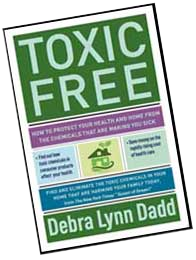 The first is my book Toxic Free. In my opinion, this is the best book I’ve ever written for a beginner. It starts by explaining the basics of the problem and then gives you 50 things you can do, in the order in which you should do them.
The first is my book Toxic Free. In my opinion, this is the best book I’ve ever written for a beginner. It starts by explaining the basics of the problem and then gives you 50 things you can do, in the order in which you should do them.
In this book from 2011, the list was a little different:
First I listed “The Big Five”: cigarette smoke, alcoholic beverages, drugs, household poisons and hazardous waste, toxics you track indoors on your shoes (leave them at the door, especially if you have babies or children playing on the floor). These exposures are so major there’s almost no point in doing anything else if you are still having these exposures (except for toxics tracked indoors on your shoes).
And then I listed
- Indoor Air Pollution: carbon monoxide, plastics
- Cleaning and Laundry Products
- Household Pesticides
- Tap Water
- Beauty and Hygiene Products
- Food
- Textile Products including mattresses and furniture
- Interior Decorating Products
- Home Office
 Toxic Free has basic instructions for making these changes, but you will find a lot more on this website.
Toxic Free has basic instructions for making these changes, but you will find a lot more on this website.
The other reference is a free ebook I made for a summit called The Toxic Free Lifestyle Checklist. This is much more barebones than Toxic Free but it gives you a good overview, in my recommended order.
Supreme Plastic for Sous Vide Cooking
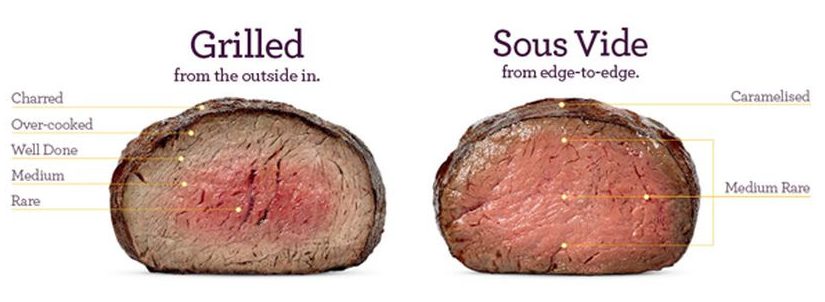
Question from Alexis
Hi Debra,
First of all I just wanted to thank you for sharing all your knowledge to the public regarding the toxins out there. I just love your site and I read it all the time.
My question is I just bought a sous vide supreme and had been using the plastic that came with the sous vide. The company said they had a third party test the plastic to make sure that there is not toxins that leaches out of the plastic while cooking.
I wanted to know what your thought about cooking with sous vide and the plastic. And is it safer if I use the Lekue silicon bag for my sous vide supreme or it’s okay to use the plastic that came with the product.
Thank you very much in advance for your help.
Debra’s Answer
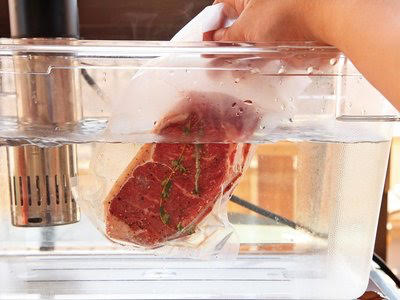 For those of you who are not familiar with sous vide, it is is the process of vacuum-sealing food in a bag, then cooking it to a very precise temperature in a water bath. This technique produces results that are impossible to achieve through any other cooking method.
For those of you who are not familiar with sous vide, it is is the process of vacuum-sealing food in a bag, then cooking it to a very precise temperature in a water bath. This technique produces results that are impossible to achieve through any other cooking method.
First, I wouldn’t eat food that has been put in a plastic bag of any time and then heated.
Second I wouldn’t use a plastic around food where the type of plastic is not disclosed. If they have tests, ask them to show them to you.
Silicone would be better than plastic but it just doesn’t make sense to me from a toxics viewpoint to add manmade materials to the cooking process. We should be eliminating plastics, not adding them.
I don’t like plastic baking bags either.
New Acrylic Bathtub

Question from Mike
Hi Debra,
I recently purchased a new acrylic bathtub.
When it was installed the smell was horrific. It filled the whole house and seemed to go into every fabric in the house, the drapes , carpet, clothes bedding towels etc. can anything be done to get rid of the smell other than getting rid of the bathtub.
should an acrylic bathtub smell this bad?
Debra’s Answer
That’s why I don’t recommend acrylic bathtubs.
I don’t know of anything that will stop the smell.
Readers? Anyone have any experience with this?
Chemical free window curtains & cellular blinds

Question from Cathleen
Hi Debra,
I need help ASAP.
I recently took down several sets of curtains in my home, and they all are severely off-gassing for days, no matter how many times I have washed them in vinegar, baking soda, hung them on the wash line, etc.
I have to give up, and try to order new window curtains & blinds.
I have tried Country Curtains in the recent past, and found this same type of chemical off-gassing after washing their 100% cotton Made in USA curtains & had to return them.
Can anyone suggest who I can safely order from? Thanks so much.
Debra’s Answer
Readers? I can recommend websites, but this reader needs to know your personal experience.
I’ve purchased 100% cotton curtains at Target in the past and have had no problem with them after one wash.
I’ve also purchased cotton curtains from IKEA with no problem.
Light of Day Organics
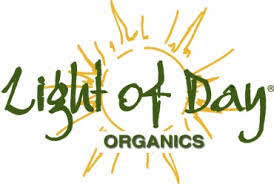 Award-winning teas and tisanes made with handpicked organic and biodynamic teas grown right here in Michigan USA, blended with home-grown flowers, herbs and fruit. ” Everything we sell is certified Organic and many offerings are also certified Demeter Biodynamic®, are Michigan-grown, and anything outsourced by partner farms is also certified organic and purchased using fair trade standards to support and honor the intense human effort that is required for tea harvest and production. 60% of all ingredients are grown right here. Our blending and packaging is done by hand right here in our farm’s commercial kitchen.”
Award-winning teas and tisanes made with handpicked organic and biodynamic teas grown right here in Michigan USA, blended with home-grown flowers, herbs and fruit. ” Everything we sell is certified Organic and many offerings are also certified Demeter Biodynamic®, are Michigan-grown, and anything outsourced by partner farms is also certified organic and purchased using fair trade standards to support and honor the intense human effort that is required for tea harvest and production. 60% of all ingredients are grown right here. Our blending and packaging is done by hand right here in our farm’s commercial kitchen.”
Made Simple Skincare
 Organic skin and oral care, created in small batches, bottled in glass. “Nothing but pure, active ingredients…raw, vegan, non-GMO…Made Simple Skin Care was founded with the idea that taking care of yourself is tantamount to taking care of others and the planet we all inhabit. That means starting from the soil to the seed to the plant and to you. What if high quality, natural skin products were not only luxurious in form and formula, but sustainable in principle? “We believe that if you take care of nature it will, take care of you.”
Organic skin and oral care, created in small batches, bottled in glass. “Nothing but pure, active ingredients…raw, vegan, non-GMO…Made Simple Skin Care was founded with the idea that taking care of yourself is tantamount to taking care of others and the planet we all inhabit. That means starting from the soil to the seed to the plant and to you. What if high quality, natural skin products were not only luxurious in form and formula, but sustainable in principle? “We believe that if you take care of nature it will, take care of you.”
Greenways Organic
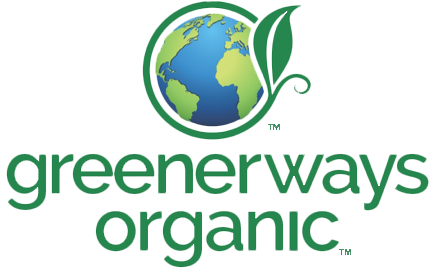 Insect repellants made from organic ingredients for body and garden. “Our USDA certified bottling facility ensures the formula remains in an unadulterated state, eliminating the need for additives that may lessen effectiveness and ensuring it remains a truly 100% organic product….Made from a DEET-free, non-toxic blend of organicplant-based essential oils, including citronella, lemongrass and cedar oil that are known for their natural bug repelling properties and safe use.
Insect repellants made from organic ingredients for body and garden. “Our USDA certified bottling facility ensures the formula remains in an unadulterated state, eliminating the need for additives that may lessen effectiveness and ensuring it remains a truly 100% organic product….Made from a DEET-free, non-toxic blend of organicplant-based essential oils, including citronella, lemongrass and cedar oil that are known for their natural bug repelling properties and safe use.
Cleo & Coco
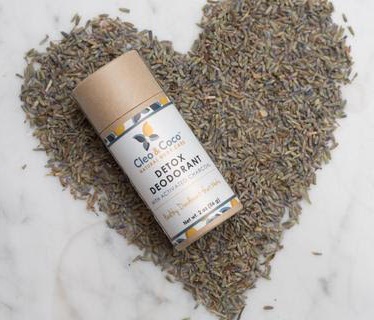 Detox deodorant and detox dust made of activated charcoal and bentonite clay “to remove bacteria and toxins and absorb wetness. Due to the detox benefits of these all-natural healthy ingredients, as well as due to eliminating antiperspirants and synthetic deodorants from your daily routine, after using your Detox Deodorant a few days, you will notice that you are naturally not as wet or have any BO, even on days when you forget to put on your Cleo&Coco DetoxDeo! This means that you have successfully detoxed your underarms…We use only organic activated charcoal from coconuts.” These products are scented with essential oils from vanilla, lavender and orange peel.
Detox deodorant and detox dust made of activated charcoal and bentonite clay “to remove bacteria and toxins and absorb wetness. Due to the detox benefits of these all-natural healthy ingredients, as well as due to eliminating antiperspirants and synthetic deodorants from your daily routine, after using your Detox Deodorant a few days, you will notice that you are naturally not as wet or have any BO, even on days when you forget to put on your Cleo&Coco DetoxDeo! This means that you have successfully detoxed your underarms…We use only organic activated charcoal from coconuts.” These products are scented with essential oils from vanilla, lavender and orange peel.
H is for Love
 There is a lot to read on this website about the purity of the plant ingredients and the very basic formulas that prove “nature is enough.” As an example I will just tell you about the Root & Berry Lip Glace, which I am going to try. There seem to be descriptions on one page and ordering on another, so if you want to buy and don’t see a shopping cart, go to “shop.” But this lip glace has “been formulated to nourish lips in much the same way the H IS FOR LOVE skincare line does. I chose to leave out pigments that weren’t specifically there to enhance the nourishing qualities of the gloss, and instead included roots, berries, and flowers that would color the oils naturally.” That is so in agreement with my own thinking. And then she went on to say how she was addicted to her department store lipstick. It was the same brand I was addicted to for the same reason. It took me so long to give it up because of the color and the feel. And then she made this glace and gave it up. “No more poison gloss for me!” she said. “H is for love is about sharing nature’s most wonderful gifts. Each ingredient is pure, every product made by hand to optimize quality and efficacy. Cruelty-free and almost entirely organic and wild-sourced, only natural preservation methods are employed. Designed with purpose and care, each element has already withstood the ultimate test: time.”
There is a lot to read on this website about the purity of the plant ingredients and the very basic formulas that prove “nature is enough.” As an example I will just tell you about the Root & Berry Lip Glace, which I am going to try. There seem to be descriptions on one page and ordering on another, so if you want to buy and don’t see a shopping cart, go to “shop.” But this lip glace has “been formulated to nourish lips in much the same way the H IS FOR LOVE skincare line does. I chose to leave out pigments that weren’t specifically there to enhance the nourishing qualities of the gloss, and instead included roots, berries, and flowers that would color the oils naturally.” That is so in agreement with my own thinking. And then she went on to say how she was addicted to her department store lipstick. It was the same brand I was addicted to for the same reason. It took me so long to give it up because of the color and the feel. And then she made this glace and gave it up. “No more poison gloss for me!” she said. “H is for love is about sharing nature’s most wonderful gifts. Each ingredient is pure, every product made by hand to optimize quality and efficacy. Cruelty-free and almost entirely organic and wild-sourced, only natural preservation methods are employed. Designed with purpose and care, each element has already withstood the ultimate test: time.”
Inspirational Story: Wheelys Cafe
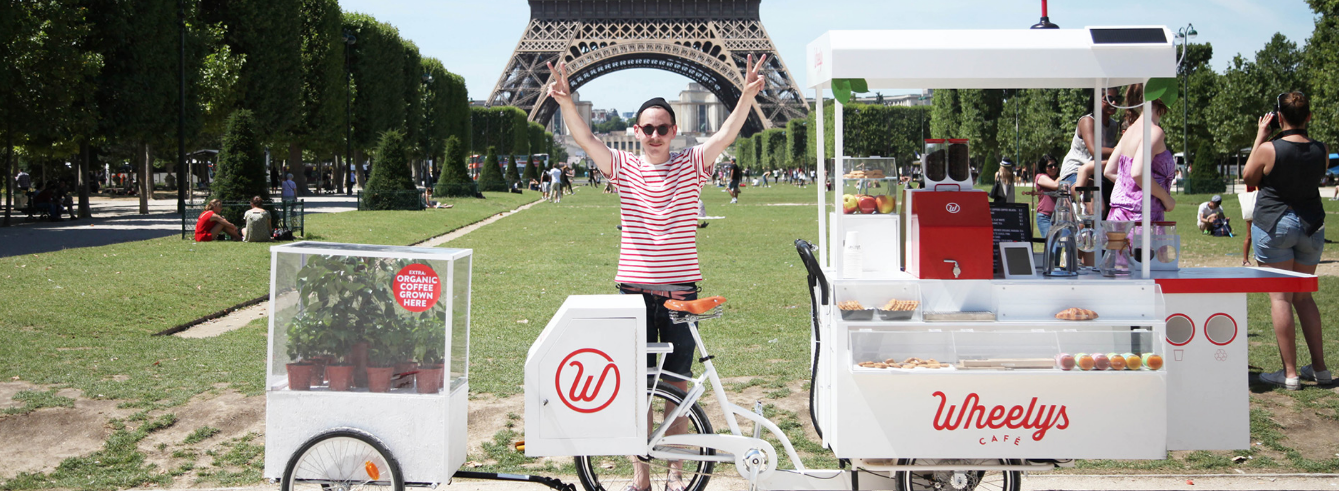
I saw this on a news feed while waiting in an office the other day and couldn’t resist telling you about it.
This business is a human-powered bicycle-cart cafe that sells organic coffee.
What a great idea!
And it’s catching on.
“Wheelys is a chain of organic bicycle cafés, enabling people (ALL people) to start their own businesses. Since launching in 2014, Wheelys has exploded over the world and currently operates cafés in more than 45 countries.”
What other creative ideas for toxic free living will appear next? What can you think of?
Haynes Fresh IQ
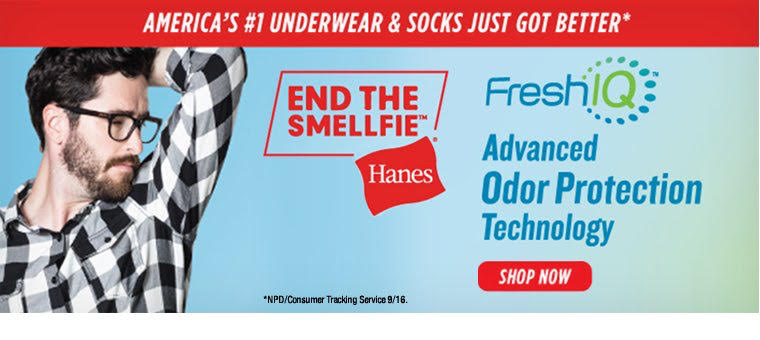
Question from Phil
Hi Debra,
I’ve noticed that Hanes underwear and socks all say FreshIQ on the packaging. It turns out that this a chemical applied to the fabric. I’m not sure what the chemical is, or if it’s even safe?
Debra’s Answer
I called Hanes and their customer service told me “there are no harmful chemicals, it’s just a mist that washes out after a few washings.”
So absolutely no information was forthcoming about what exactly this is, but according to Hanes it’s not even there any more after a few washings.
What To Do When You’re Stuck With Treated Carpet

Question from Beth
Hi Debra,
I refer often to your book and website and am eager for your tips on an issue keeping me up at night!
We have two small children and are currently stuck in a house where one floor has newish (2009 install) Berber carpet that has been treated for stain/water resistance.
I don’t let the kids walk barefoot in one room, and have covered the floors in the others with small area rugs, but cleaning these regularly is impractical. We’re not in a position to replace with wood or other.
I’d be so grateful for any ideas to keep them safer.
Do we know how long carpets treated for stain/water resistance can continue to “rub off” on skin? I’m guessing it’s likely the life of the product.
Thank you!!
Debra’s Answer
Yes, for the life of the product.
Foil will block any chemical fumes. While you can’t lay foil on a carpet and walk on it, there are products available that is foil sandwiched between two layers of nontoxic polyethylene plastic.
 Reflectix is the brand I have experience with. It’s made for insulation, but you could lay this over your carpet and it would 100% block any fumes. Then you could lay sheets or other fabric over the top to improve appearance.
Reflectix is the brand I have experience with. It’s made for insulation, but you could lay this over your carpet and it would 100% block any fumes. Then you could lay sheets or other fabric over the top to improve appearance.
Not the most beautiful solution, I know, but it will block any outgassing.
That said, a carpet from 2009 may have little outgassing. You may want to make pads of reflective for them to play on rather than doing the whole room. I would minimize skin contact.
Toxic Chemicals Found in Tattoos
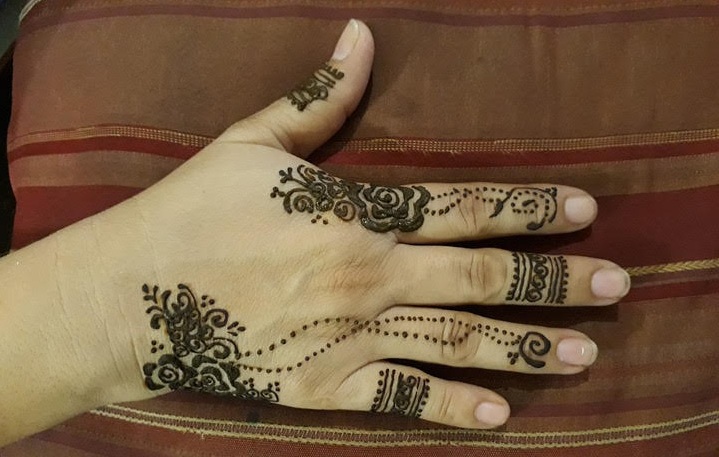
A comprehensive discussion of toxic ingredients found in tattoo inks was recently published in GreenMedInfo.
It’s very technical, written in scientific language and well-documented, but full of information on the possible health effects of injecting colored inks into your skin.
Henna tattoos were not mentioned as a safer alternative method for body art.
GREENMEDINFO: Toxic Chemicals Found in Tattoos: Links to Autoimmune and Inflammatory Diseases
Pesticide Exposure at the Pumpkin Patch?

Question from Jo
Hi Debra,
Can I get your advice on this? You’re the only one on the web, that I actually feel that is so knowledgeable and honest!!
So daughter just turned 4 years old, and her teacher has planned a trip to the farm that has a pumpkin patch and petting zoo. I called the farm and they use an IPM program, but say they will use pesticide spray when needed. So they aren’t fully organic, but they call themselves sustainable.
I worry that my daughter can touch the pumpkins or anything with residue and they will be eating lunch there, so that’s hand to mouth.
Would you recommend me sending her or maybe keeping her home. I’ve had 2 aunts pass away from childhood leukemia, and I know there’s a link with pesticide.
I worry so much, but I really don’t want to bother the teacher. I’ve already haggled her about shutting their ionic (Plasma) air conditioner off and just running the air conditioner without using the ionic function. (She’s probably so annoyed with me by now) hahaha
Any assistance would be WARMLY appreciated! 🙂
Debra’s Answer
You actually don’t need to worry about this. One exposure to pesticides doesn’t make that much of a difference. Since they are IPM they may not even have sprayed. Let her go and have fun.
There was actually a study that showed if children ate 100% organic for only three days, all the pesticide residues were gone from their bodies. The problem is eating non-organic food every day. Then your child’s body is full of pesticides on an ongoing basis. But it takes only three days to clear.
I eat almost 100% organic at home, but I also travel and then I eat as much organic as I can, but 100% is difficult. I’m about to drive cross country for 9 days from Florida to California and I’m already scoping out restaurants that serve organic food and places where I can buy organic food enroute. We’re going to bring some food with us too.
While certainly there are what are called “acute” exposures that could kill you immediately (this is why we have poison control centers), but for what are called “cumulative” exposures, such as pesticide residues, it’s what you do most of the time that counts. Feed your daughter organic at home and what pesticide residues she may encounter elsewhere will leave her body quickly.
All that said, please don’t misunderstand me. Pesticides ARE toxic. Don’t spray your daughter with pesticides thinking they are safe. But occasional RESIDUES…I’m of the opinion that pleasure in life contributes to health and sometimes we need to weigh the benefit with the risk.
I’ve been to pumpkin farms and I haven’t experienced them to be a place I need to avoid.
I’m flying on an airplane this week. That’s a lot more toxic. And at the other end I’ll eat in an organic restaurant.
Holland Bowl Mill
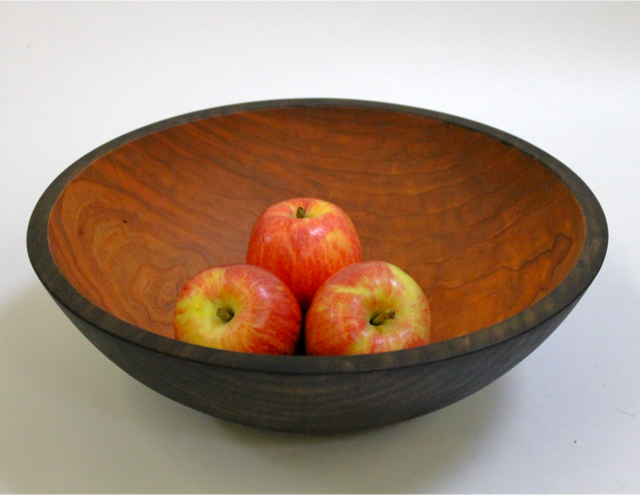 Wooden bowls of all sizes, made from a variety of different woods. They also have a unique treatment for the wood called “ebonizing” which is the use of a vinegar and iron solution that turns the wood black. These bowls are quite beautiful with black on the outside and the natural wood on the inside. They also make a whole series of nesting bowls from one block of wood. You can special order a whole set of these nested bowls if you want, though it’s not an item on the website. Bowls are finished with food grade mineral oil, but you can also order them unfinished. They also make live edge bowls!
Wooden bowls of all sizes, made from a variety of different woods. They also have a unique treatment for the wood called “ebonizing” which is the use of a vinegar and iron solution that turns the wood black. These bowls are quite beautiful with black on the outside and the natural wood on the inside. They also make a whole series of nesting bowls from one block of wood. You can special order a whole set of these nested bowls if you want, though it’s not an item on the website. Bowls are finished with food grade mineral oil, but you can also order them unfinished. They also make live edge bowls!
Masontops
 Great lids for your Mason jars to make them more useful. Chalk Tops let you label and relabel the lids, Timber Tops let you top your jars with bamboo wood instead of metal, and then there are all kinds of tools and instructions for fermenting vegetables in your Mason jars.
Great lids for your Mason jars to make them more useful. Chalk Tops let you label and relabel the lids, Timber Tops let you top your jars with bamboo wood instead of metal, and then there are all kinds of tools and instructions for fermenting vegetables in your Mason jars.
Earth Stix
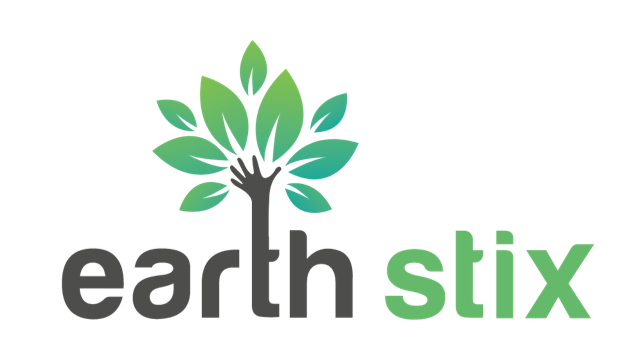 Disposable wooden cutlery made from all natural birch wood. “Our stylish and sustainable Earth Stix are the perfect fit for use at parties, campouts, weddings, and the like. Earth Stix can be used for traveling, packed meals, picnics, and more. ”
Disposable wooden cutlery made from all natural birch wood. “Our stylish and sustainable Earth Stix are the perfect fit for use at parties, campouts, weddings, and the like. Earth Stix can be used for traveling, packed meals, picnics, and more. ”
Unfinished Furniture Expo
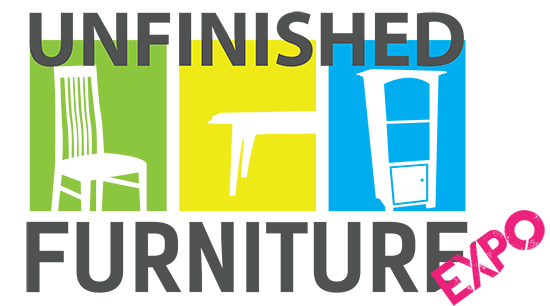 Unfinished furniture in more styles than I usually see on unfinished furniture websites. Check this site to find something different. Search by type of furniture and also by style. “At Unfinished Furniture Expo, you can find an assortment of furniture pieces, all made with a variety of wood. The pieces include tables, table pedestals, table tops, chairs, dining tables, coffee tables, kitchen furniture, beds, headboards, entertainment centers, desks, bookcases, bookshelves, and even chairs and tables for children. These pieces can be found in alder, birch, pine, parawood, and oak. We offer all of our pieces as discounted unfinished furniture, inclusive of free shipping on orders over $39.”
Unfinished furniture in more styles than I usually see on unfinished furniture websites. Check this site to find something different. Search by type of furniture and also by style. “At Unfinished Furniture Expo, you can find an assortment of furniture pieces, all made with a variety of wood. The pieces include tables, table pedestals, table tops, chairs, dining tables, coffee tables, kitchen furniture, beds, headboards, entertainment centers, desks, bookcases, bookshelves, and even chairs and tables for children. These pieces can be found in alder, birch, pine, parawood, and oak. We offer all of our pieces as discounted unfinished furniture, inclusive of free shipping on orders over $39.”
Organic Mattress encasement for Dust Mites

Question from Sherry
Hi Debra,
Per your recommendation, I have purchased a Naturepedic mattress and want to find a mattress encasement to protect the mattress and prevent dust mites. Can you please recommend a mattress encasement.
I see that Naturepedic offers a waterproof mattress pad, but it does not encase the entire mattress. Also, I can concerned about the Naturepedic mattress protector because it has a layer of polyurethane for its waterproofing. I have recently learned that polyurethane foam is toxic and am in the process of trying to remove it from my house. Should I be concerned about the polyurethane in Naturepedic’s mattress pad? Thank you again for all of your help and support! You are an inspiration!
Debra’s Answer
Polyurethane itself is NOT toxic, polyurethane FOAM is toxic because of other chemicals added to it to make foam and to make it fireproof. So no problem with the very thin membrane of polyurethane in Naturepedic’s mattress protector pad.
Here are some recommendations for mattress encasements that protect against dust mites. They are not waterproof.
THE CLEAN BEDROOM Organic Cotton Dust Mite Mattress Encasement
JANICE’S Organic Cotton Barrier Cloth Mattress Covers
JANICE’S Organic Cotton Mattress Covers
Toxicity of 3D Printing

You may have heard of a new type of printing called “three-dimensional (3D) printing.” Instead of printing ink on a piece of paper or plastic, the 3D printer actually makes a three-dimensional object. These printers are now available for home computers (starting at only $283), so you can now manufacture virtually any shape for any use right in your own home.
When I first saw this on TV several years ago, once I got over my disbelief my first question was, “What material are they using to make these objects and is it toxic?
Recently others have been asking this question too, and there is starting to be some research results to look at.
The majority of desktop 3D printers designed for the consumer market use a technology called fused filament fabrication (FFF), also known as molten polymer deposition (which sounds more descriptive to me). In this process, a slender thread of solid thermoplastic is melted and deposited in thin layers onto a moving bed. The three-dimensional solid shape is formed layer-by-layer as the plastic material cools and hardens. That makes logical sense to me, but the first time I saw it, it looked like magic.
A wide variety of filament materials are now being used in desktop FFF 3D printers, including
- acrylonitrile butadiene styrene (ABS)
- poly(lactic acid) (PLA)
- poly(vinyl alcohol) (PVA)
- polycarbonate (PC)
- high-density polyethylene (HDPE)
- high-impact polystyrene (HIPS)
- nylon
- and many other polymers, metals, ceramics, and other materials.
Filaments are melted at a variety of extruder nozzle temperatures and bed temperatures, and manufacturers typically recommend ranges of optimal temperatures for each filament material and thickness. These varying temperatures affect the amount of volatile organic chemicals (VOCs) and particles that might be released from the materials as well as their toxicity.
Two studies have generated quite a lot of data on this subject, which I’m not going to attempt to summarize here.
I just do want to mention that one study identified gasses that were released, which included ammonia, cyanidric acid, phenol, and benzene, among others.
Overall, lab tests showed that ABS is significantly more toxic than PLA, but the corn-based PLA had it’s own emissions when extruded at temperatures higher than 392 degrees F. This is important to note because there are many finished consumer products made from PLA that would not have emissions because they are at room temperature.
It was also noted that the same material spools, when acquired from different resellers, release very different quantities of VOCs, even if used in the same 3D printer and under the same parameters of speed and temperature. So there is a wide variation of air pollutants that could be present as the result of using a 3D printer.
Health effects mentioned were pulmonary problems, such as bronchitis, tracheitis, and asthma. In some cases, outgassing substances were known cause certain types of cancers.
Researchers recommend using 3D printers in a well-ventilated area.
3D PRINTING INDUSTRY: How Toxic are ABS & PLA Fumes?
3D PRINTING INDUSTRY: Gas evolution during FDM 3D printing and health impact
Color Kitchen
 “Naturally vibrant food colors…artificial dye-free, plant-based, vegan, gluten-free, and non-GMO,” developed by a woman who has long suffered from food allergies and chemical additives in products.
“Naturally vibrant food colors…artificial dye-free, plant-based, vegan, gluten-free, and non-GMO,” developed by a woman who has long suffered from food allergies and chemical additives in products.
Glob Color
 “Artists have been using fruit, vegetable, and herb pigments to mix paint since ancient times. Glob channels that age-old method with vibrant paints that yield bright and beautiful colors when mixed with water.” Watercolor paints and non-nano face paint. Watercolor and face paints make with plant pigments. ” Glob paints are made from food-grade ingredients, so they are as safe as possible for little ones to play with.” They also sell ColorKitchen “naturally vibrant food colors…artificial dye-free, plant-based, vegan, gluten-free, and non-GMO,” developed by the same woman.
“Artists have been using fruit, vegetable, and herb pigments to mix paint since ancient times. Glob channels that age-old method with vibrant paints that yield bright and beautiful colors when mixed with water.” Watercolor paints and non-nano face paint. Watercolor and face paints make with plant pigments. ” Glob paints are made from food-grade ingredients, so they are as safe as possible for little ones to play with.” They also sell ColorKitchen “naturally vibrant food colors…artificial dye-free, plant-based, vegan, gluten-free, and non-GMO,” developed by the same woman.
Eco-Kids
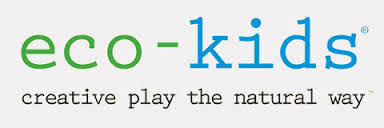 A family run business that produces
A family run business that produces
a line of art supplies that gives children the tools to create using non-toxic, natural ingredients and environmentally friendly packaging. Eco-dough, eco-finger paint, eco-egg coloring, eco-crayons and more are made from all natural ingredients. Dyes are FDA-approved natural dye. Paints are colored with natural and organic fruit, plant and vegetable extracts from annatto seed, blue shade vegetable, curcumin, purple sweet potato, red cabbage, rice flour, earth clay. These products are sold in many stores as well as online.
Filana Organic Beeswax Crayons
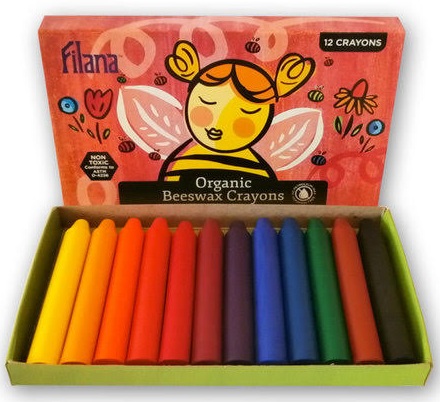 “Awesome crayons” made with “lots of organic beeswax…Filana™ crayons are made with natural waxes and over 25% certified organic beeswax. We never use petroleum waxes or paraffin. All our ingredients are GMO free. Filana™ crayons contain a special blend of organic and natural petroleum-free waxes, FDA-approved organic and inorganic pigments, and kaolin clay. Filana™ crayons conform to ASTM D-4236 standard, which indicates Filana™ crayons are certified nontoxic and meet or exceed specific quality standards. Filana™ crayons are CPSIA compliant. They have been tested by an independent laboratory and are certified to be compliant with the the CPSIA (Consumer Product Safety Improvement Act). Each one of our crayons is hand-crafted in Langley, Washington. Our crayons are 100% made in the US.”
“Awesome crayons” made with “lots of organic beeswax…Filana™ crayons are made with natural waxes and over 25% certified organic beeswax. We never use petroleum waxes or paraffin. All our ingredients are GMO free. Filana™ crayons contain a special blend of organic and natural petroleum-free waxes, FDA-approved organic and inorganic pigments, and kaolin clay. Filana™ crayons conform to ASTM D-4236 standard, which indicates Filana™ crayons are certified nontoxic and meet or exceed specific quality standards. Filana™ crayons are CPSIA compliant. They have been tested by an independent laboratory and are certified to be compliant with the the CPSIA (Consumer Product Safety Improvement Act). Each one of our crayons is hand-crafted in Langley, Washington. Our crayons are 100% made in the US.”
$417 Million Awarded in Baby Powder Suit—Talc Connection to Cancer
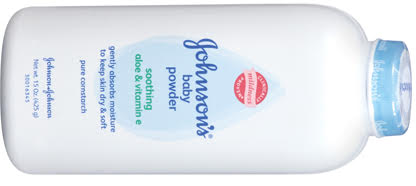
On Monday a Los Angeles jury ordered Johnson & Johnson to pay $417 million in damages to a woman who developed ovarian cancer after using their trademarked baby powder for decades.
Many women use baby powder in their genital area for the same reason it’s used for babies.
Studies linking talc to cancer date back to 1971, when particles of talc were found embedding in ovarian and vertical tumors.
In 2006 the International Agency for Research on Cancer classified talcum powder as a possible human carcinogen if used in the female genital area. No efforts have been made to remove this product from the market or require warning labels.
Talc is a naturally occurring clay mineral composed of magnesium and silicon. It occurs in proximity to asbestos. While talc itself does not cause cancer, it is often contaminated with bits of asbestos. a known human carcinogen.
If you use baby powder, choose a brand made with cornstarch or other ingredients instead of talc.
THE NEW YORK TIMES: $417 Million Awarded in Suit Tying Johnson’s Baby Powder to Cancer
Women of Color Exposed to More Toxic Chemicals in their Beauty Products than white women
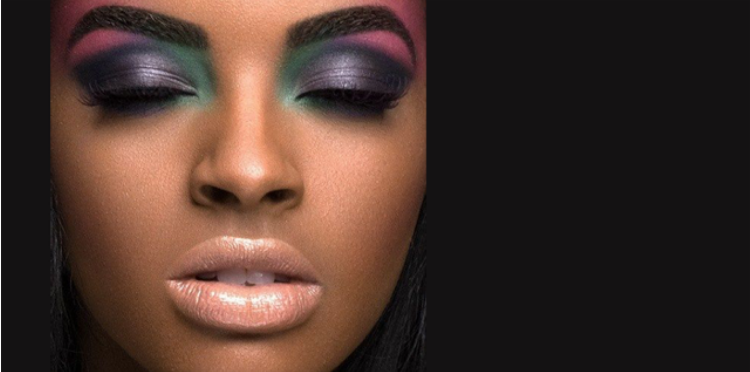
According to a commentary published last week in the American Journal of Obstetrics and Gynecology, women of color have higher levels of chemicals in their bodies related to exposure through beauty products than white women. The authors say even small exposures to these toxic chemicals can lead to health problems.
“Pressure to meet Western standards of beauty means Black, Latina and Asian American women are using more beauty products and thus are exposed to higher levels of chemicals known to be harmful to health,” says Ami Zota, ScD, MS, an assistant professor of environmental and occupational health at Milken Institute School of Public Health (Milken Institute SPH) at the George Washington University.
Mercury in Processed Foods and Other “Indirect Additives” in Manufactured Food Products
This week a video arrived in my email inbox about a study in which mercury was found in a number of processed foods contain high fructose corn syrup.
They don’t intentionally add mercury to high fructose corn syrup, but it is an “indirect additive” that enters food as a result of processing natural corn into the industrial product high fructose corn syrup.
Watch this video for more about mercury in high fructose coren syrup
But mercury isn’t the only indirect additive found in processed foods.
The US Food & Drug Administration (FDA) has a whole of indirect additives at
List of Indirect Additives Used in Food Contact Substances
You can view the list of 3227 chemicals that are allowed in processed food products at the above link, and also search on chemicals you know to see if they are on the list. Formaldehyde is on the list, and so are styrene, phthalates, polyurethane resins, and many more chemicals we know to be toxic.
And none of these indirect additives are required to be on the packaged food label.
According to the FDA:
indirect food additives…are substances used in food-contact articles, and include:
- adhesives and components of coatings (Part 175)
- paper and paperboard components (Part 176)
- polymers (Part 177) and
- adjuvants and production aids (Part 178).
In general, these are substances that may come into contact with food as part of packaging or processing equipment, but are not intended to be added directly to food.
Additional “indirect” additives that are effective as part of the food contact substance notification program or that are exempted from regulation as food additives in accordance with 21 CFR 170.39 “Threshold of Regulation (TOR) exemptions for substances used in food-contact articles.” are listed in separate inventories.
This is why we need to grow or purchase our own raw foods and prepare them ourselves at home. Doing so eliminates all these indirect additives that enter foods through industrial processing.
YOU CAN’T ESCAPE MERCURY. THAT’S WHY I DETOX FOR MERCURY EVERY DAY.
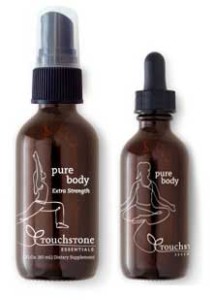
Mercury is in many products we use every day and even in the outdoor air. We can’t escape it. So it’s likely that your body has built up a store of mercury and possibly other heavy metals that could be affecting your health.
Once mercury and other heavy metals enter your body, it is very difficult for your body to remove them.
That’s why I take PureBody Liquid Zeolite every day. This natural mineral is uniquely suited to remove heavy metals. Tiny bits of negatively-charged zeolite act like little magnets to attract positively-charged particles—which include 99.9% of heavy metals, radiation, and organic chemicals–so they can be removed from your body via your kidneys. It’s simple, effective, and affordable.
Is It Toxic to Eat Off Depression Glass?
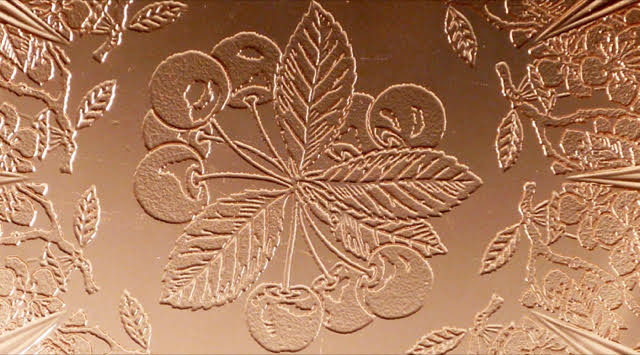
Question from TA
Hi Debra,
I’m wondering if you’ve ever looked into whether “Depression glass” is toxic to eat off of.
I have a set that was gifted to me years ago; it was a collection that was built up over time, just as a collection, not for actual use.
I am now wondering whether it is okay to eat off of, so I just did an internet search and feel unclear about the answer.
The answers from people who sell and collect depression glass is that it is safe; they mention uranium in some colors, arsenic in others…but it’s safe they say because it’s a tiny amount, it’s bound up in the matrix of the glass, and so forth.
Hmm. That also doesn’t really answer anything about my actual collection, which is pink.
But what concerns me more is whether there is lead in it. I found some info about there being two options in depression glass production — one containing lead and one not (but this no-lead option might have contained other undesirable ingredients).
Of course I would avoid lead crystal, but that doesn’t appear to be what they’re talking about in some instances, and it’s not clear to me whether other colors might have also contained lead to add to the clarity of the glass.
So overall it left me confused, and I just wondered if you’ve looked into this and can tell me anything definitive.
I don’t want to trash it without knowing anything for sure, given that it was a gift and it’s lovely to look at. But of course I don’t want to eat off of it — or donate it to Goodwill or sell it — if it contains lead or is otherwise harmful. If it were one cheap saucer or something I’d just throw it out (I’ve generally done that when it’s something I’m not sure about and don’t want to send it to Goodwill to lead-poison someone else’s child); but it’s a whole set and a collectible, so I’d rather know something before just getting rid of it.
Debra’s Answer
My general rule is when in doubt, err on the side of caution.
It may be true that there is so little uranium or arsenic in the glass that it’s not a problem. But the other side of the coin is not a problem for who? Age and body size can make a difference in how toxic it is to an individual person as well as the condition of their detox system and the health of their body as a whole.
Short of having the pieces analyzed for their content, we really don’t know if the glass contains something to be concerned about.
We do know from lead crystal that minerals can leach out of glass into food and then into bodies when the food is eaten.
Myself, I wouldn’t eat off depression glass, but wouldn’t have a problem keeping it to enjoy it’s beauty.
Crystal Vases and Bowls
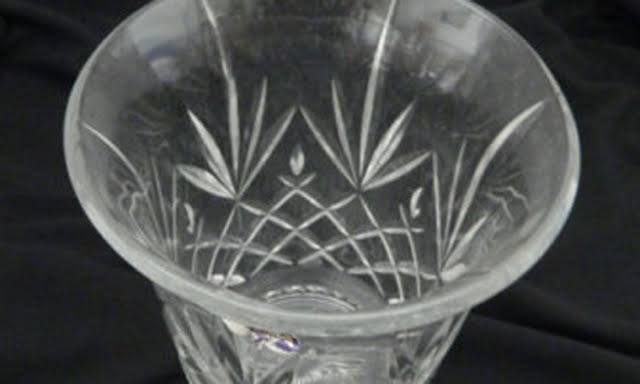
Question from TA
Hi Debra,
I know that lead crystal is harmful in that one shouldn’t eat or drink from it. But is there any concern about having it in the house in general?
For instance, if there is a vase or decorative bowl, could a person end up with lead on their hands from handling it, or could dust end up with lead in it?
I know that this can happen if a person is handling dishware that has lead glaze, for example, but I’m wondering if it’s the same for something like lead crystal, or is the lead more embedded or something, so that it doesn’t transfer?
I have some that was gifted to me years ago, and it isn’t really in use in my home so I thought of giving it away or selling it as part of a decluttering process. But similar to my other question about depression glass , I don’t want to give away or sell something that could be harmful to another household; but if it’s safe for general use (decorative, really), I’d rather give or sell rather than throw it out.
I also have a set of crystal candlestick holders for taper candles; those could potentially end up on someone’s dinner table which makes the question more important. Of course, I really don’t know what the end use would be if I did sell it, so perhaps it is better to just throw it out so that no one could be unknowingly poisoned if they aren’t aware of the issues (if there is in fact an issue with this type of decorative items). I just hate to throw out a beautiful heavy vase and these other items if it’s safe to use them for those purposes.
Debra’s Answer
Lead is a particle and it does not outgas from glass in the same way a vapor outgassed from plastic. So lead crystal sitting on a table has no danger at all.
Also, you can handle lead and it is not absorbed through the skin.
But lead does leach out of glass into liquids and foods, then you can be exposed to lead through eating the food or drinking the liquid.
There are other exposures to lead, but this is the answer to your specific question.
Craft Beer Brewers Consider the Effects of Beermaking
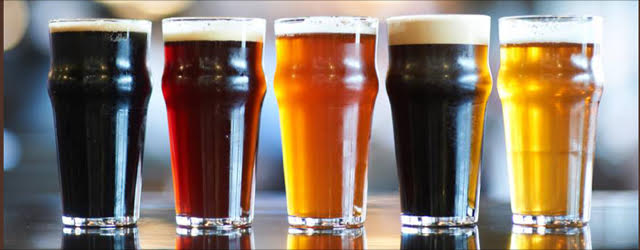
I read an interesting article about how and why craft beer brewers are finding “innovative ways to guard the water, soil, air and climate on which their businesses depend.”
Well, right there is something different than usual. We don’t often see the producers of products consider the environment on which their businesses depend. If this were common, our environment would be pristine.
Katie Wallace, assistant director of sustainability at the New Belgium Brewing Company says, “I ride my bike across the bridge every morning to the brewery. Underneath that bridge is the river that provides the water for our beer. We’re very connected to the resources that provide for us.”
This article outlines many things craft brewers are doing to protect the integrity of the environment from which their ingredients come. This is a great example for all industries.
New Study Shows People Would Buy Green Products—If They Had Enough Information

A new study, published in the Proceedings of the National Academy of Sciences, notes that Internet-based companies have the opportunity to help the environment if they would just tell consumers about their environmentally friendly choices.
Researchers found that consumers are willing to make climate-friendly choices when the options are available to them. Carbon footprints of products and services are often known to companies, but are not made known to consumers.
In experiment after experiment, consumers chose the green products when the information on the products was available to them.
I’m posting this study here because the same applies to companies providing information to consumers about how toxic or nontoxic their products are.
I just am having an experience this week with a website that is selling a product that appears to be nontoxic but there are no ingredients. An email asking directly for the ingredients produced a reply, but no mention of ingredients.
It shouldn’t be that hard to get information about products. This study shows that consumers are interested in having information so they can make informed choices.
THE WASHINGTON POST: People would buy green products – if only e-commerce showed them how
Stubby Pencil Studio
 “Looking for the most safe, non-toxic and creative art supplies for kids? Here’s where you start!…We have a passion and commitment to sourcing non-toxic art supplies for children…a wide selection of art materials that are healthy for children, toddlers, families and the environment…biodegradable crayons made from soy (not petroleum), sketchbooks made from 100% post-consumer recycled paper (not virgin trees), pencils made from sustainably harvested wood and recycled newspapers (not dying forests), natural paints made from fruits & veggies, and more… “ They have crayons, chalk, clay and dough, colored pencils, paints, markers, rubber stamps and ink, paste and glue, and more. But read descriptions carefully and choose wisely. Their criteria is nontoxic OR eco-friendly, so scented pencils made from recycled newspapers qualify, but I don’t recommend the artificial fragrance. Lots of nontoxic art supplies though, all in one place.
“Looking for the most safe, non-toxic and creative art supplies for kids? Here’s where you start!…We have a passion and commitment to sourcing non-toxic art supplies for children…a wide selection of art materials that are healthy for children, toddlers, families and the environment…biodegradable crayons made from soy (not petroleum), sketchbooks made from 100% post-consumer recycled paper (not virgin trees), pencils made from sustainably harvested wood and recycled newspapers (not dying forests), natural paints made from fruits & veggies, and more… “ They have crayons, chalk, clay and dough, colored pencils, paints, markers, rubber stamps and ink, paste and glue, and more. But read descriptions carefully and choose wisely. Their criteria is nontoxic OR eco-friendly, so scented pencils made from recycled newspapers qualify, but I don’t recommend the artificial fragrance. Lots of nontoxic art supplies though, all in one place.
Fabricadabra
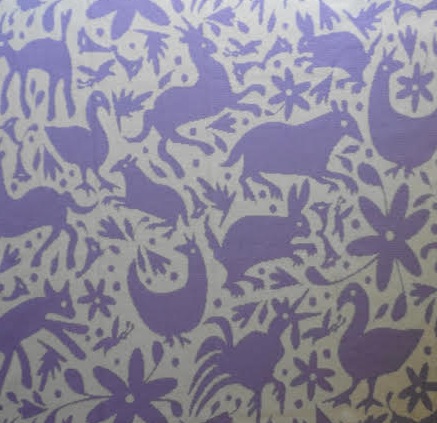 This is basically a pillow website, but they also sell fabric by the yard, throws and bedcovers, pillow inserts, and floor cushions. “…made only from natural, non-toxic fabrics. Globally inspired throw pillows include ikats, suzanis, wax prints, organic cotton, vintage, batiks, indigo cloth and tie-dyes. The fabrics are woven only from natural, non-toxic fibers, using mostly ancient techniques and low impact dyes. A story, a person and a culture are behind every fiber. Most decorative pillow cover fabrics are woven on handlooms and the artisans are paid fair wages for their skills. Decorative pillow inserts are made with kapok fiber filling and organic cotton shells. Kapok fiber is natural, organic, pesticide free, non-allergenic, mold and mildew resistant, lightweight, odorless, silky, sustainable, washable and non-toxic. All inserts are made in the U.S.A.” And I have to mention colorful vintage sari parasols that are a must if you live in a sunny climate. This site is ALL about natural fiber fabrics and doing creative things with them.
This is basically a pillow website, but they also sell fabric by the yard, throws and bedcovers, pillow inserts, and floor cushions. “…made only from natural, non-toxic fabrics. Globally inspired throw pillows include ikats, suzanis, wax prints, organic cotton, vintage, batiks, indigo cloth and tie-dyes. The fabrics are woven only from natural, non-toxic fibers, using mostly ancient techniques and low impact dyes. A story, a person and a culture are behind every fiber. Most decorative pillow cover fabrics are woven on handlooms and the artisans are paid fair wages for their skills. Decorative pillow inserts are made with kapok fiber filling and organic cotton shells. Kapok fiber is natural, organic, pesticide free, non-allergenic, mold and mildew resistant, lightweight, odorless, silky, sustainable, washable and non-toxic. All inserts are made in the U.S.A.” And I have to mention colorful vintage sari parasols that are a must if you live in a sunny climate. This site is ALL about natural fiber fabrics and doing creative things with them.
Moon Spoons
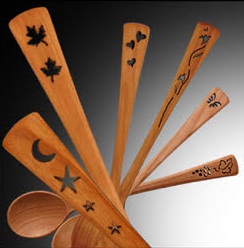 I first found MoonSpoons in a handmade crafts store and bought one of their wooden tongs because I love the nature-inspired designs: stars, the moon, leaves, flowers and more. Their new line features designs based in architectural elements. Their spoons and other utensils are made in Kempton PA of solid cherry wood native to Pennsylvania, New York, and New Jersey. They “finish” their utensils with a food grade mineral oil but spoons can also be purchased “unfinished”.
I first found MoonSpoons in a handmade crafts store and bought one of their wooden tongs because I love the nature-inspired designs: stars, the moon, leaves, flowers and more. Their new line features designs based in architectural elements. Their spoons and other utensils are made in Kempton PA of solid cherry wood native to Pennsylvania, New York, and New Jersey. They “finish” their utensils with a food grade mineral oil but spoons can also be purchased “unfinished”.
Allegheny Treenware
 A large selection of wooden kitchen utensils for everyday use. “All products are MADE IN THE USA, with quality West Virginia hardwoods that, if taken care of, will serve your cooking needs for years to come. Spoons, measuring cups and spoons, forks, knives ,strainers, flippers, serving utensils, spreaders, stirrers, salad utensils, tongs, and much more. Good, sturdy, simple, useful designs.
A large selection of wooden kitchen utensils for everyday use. “All products are MADE IN THE USA, with quality West Virginia hardwoods that, if taken care of, will serve your cooking needs for years to come. Spoons, measuring cups and spoons, forks, knives ,strainers, flippers, serving utensils, spreaders, stirrers, salad utensils, tongs, and much more. Good, sturdy, simple, useful designs.
Naked Botanicals Apothecary
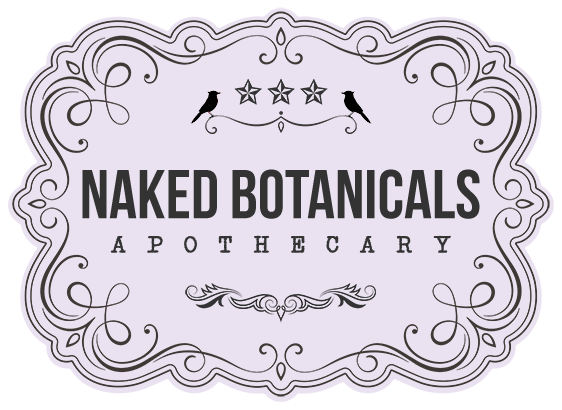 Insect repellent made from organic ingredients, “field-tested to repel mosquitoes, ticks and biting insects for up to 4-8 hours YET FEELS LIKE YOU’RE WEARING NOTHING. We take a bold, citrus bouquet of lemongrass, citronella plus energizing peppermint then round it out with woody lavender and cedarwood notes to create a naturally-occurring insect repellent in a signature intoxicating scent. Yum.Not only does it create a Cloak of Invisibility against biting insects, but the witch hazel-based elixir also refreshes and purifies your skin in high heat and humidity. ”
Insect repellent made from organic ingredients, “field-tested to repel mosquitoes, ticks and biting insects for up to 4-8 hours YET FEELS LIKE YOU’RE WEARING NOTHING. We take a bold, citrus bouquet of lemongrass, citronella plus energizing peppermint then round it out with woody lavender and cedarwood notes to create a naturally-occurring insect repellent in a signature intoxicating scent. Yum.Not only does it create a Cloak of Invisibility against biting insects, but the witch hazel-based elixir also refreshes and purifies your skin in high heat and humidity. ”
Ancient Organics
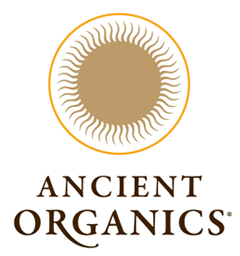 Ghee “unlike any other you will find on the market today. We take great care and consideration in the ingredient selection and preparation method.” Small batches cooked over an open flame, produced in a peaceful and mantra-infused kitchen, made under the influence of the bright and waxing moon to amplify the elemental healing qualities and taste of ghee. “We make our ghee from the unique dairy of Northern California. The native wildflowers and sweet grasses of the coastal prairie provide a terroir unlike any other part of America. We are committed to sourcing our dairy from the grass fed and pastured cows of this region. We produce each and every month to highlight the changes in pasture as reflected in the cows diet and celebrate the seasonal changes in the butter and ultimately our ghee.”
Ghee “unlike any other you will find on the market today. We take great care and consideration in the ingredient selection and preparation method.” Small batches cooked over an open flame, produced in a peaceful and mantra-infused kitchen, made under the influence of the bright and waxing moon to amplify the elemental healing qualities and taste of ghee. “We make our ghee from the unique dairy of Northern California. The native wildflowers and sweet grasses of the coastal prairie provide a terroir unlike any other part of America. We are committed to sourcing our dairy from the grass fed and pastured cows of this region. We produce each and every month to highlight the changes in pasture as reflected in the cows diet and celebrate the seasonal changes in the butter and ultimately our ghee.”
Aloha Organic Fruit
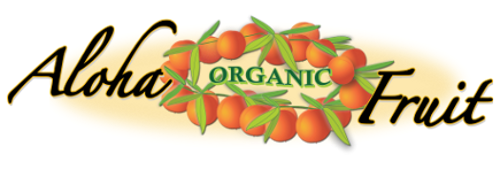 Though the name sounds Hawaiian, this is actually an organic peach farm in Colorado, that brings the “aloha” tradition of putting their hearts into careful stewardship for good health of the land, life and water. They grow 14 varieties of organic peaches, which allows them to harvest continuously from late June through mid-September. They sell only Colorado-grown USDA certified organic fruit.
Though the name sounds Hawaiian, this is actually an organic peach farm in Colorado, that brings the “aloha” tradition of putting their hearts into careful stewardship for good health of the land, life and water. They grow 14 varieties of organic peaches, which allows them to harvest continuously from late June through mid-September. They sell only Colorado-grown USDA certified organic fruit.
How I Removed Mystery Odor from Apartment

Last week I wrote about how I helped a client furnish their new apartment with toxic free furniture.
This week I want to tell you how we removed a very strong odor from the apartment, even though we couldn’t determine exactly what it was.
It seemed to me that it was some kind of citrus oil-based product and I thought it had been used on the wood floors.
My client hired a cleaning lady to work with me. She brought a “steam mop” and we used a brand new set of clean pads to mop the floor so as to not bring any odors in from other places. This worked really well just by itself to reduce the odor, but it did not eliminate it completely.
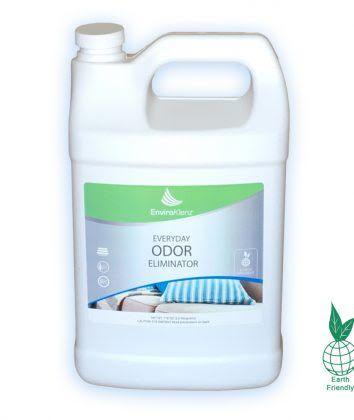 Then we used EnviroKlenz Everyday Odor Eliminator according to the instructions on the bottle. We mixed it with water in a spray bottle and sprayed it all over the floors. We waited 15 minutes, and then used the steam mop again to remove it. This greatly lessened the odor.
Then we used EnviroKlenz Everyday Odor Eliminator according to the instructions on the bottle. We mixed it with water in a spray bottle and sprayed it all over the floors. We waited 15 minutes, and then used the steam mop again to remove it. This greatly lessened the odor.
Then we did the whole process again.
Each time the odor was less and less.
We also did this procedure in a closet that had a perfume smell and it worked there too.
False Claim From Mattress Maker
What’s wrong with this picture?
There’s something known as “false and misleading advertising” and it’s all over this snip from the Tuft & Needle website.
First, it gives the impression that Tuft & Needle mattresses are nontoxic and even substantiates that claim by telling you that they meet the GREENGUARD GOLD and OEKO-TEX STANDARD 100 certifications.
But Tuft & Needle mattresses still contain toxic chemicals. I’ll tell you how I know in a minute.
But first, while they are certified, I couldn’t find one word on their website about their materials.
And while they meet the GREENGUARD GOLD and OEKO-TEX STANDARD 100, these standards do not test for all chemicals. The bigger problem, however, is their standards are not very stringent. So it’s very easy to pass the standard.
I’m often surprised at some of the products that pass the current GREENGUARD GOLD standard. Since GREENGUARD became part of Underwriters Lab, their standards have changed. Mattresses are now given GREENGUARD GOLD certifications that contain materials which I cannot approve, such as polyurethane foam, chemical flame barriers, and, in crib mattresses, PVC covers that emit phthalates.
Tuft & Needle is NOT the first mattress to be given the GREENGUARD GOLD certification. That occurred years ago. They were perhaps the first mattress to get the GREENGUARD GOLD certification in the mattress-in-a-box category, but that’s not what they say.
But here’s what really makes this claim false and misleading.
And here’s a video of chemical off gassing of Casper mattress.
And here’s another video measuring the TVOCs of a Nest mattress.
Now all three of these videos are measuring emissions from a brand new mattress that has been in a plastic bag. Those emissions are very concentrated. But they do show there are emissions. And anyone can get a TVOC meter and measure the emissions from these mattresses.
A couple of weeks ago I opened two Happsy mattress-in-a-box mattresses and there were no emissions. I had a TVOC meter in my hand and the TVOC reading in the room didn’t change when I opened the mattress packaging and laid the mattresses on the bed.
T&N hasn’t raised the standards, as they claim. That claim belongs to Happsy, the first certified organic mattress in the mattress-in-a-box category. And certified organic is less toxic than GREENGARD GOLD. That’s a fact.
Brands With BPA-Free Cans
There are now 31 brands using BPA-free cans.
Thanks to Environmental Working Group for putting together this list:
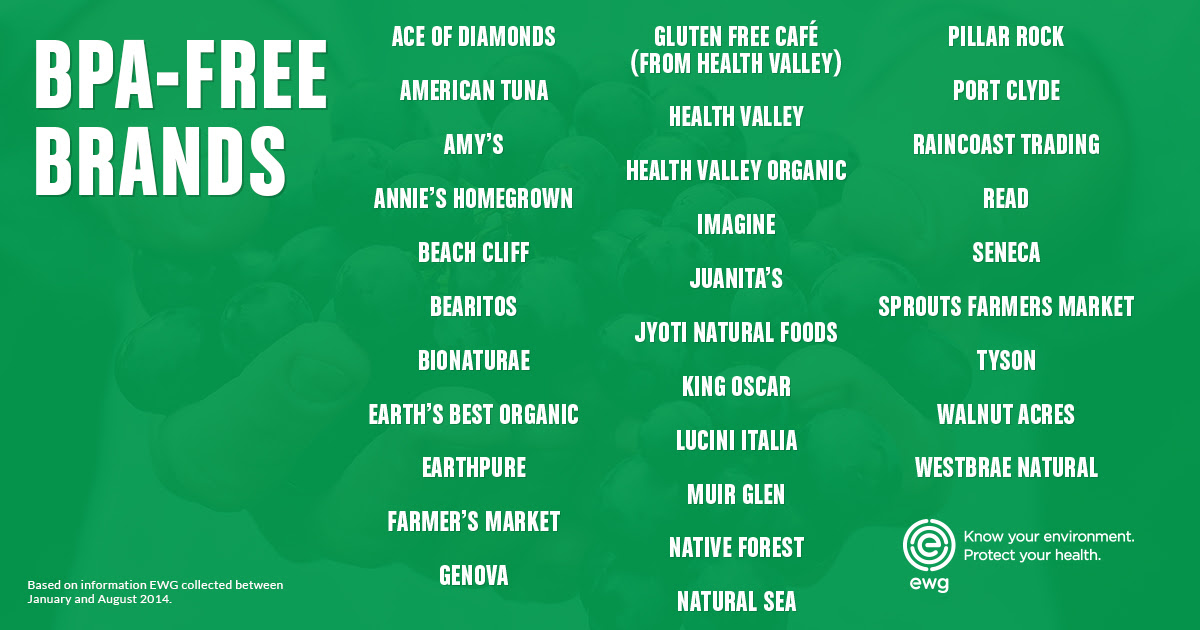
Hand Held Shower Heads

Question from Cathleen
Hi Debra,
Hi. Love your website & all the info.
I suffer from many illnesses & sensitvities, including MCS.
I am in desperate need of a new hand-held shower head, that is latex-free & preferably USA made.
Can you recommend a company or product? I tried a High Sierra shower head that met this criteria, but the water flow was just too forceful for my skin & vascular condition.
Thanks so much, and I can’t thank you enough for all the help you provide people like me!
Debra’s Answer
I have no way of knowing the water force of various hand held shower heads so…
Readers? Can you make a suggestion from your experience?
Cat Scratching Posts and Climbing Structures Made Without Carpet

Modular cat climbing structure made from paper at Katris
Question from MaryJo
Hi Debra,
I am concerned about the recent article in the New York Times about the link between flame retardants and the rise in feline hyperthyroidism.
I am trying to find scratching posts or cat climbing structures that are not made with carpet treated with flame retardants (or just plain awful synthetic carpet and glues).
I am wondering if you have come across anything about this.
Any leads most appreciated~!
Debra’s Answer
Here are some cat scratching posts made with wood and other natural materials:
This article suggests that you give your cat a natural tree log for a scratching post
And here are some cat climbing structures made with wood
There are a lot more. Just search on “natural cat scratching post” and “natural cat climbing structure” and you’ll find them.
Throw Pillows

Handwoven organic cotton decorative pillows stuffed with kapok from Coyuchi
Question from TA
Hi Debra,
I’m wondering what you recommend for throw pillows. I’d like to replace the old, synthetic ones we have.
What is the best option for the “insert” or fill that goes inside the pillow cover? It seems that finding an organic cover is the easier part. But what is the best affordable insert option?
I’ve considered shredded latex, but that could be lumpy and it can have a noticeable smell.
Wool would compress easily, I imagine.
I saw some very affordable ones with duck feathers on Ikea’s website and came to your site to check on the toxicity of duck feathers; since I don’t know where the feathers came from or how they’re processed, perhaps it’s best to pass on those? And getting well-processed duck feather pillows would probably be quite expensive.
I’d like to have a number of throw pillows, as well as floor pillows/cushions in a larger size. So I’d like something that won’t break the bank.
Debra’s Answer
The most resilient pillow filling I know of it kapok. And you can buy kapok pillow inserts with organic cotton shells.
FABRICADABRA: Kapok Pillow Inserts
Prices start at $21 and volume discounts are available for 12 or more.
If this doesn’t work for you, wool would be my second choice. I slept on wool pillows for years until I discovered kapok. But the do mat over time.
Experience With Avoiding PVC Medical Bags and Tubing?

Question from Colleen
Hi Debra,
I need to have a colonoscopy and may have to have other surgery. I have reactive airway disease and asthma which is triggered by vinyl shower curtains. They are made with DEHP which is also in IV bags, tubing, etc that the hospital uses.
Has anyone dealt with this? How did you get around it?
I have a list of DHEP-free and PVC-free medical supplies as alternatives but am not sure they’d work with me on it.
Any helpful advice? Thanks you! I meet with the doctor on Aug. 30, 2017.
Debra’s Answer
Readers? Any suggestions?
I fortunately have not had the need to experience this, so have nothing to offer.
But what comes to mind is perhaps Healthcare Without Harm can help you, or Practice Greenhealth. Both organizations advocate the removal of toxic chemicals from healthcare.
Furnishing A Toxic-Free Apartment
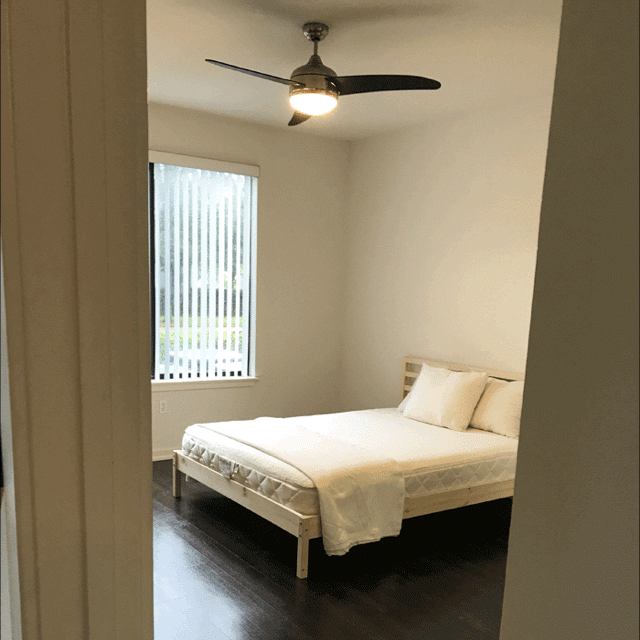
For the past few weeks a lot of my time has been occupied with helping a consulting client furnish a nontoxic apartment for her son, who has multiple chemical sensitivities (MCS).
She asked me to help her choose furniture, bedding, and air and water filters. I gave her some choices, and she chose the ones she wanted.
She kindly gave permission for me to share some photos with you and also tell you about the products. It was an opportunity for me to experience first hand some of the products I have been recommending that I hadn’t seen in person, and I want to share that experience with you, too.
In general I learned that what a difference there can be in the quality of products made from the same materials. Unfinished furniture pieces had variations in design and workmanship, organic cotton sheets from different places had variations in thread count, color, feel and quality.
Choosing nontoxic materials is the first step. Then there are many other factors that affect the quality of the product and it’s performance above and beyond the materials being nontoxic.
Below are my observations and comments on the items we chose.

IKEA BED FRAME
Ikea has a number of bed frames that are made of solid wood. The only difference is style. All of them are solid wood (with the exception of a metal bar that runs down the middle of the frame to hold the wood slats) and a few miscellaneous parts that hold the frame together. There are no glues or adhesives. There is a light acrylic finish that had no odor even as we took the pieces out of the box. This is the second IKEA bed frame I’ve experienced and both were free of outgassing from toxic chemicals. They are also fairly inexpensive. This is a good choice for a budget bed frame. My one caveat is that it will take you a couple of hours to put it together and it really needs two people. TARVA queen bed frame $179.
HAPPSY MATTRESS
I’ve been writing about the Happsy Mattress for some months now. Prior to their being available I saw samples of the materials, but even with everything I knew about it I wasn’t prepared for how truly remarkable and wonderful this mattress is.
First, it comes all rolled up in a very big box, wrapped in many layers of nontoxic polyethylene plastic.
While you are searching for how to get the mattress out, you find a little tab and a note that says “start here”. You pull the tab and find it it a little cutter that slides down the side of the mattress, opening the layers of plastic with ease, while the mattress is protected below by a piece of cardboard.
When you peel away the plastic the mattress springs to life like an inflatable life raft. With the familiar hiss, the Happsy mattress literally inhales air, and as it does so it unrolls itself until it is laying perfectly opened and inflated.
You do have to turn it over, but when you do, you see how very beautiful it is, with it’s lovely quilted color and different shades of organic cotton fabric on top and sides.
It had a slight odor of latex when first unwrapped, but that dissipated quickly.
Laying on it was heaven. If I didn’t already have a mattress I love I would buy a Happsy mattress immediately and sleep on it myself. Happsy Organic Mattresses queen $1199.
WHITE LOTUS HOME PILLOWS
My client purchased a bunch of pillows from in various sizes and softnesses. All were well-made and nontoxic. One of the pillows she bought was the pillow I sleep on, their kapok-filled pillow with invisible zipper that I still love after about two years of sleeping on it. The zipper allows you to add or subtract fill inside the pillow to meet your needs. White Lotus Home.
MAGNOLIA ORGANICS ORGANIC COTTON BLANKETS
These blankets are beautiful. Nice and thick and warm. They come in a big reusable cotton shoulder bag with a long strap. No plastic packaging. Magnolia Organics.
COYUCHI BED LINENS
Coyuchi really is the top of the line in organic bxdlinens. Very top quality. Coyuchi .
UNFINISHED WOOD DRESSER
My client purchased many pieces from a local unfinished furniture store. I’m not giving the name here because they don’t ship, but these items can be found at almost any local unfinished furniture store in your area. The pieces are solid wood, heavy, and very well crafted, like fine furniture.

COVERTABLE FUTON SOFA
This sofa is made from an organic cotton futon from White Lotus Home and covetable sofa frame from KD Frames. A convertible frame can be turned into a platform bed by lowering the back. The futon will be covered with an organic cotton cover.
I’ve visited the White Lotus Home workplace so the futon was excellent, as I expected.
The frame was unfinished Tulip Poplar, which is a great wood, but the frame was very difficult to put together and had poor instructions. Many of the pieces had rough ends that hadn’t been sanded.
This is my first experience with a convertible frame sofa and I would say that it needs a few big pillows to make the relative size of the back and seat more similar to a conventional sofa.
The total cost of a convertible sofa like this is around $1500-$1800, depending on the materials you choose for your futon.
UNFINISHED WOOD TV STAND AND CHAIRS
These came from the same local unfinished furniture store as the dressers mentioned above.The chairs are actually the very same chairs I have in my house. The pieces are solid wood, heavy, and very well crafted, like fine furniture.
IKEA WOOD TABLES
For the dining table and a desk my client purchase two pine tables from Ikea. Like the bed frame, the tables have a light acrylic finish that had no odor even as we took the pieces out of the box. Very easy to put together in less than an hour. INGO pine tables $69
WATER FILTERS
My client ordered drinking water and shower filters from Pure Effect Advanced Filtration on my recommendation. These are the water filters I use in my own home.
I learned a valuable lesson: make sure you can install the the water filter before you order it.
In our case, she had ordered an undersink filter that requires an auxillary faucet. But there was no hole in the countertop and this is a rental. So we had to return it. The countertop model is the correct choice here.
And in one of the bathrooms the showerhead was the “rain shower” type that come straight down from the ceiling. The shower filter leaked with this type of showerhead, so we’re going to have to get creative with the plumbing to install it. Pure Effect Advanced Filtration
AIR FILTERS
My client also ordered two EnviroKlenz Mobile Units for her 1400 square foot apartment.
While I used a mobile unit in my home for a short period as a test before recommending it, I had never experienced it in action in a situation where it was really needed. I had that opportunity in this apartment.
When I walked in, I was hit in the face with a strong odor of cleaning product. Larry smelled it too. So we turned on the mobile units full blast and in about two minutes the odor was completely gone. It really showed me how well these units work. Low speeds for every day, and then when you need a pollutant to be removed fast, the high speeds will clear the air quickly. I was very impressed. EnviroKlenz Mobile Unit Air Purifier

“Our son is severly ill with Lyme and MCS and we are coming down to Florida from New York for treatment.
We needed a healing sanctuary free of mold, toxics and odors. We found an apartment, but had no idea how to furnish it. Then by chance we found Debra. She was great from the beginning—guiding me,,educating me on what I needed. She knew where to buy everything. She did whatever we needed and went above and beyond. She went to the apartment, received deliveries and supervised the assembly of the furniture. Even though we had had an indoor air quality inspection done, Debra found formaldehyde and other odors when she went that would have been a disaster for us. We are so grateful for her assistance and highly recommend her. I don’t know what we would have done without her.” M.S. Long Island NY.
Aardvark
 I’m old enough to remember paper straws from the days before everything began to be made of plastic. So I was delighted to see the revival of the paper straw on this website. “ They’re Safe And FDA Food Grade Compliant Approved. Aardvark® only uses materials that are non-toxic, BPA-free and ELEMENTAL chlorine free. In fact, many straws made overseas claim to use safe inks, but the colorants and the processes used to dry the inks are anything but safe. Aardvark® doesn’t use un-safe dyes or materials in our straws, and we have had independent, 3rd party testing done to prove it. We’re proud to say that Aardvark paper straws are the strongest, longest lasting on the market. All other paper straws on the market are made in China. But Aardvark straws are 100% Made in the USA — and they always have been. Ours is the original paper straw, based on a design patented by Marvin Stone in 1888. ”
I’m old enough to remember paper straws from the days before everything began to be made of plastic. So I was delighted to see the revival of the paper straw on this website. “ They’re Safe And FDA Food Grade Compliant Approved. Aardvark® only uses materials that are non-toxic, BPA-free and ELEMENTAL chlorine free. In fact, many straws made overseas claim to use safe inks, but the colorants and the processes used to dry the inks are anything but safe. Aardvark® doesn’t use un-safe dyes or materials in our straws, and we have had independent, 3rd party testing done to prove it. We’re proud to say that Aardvark paper straws are the strongest, longest lasting on the market. All other paper straws on the market are made in China. But Aardvark straws are 100% Made in the USA — and they always have been. Ours is the original paper straw, based on a design patented by Marvin Stone in 1888. ”

